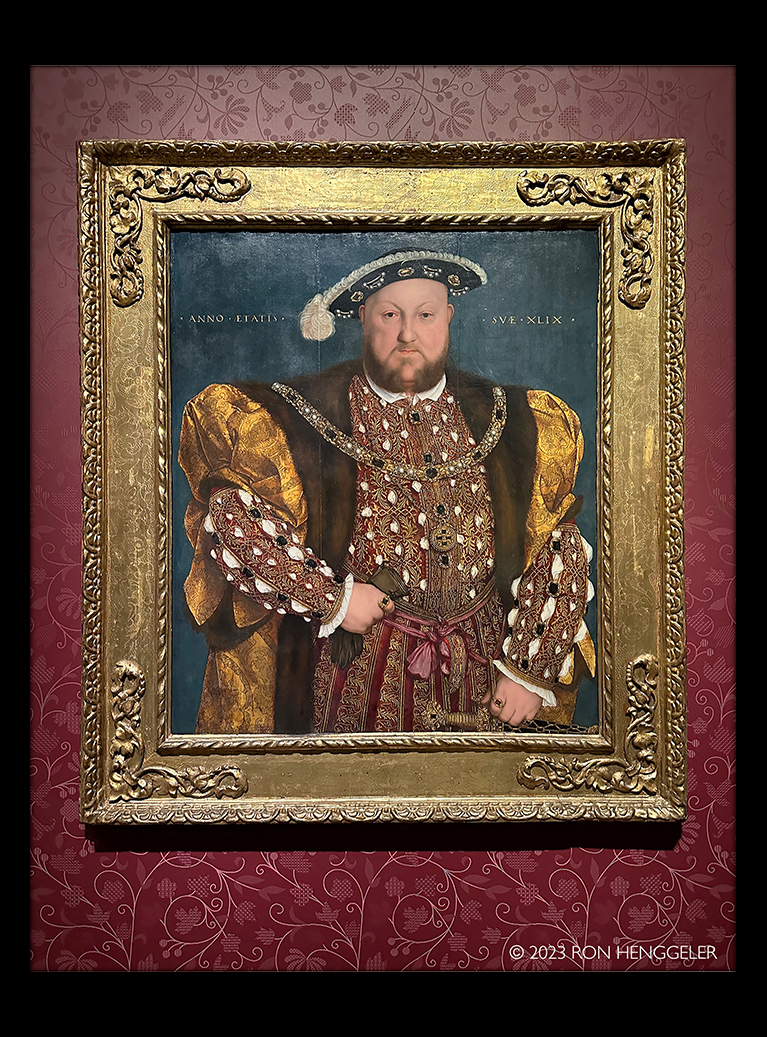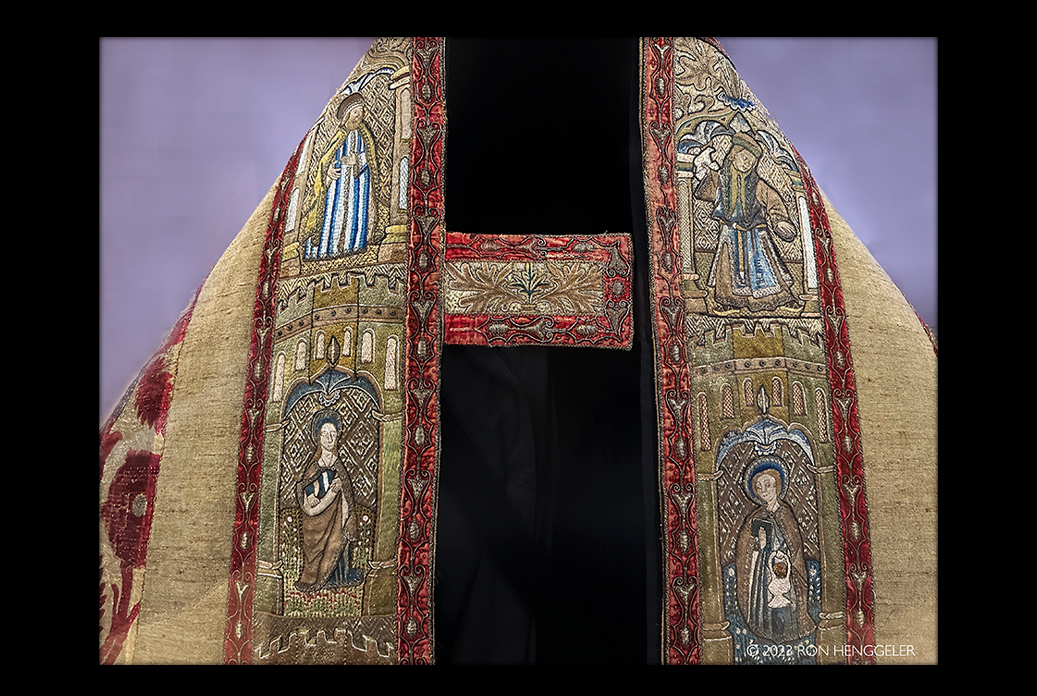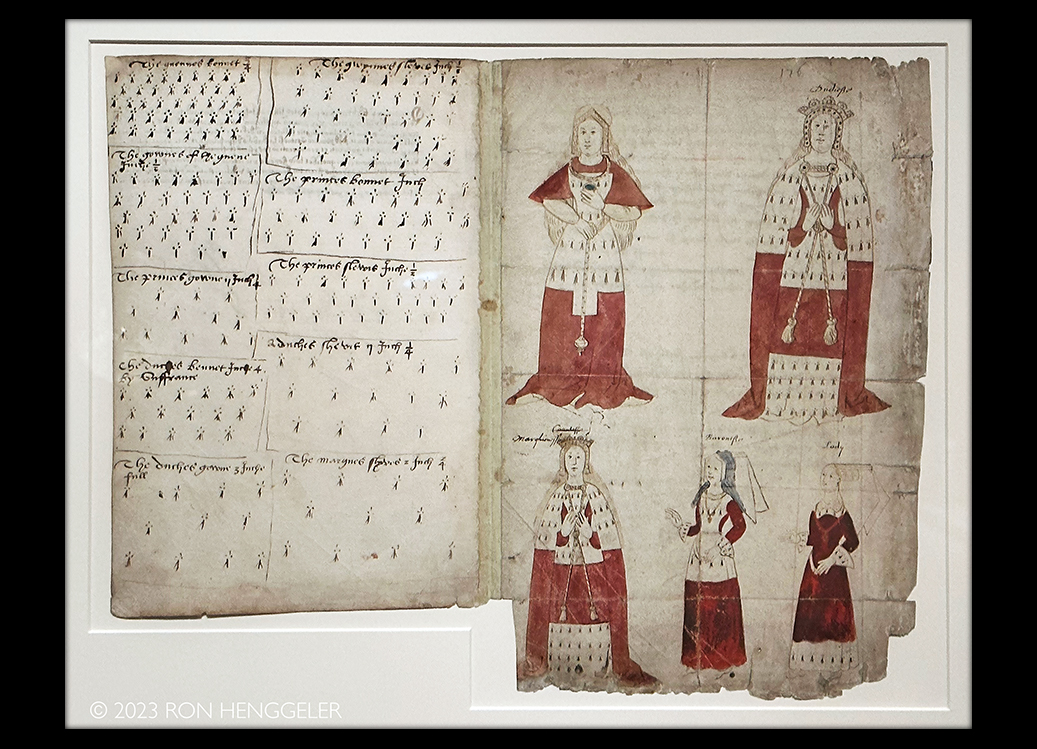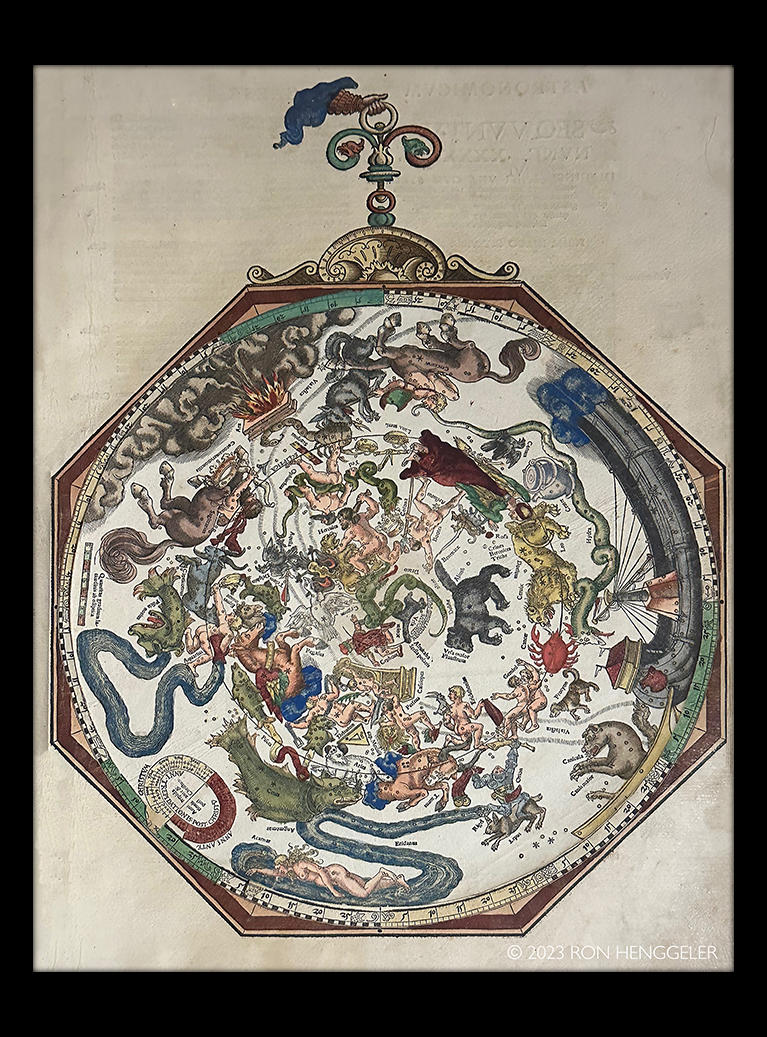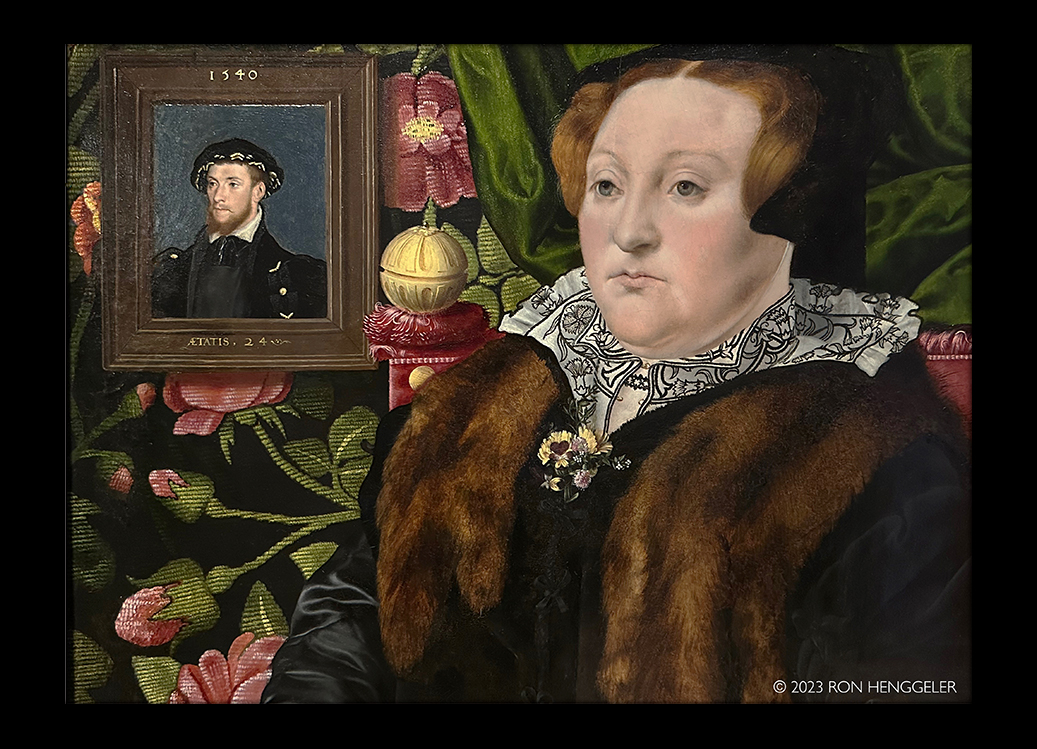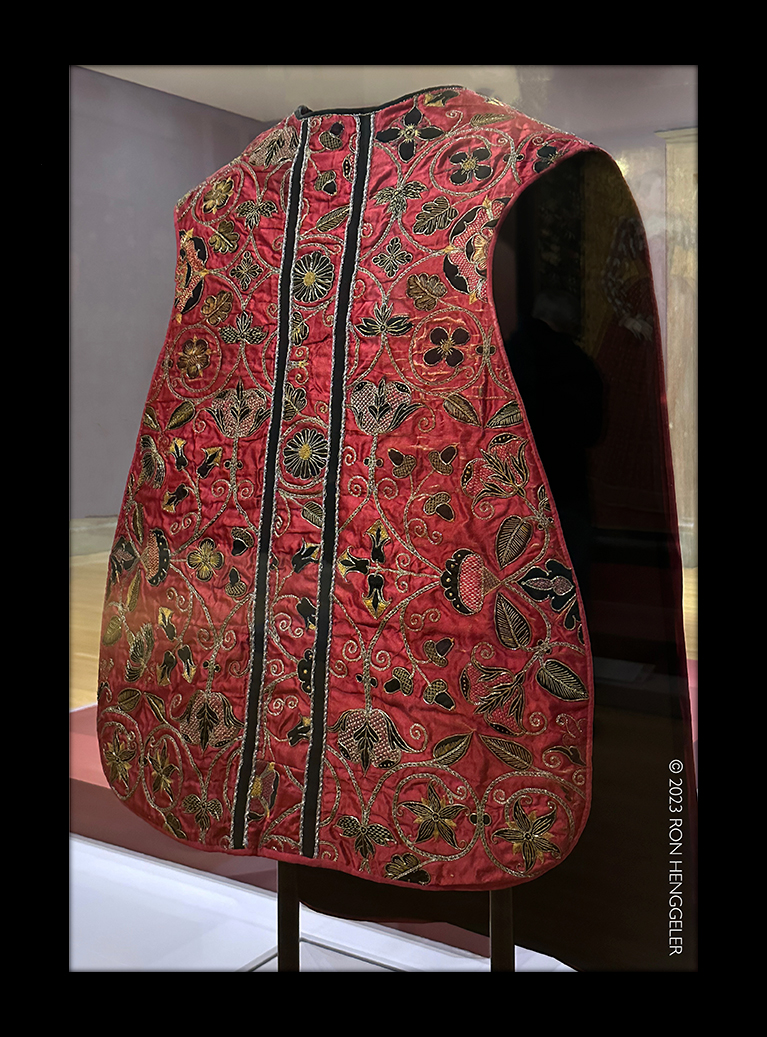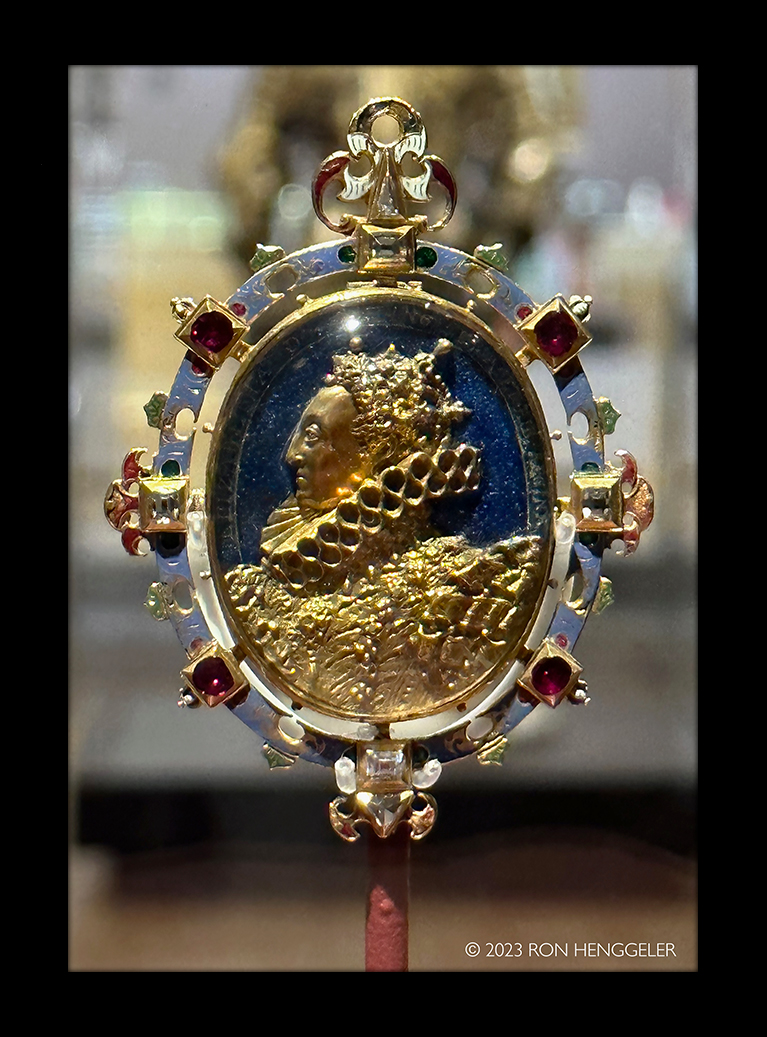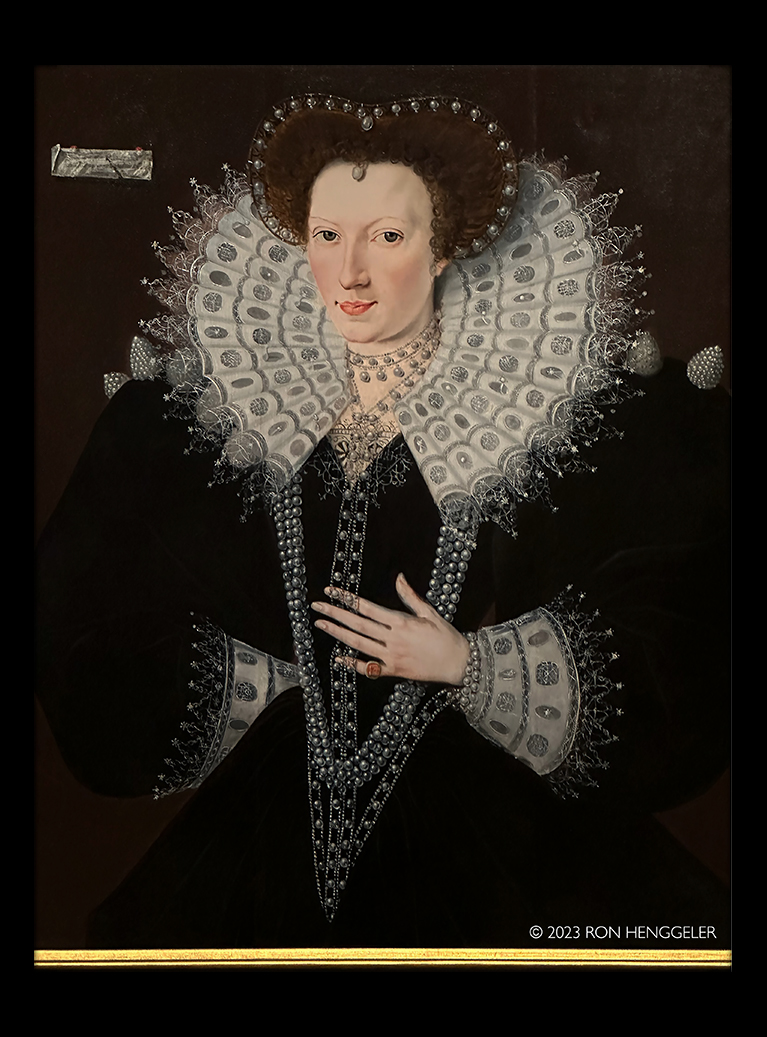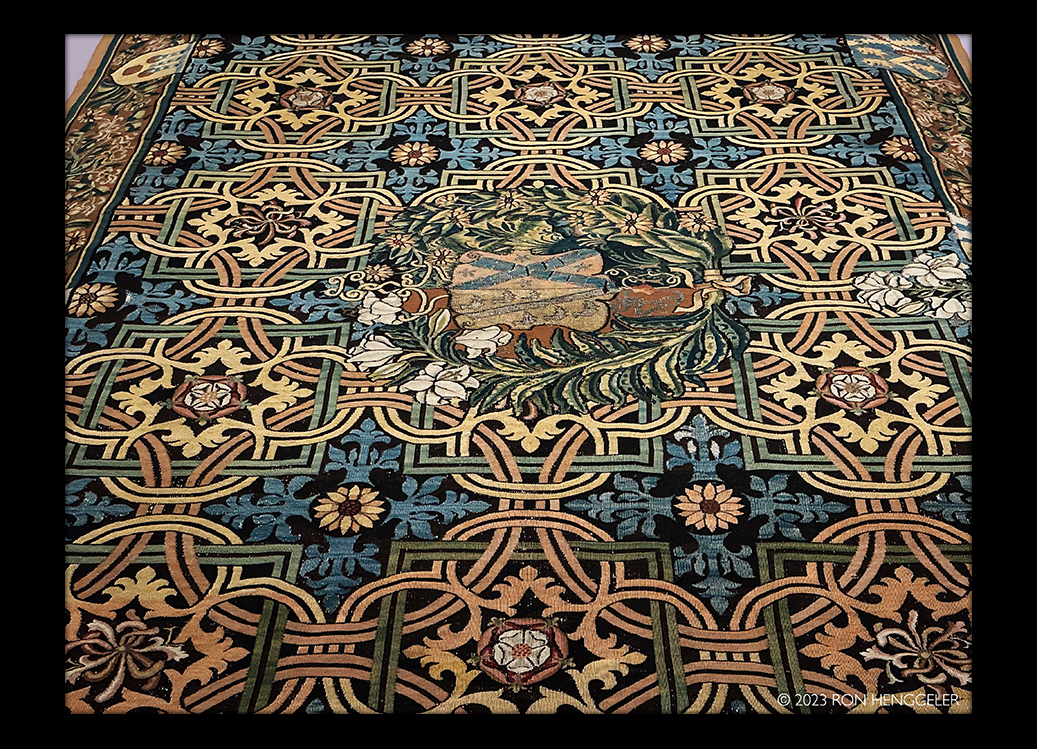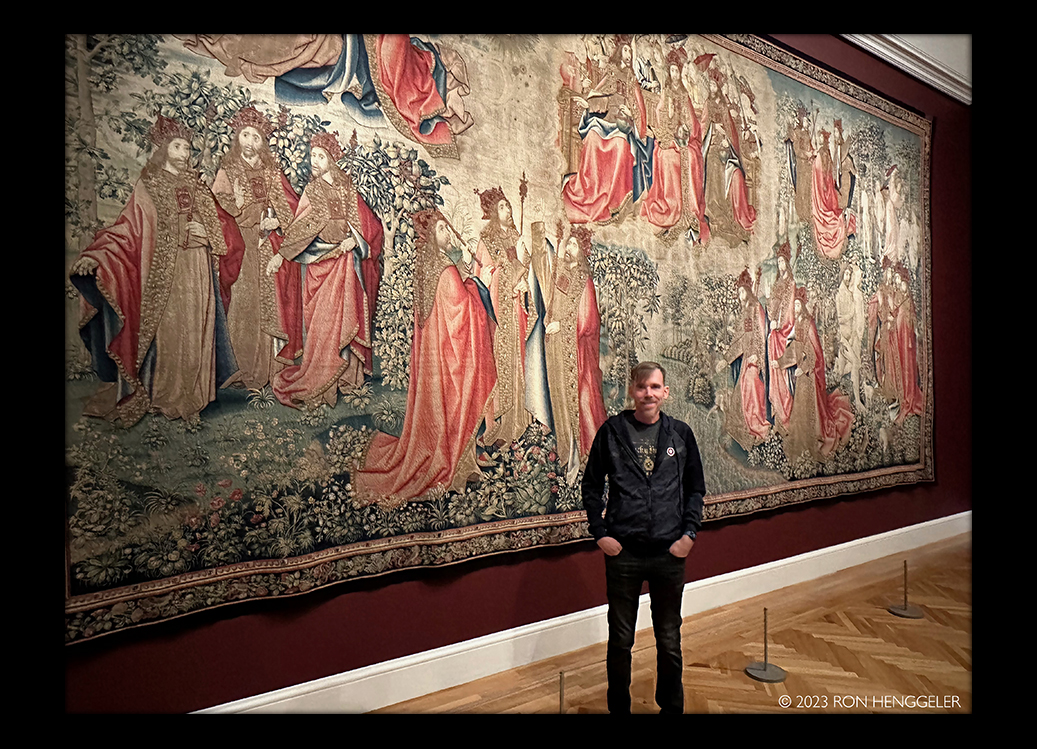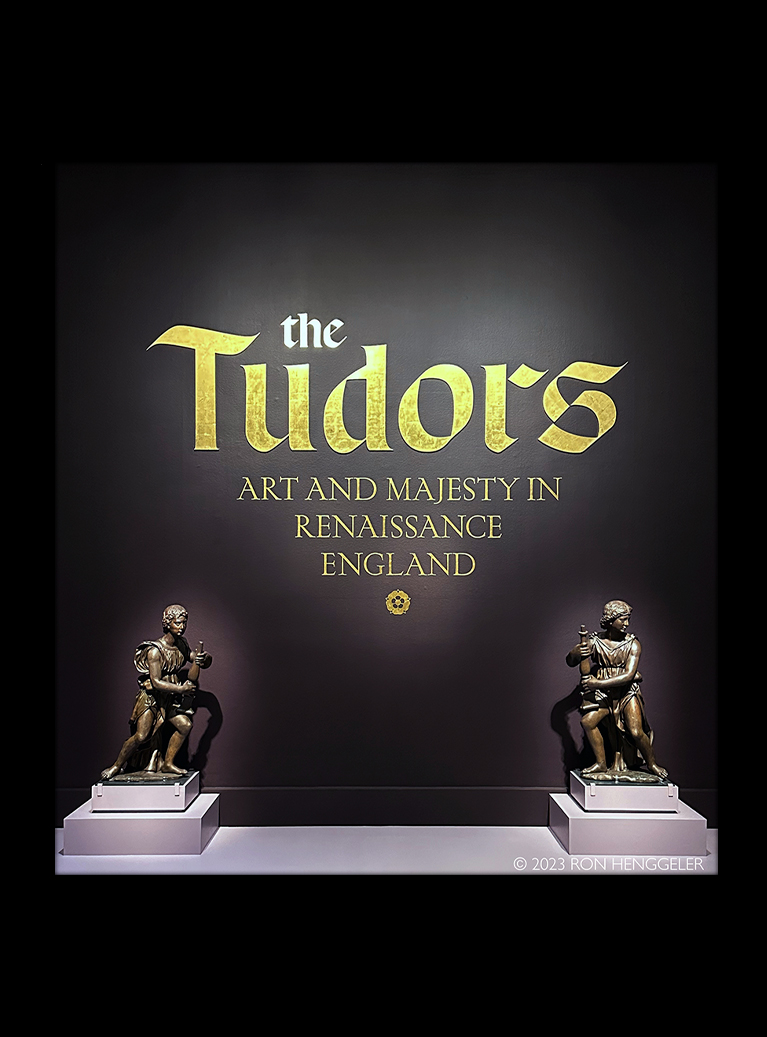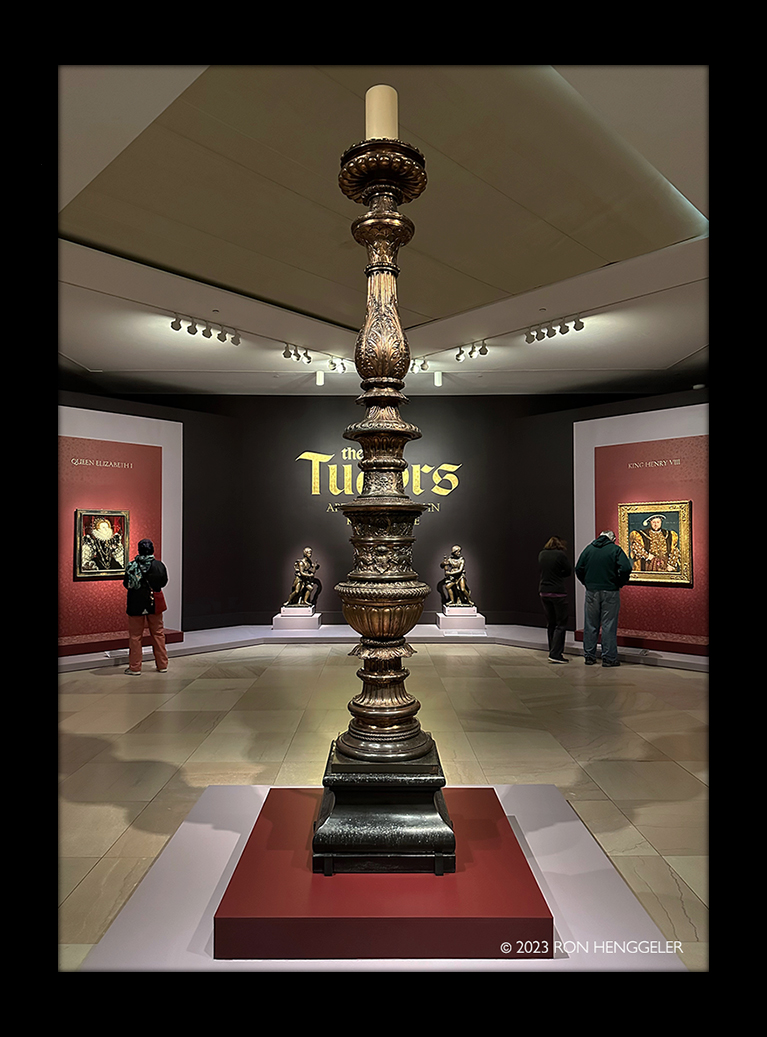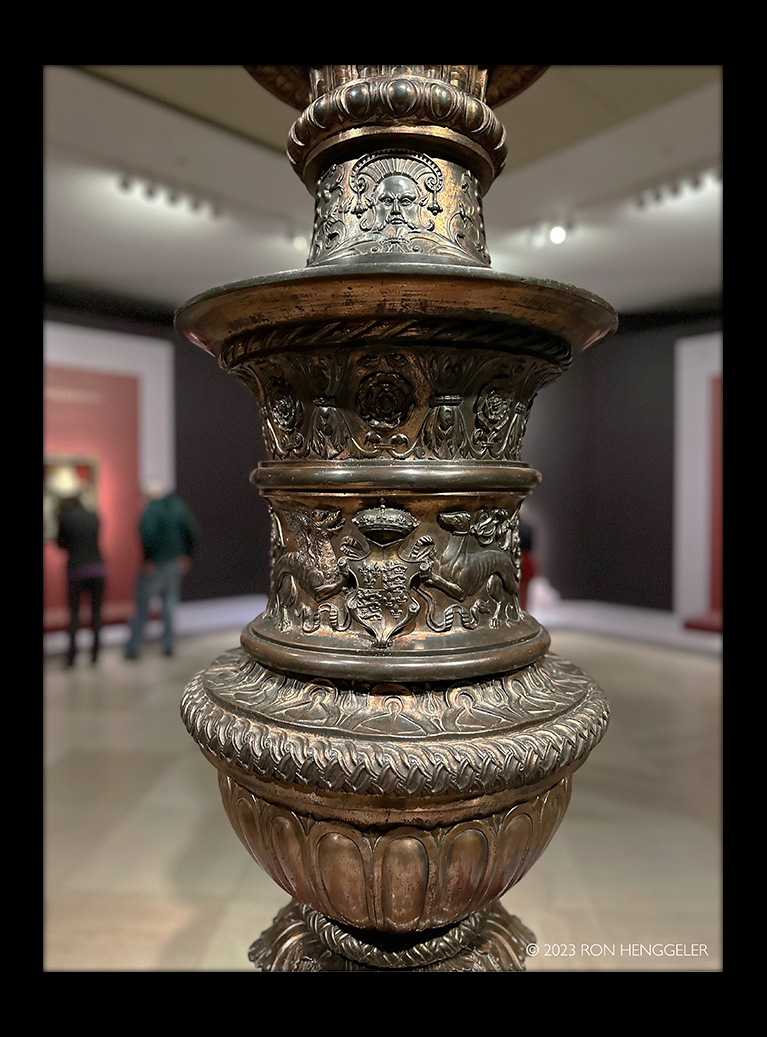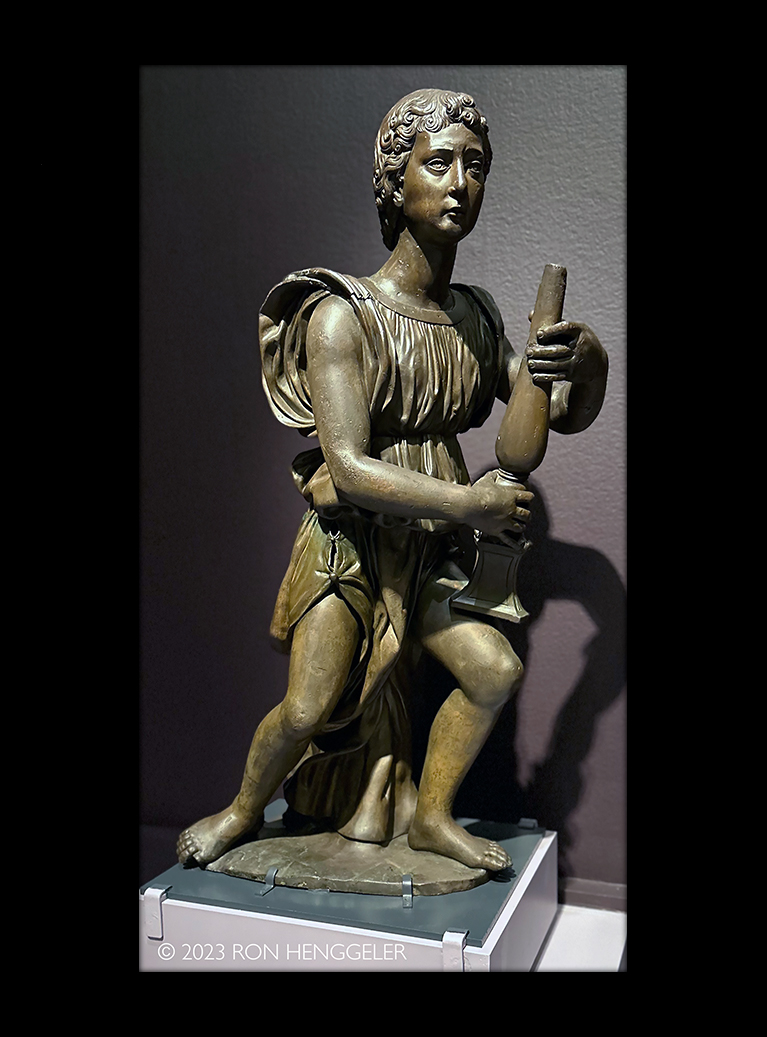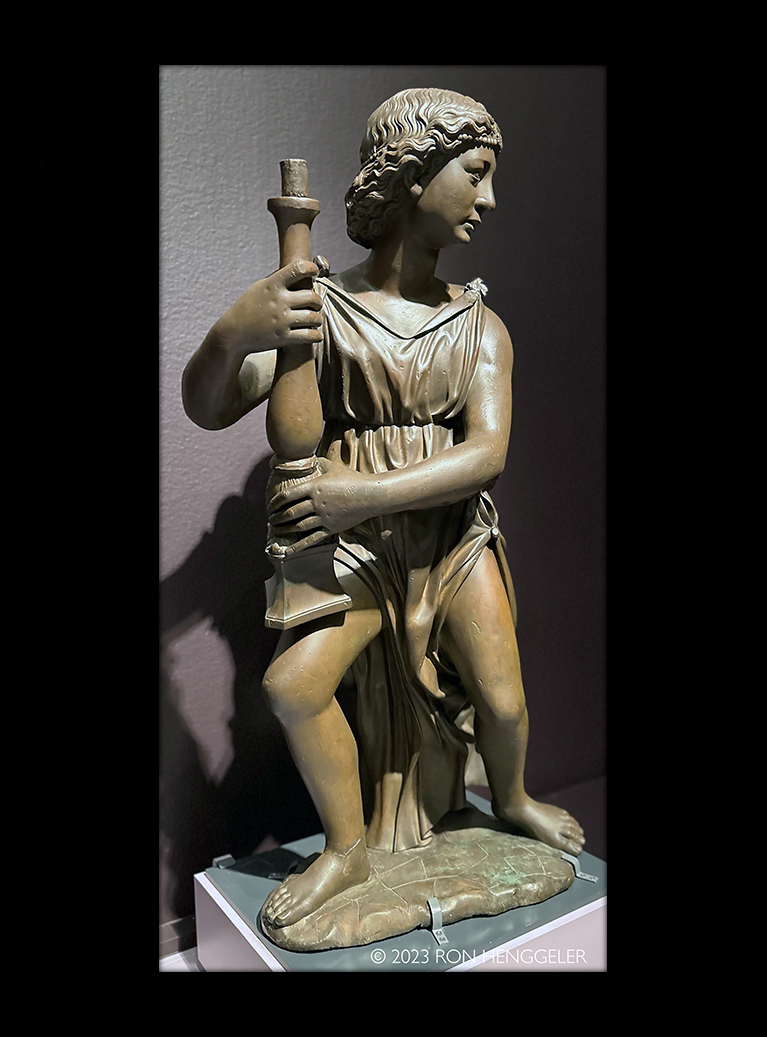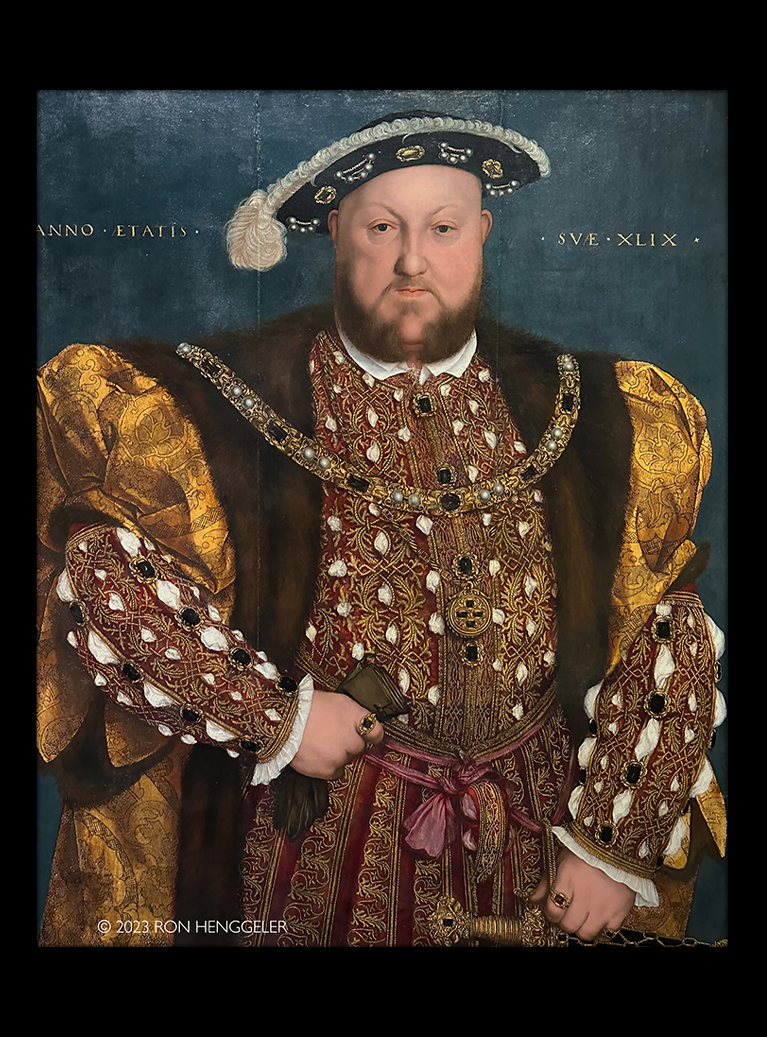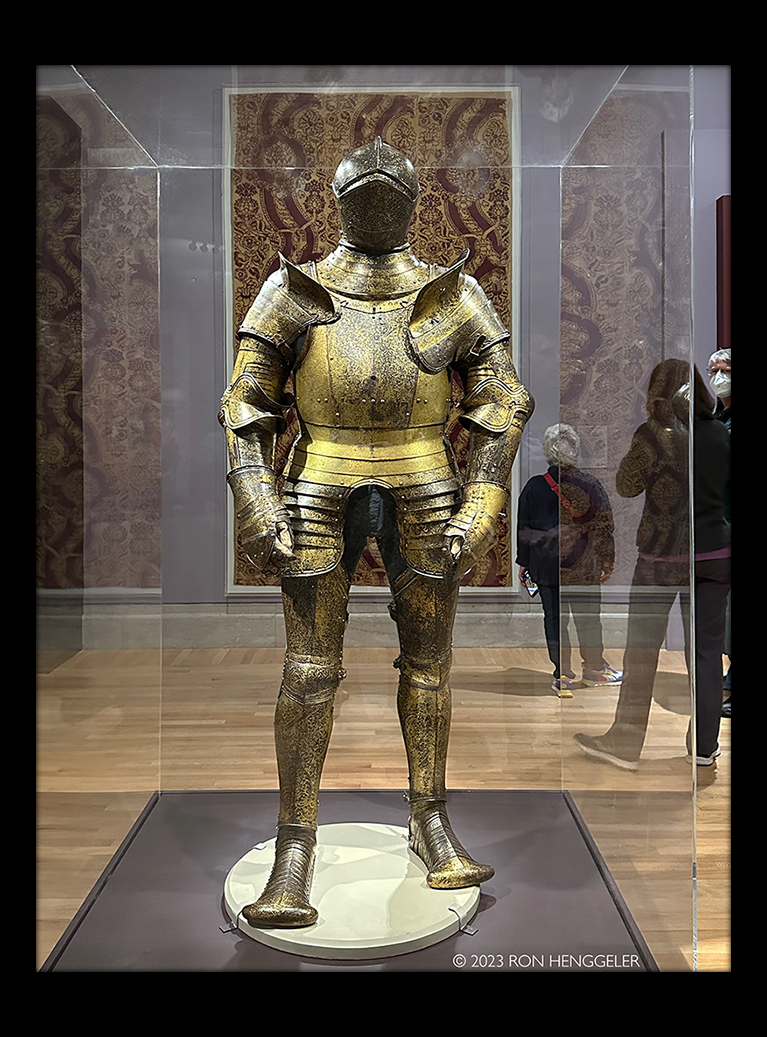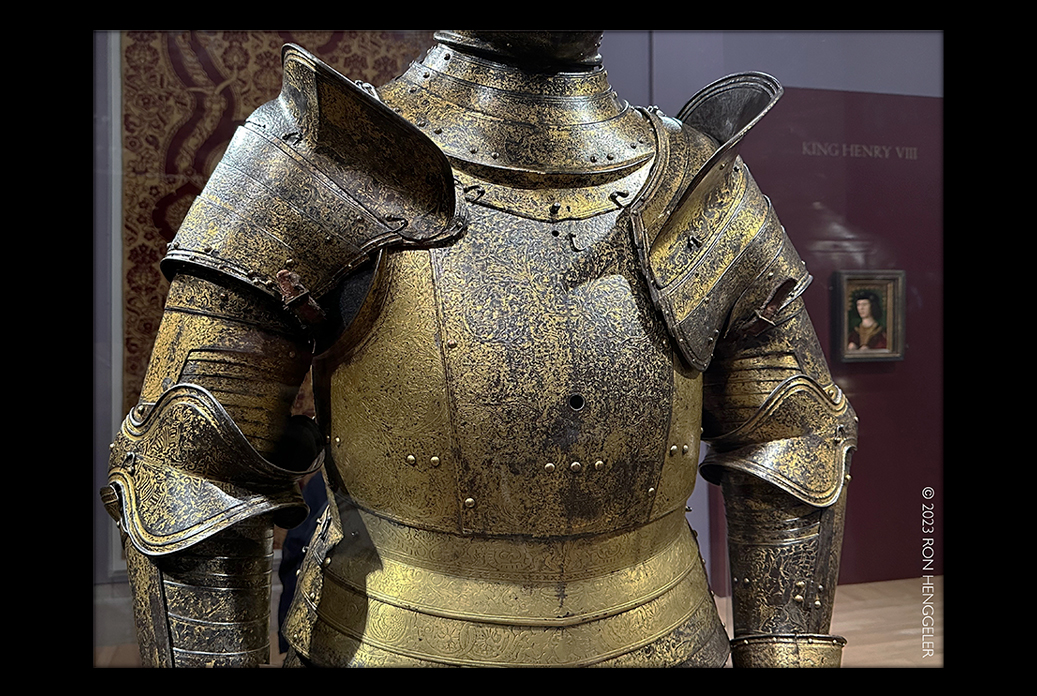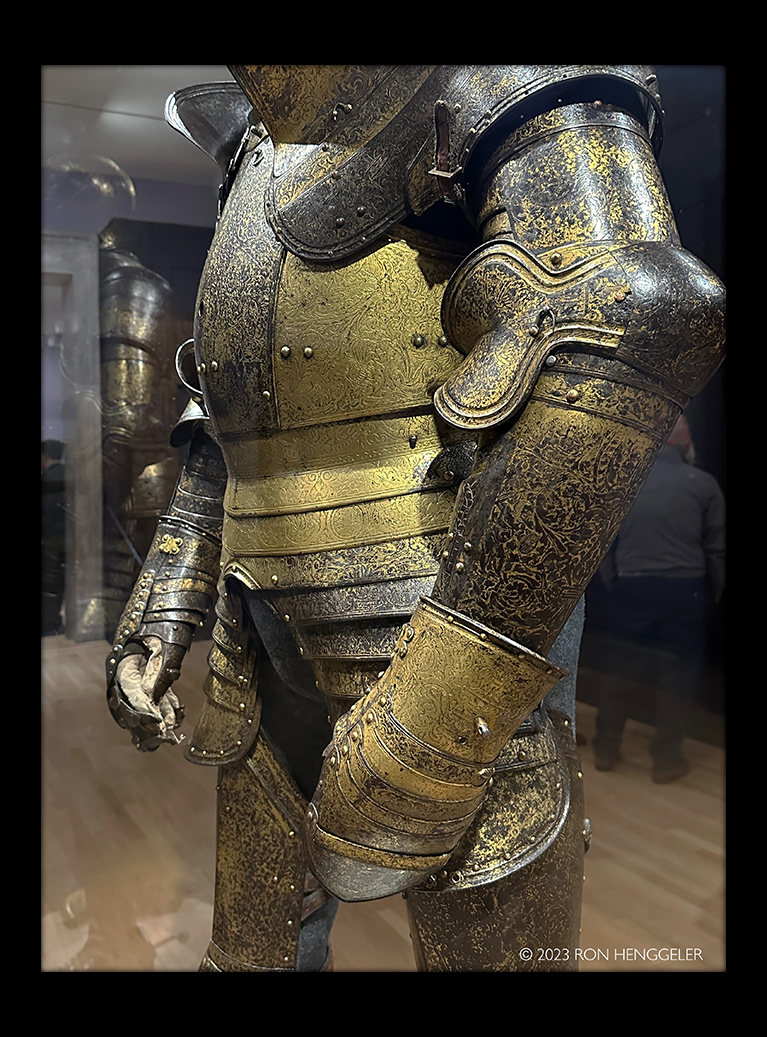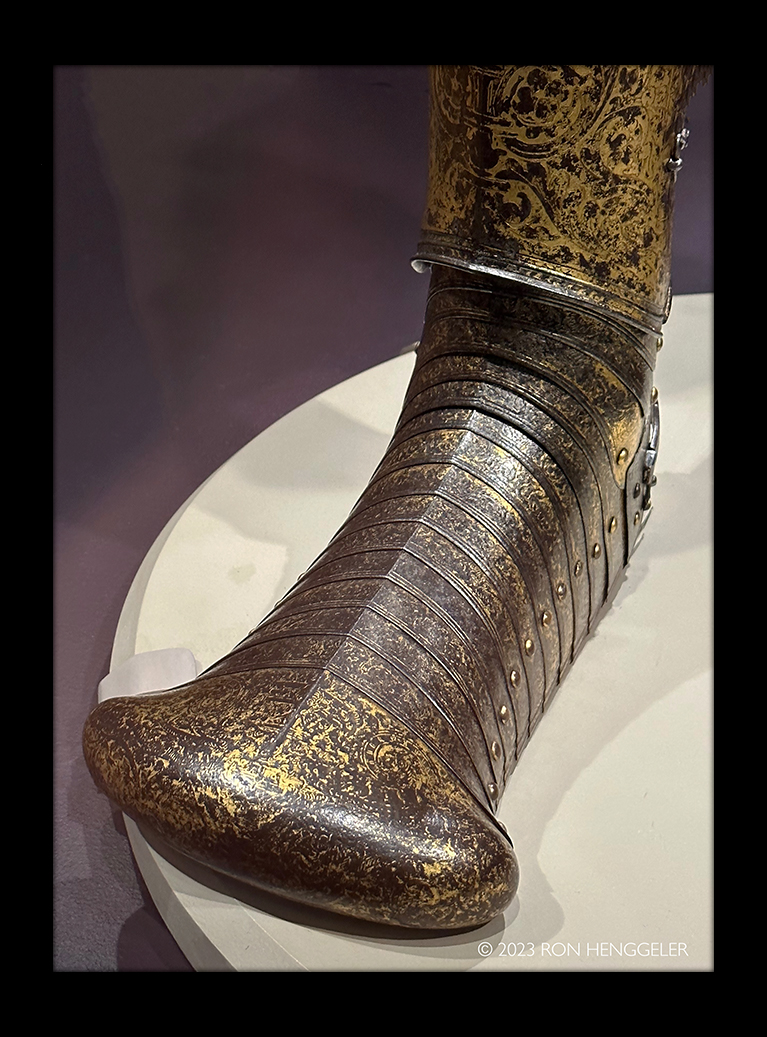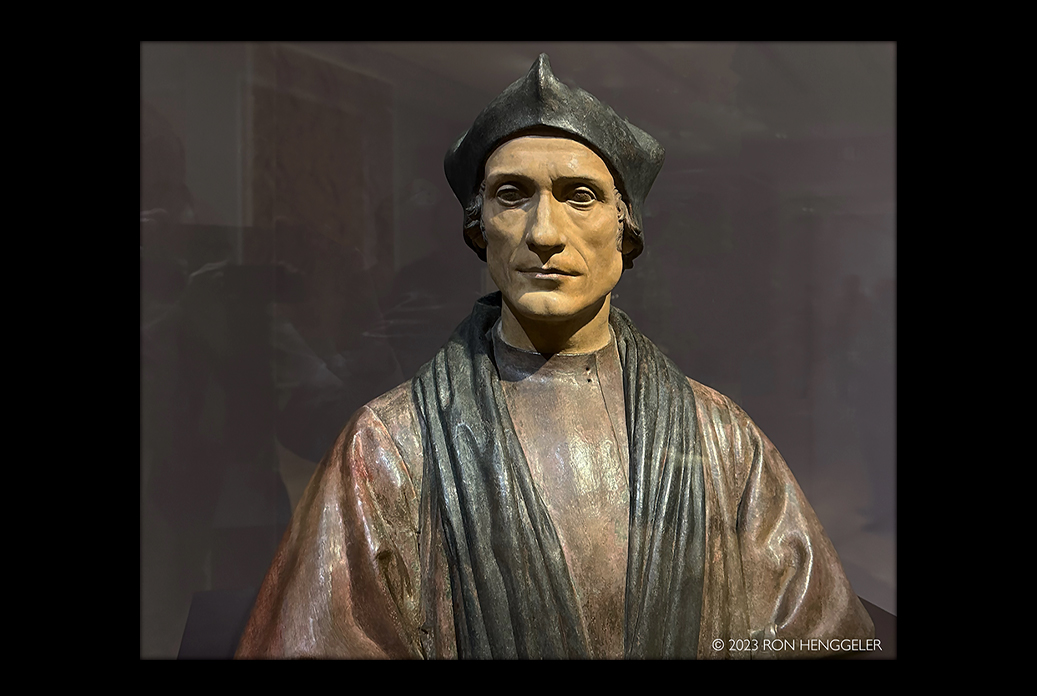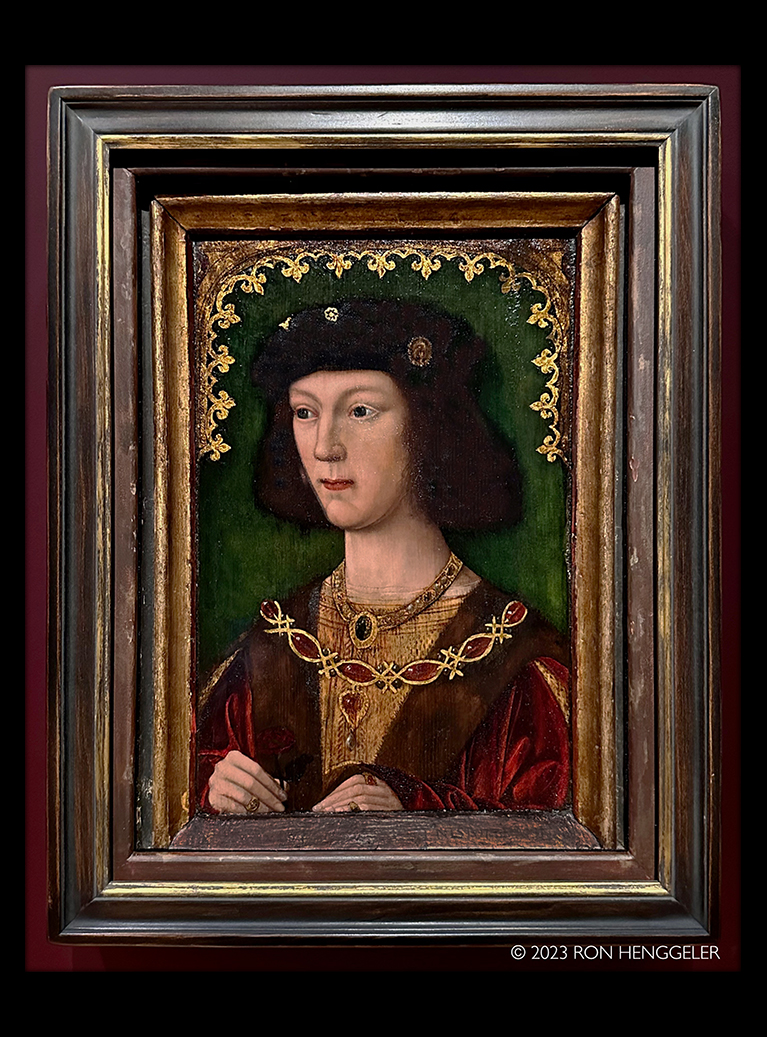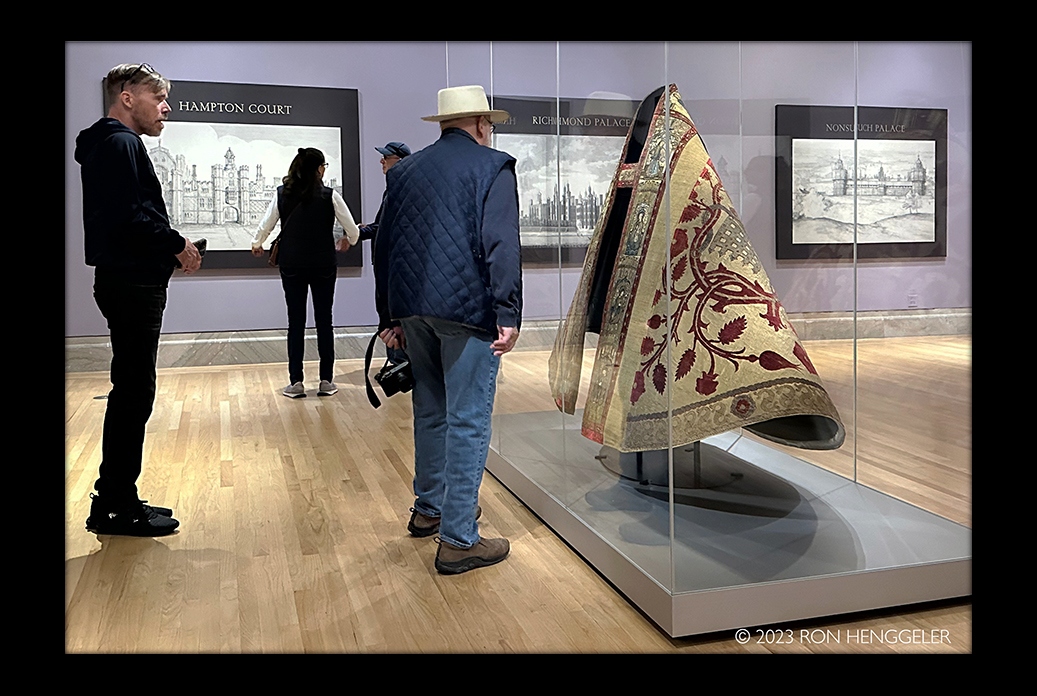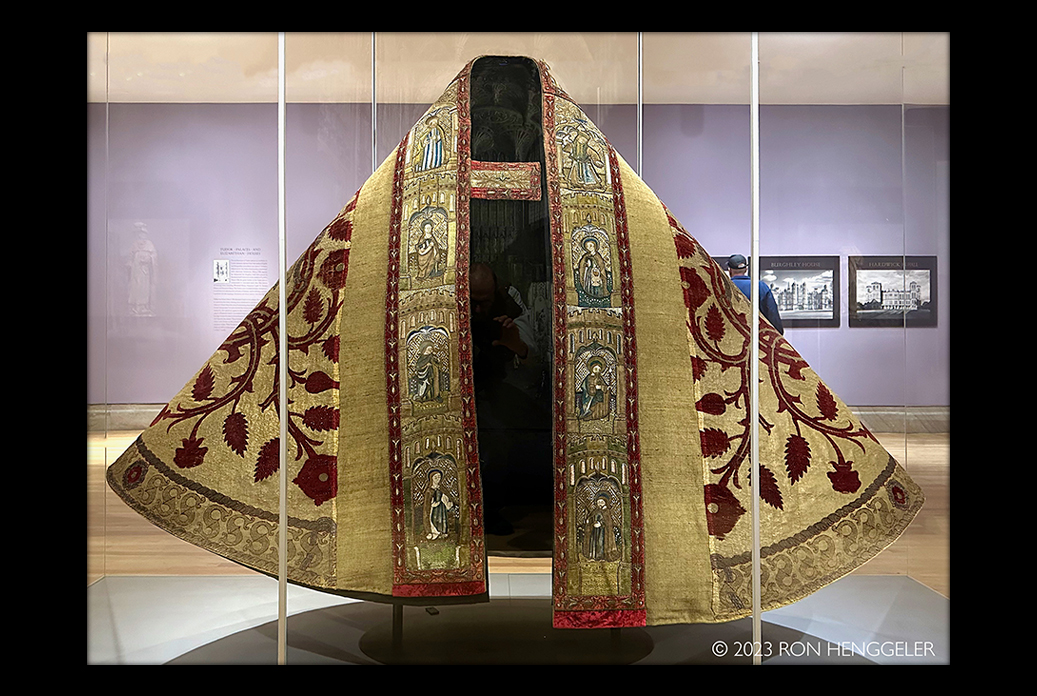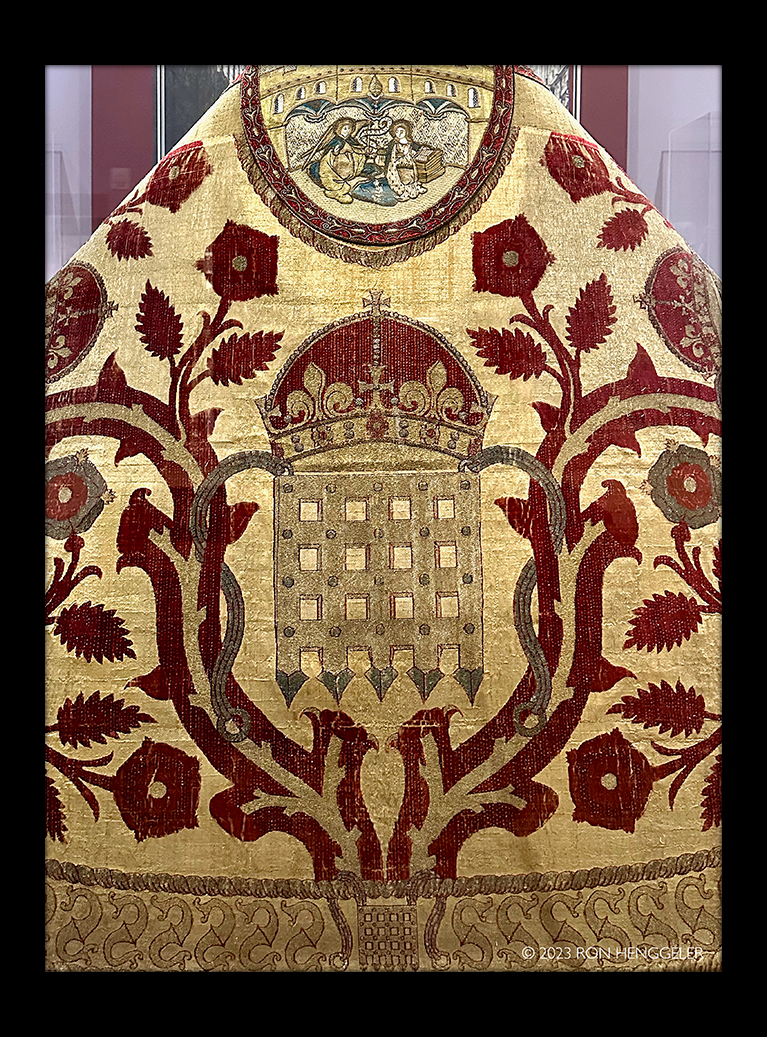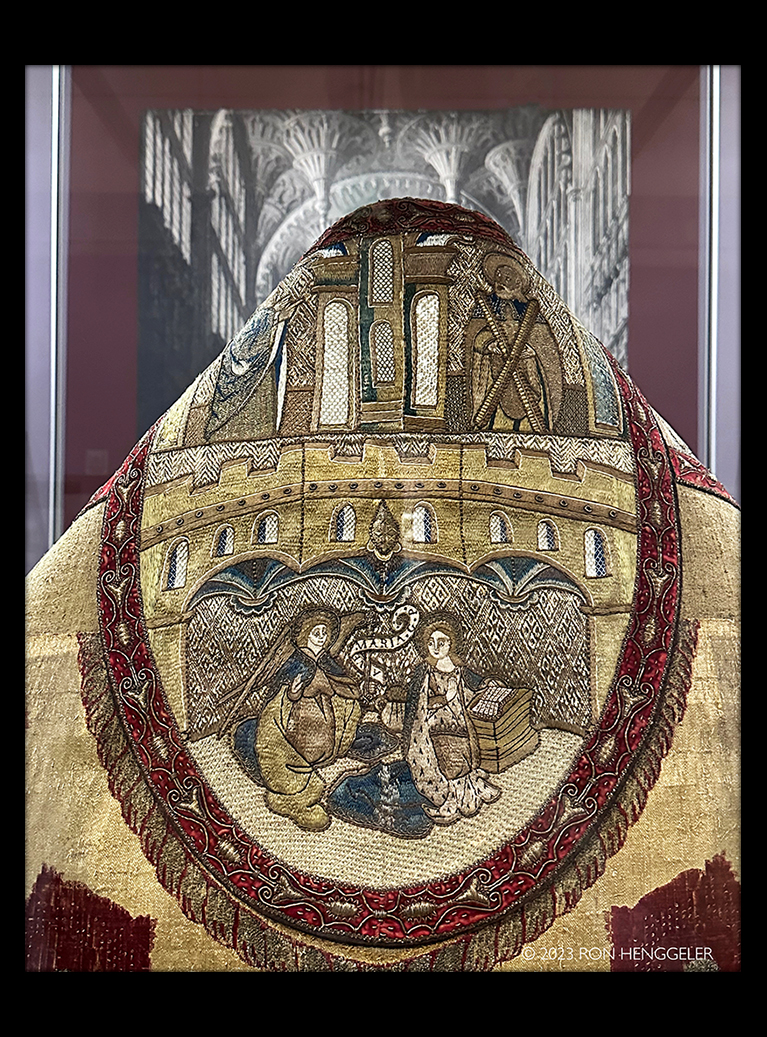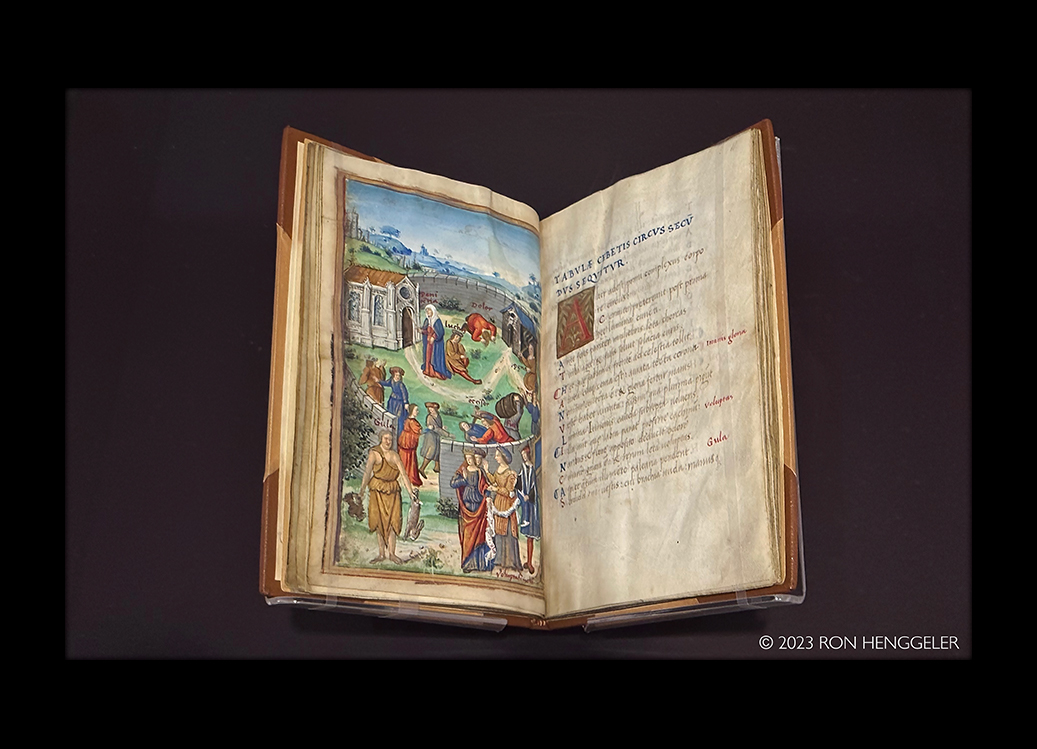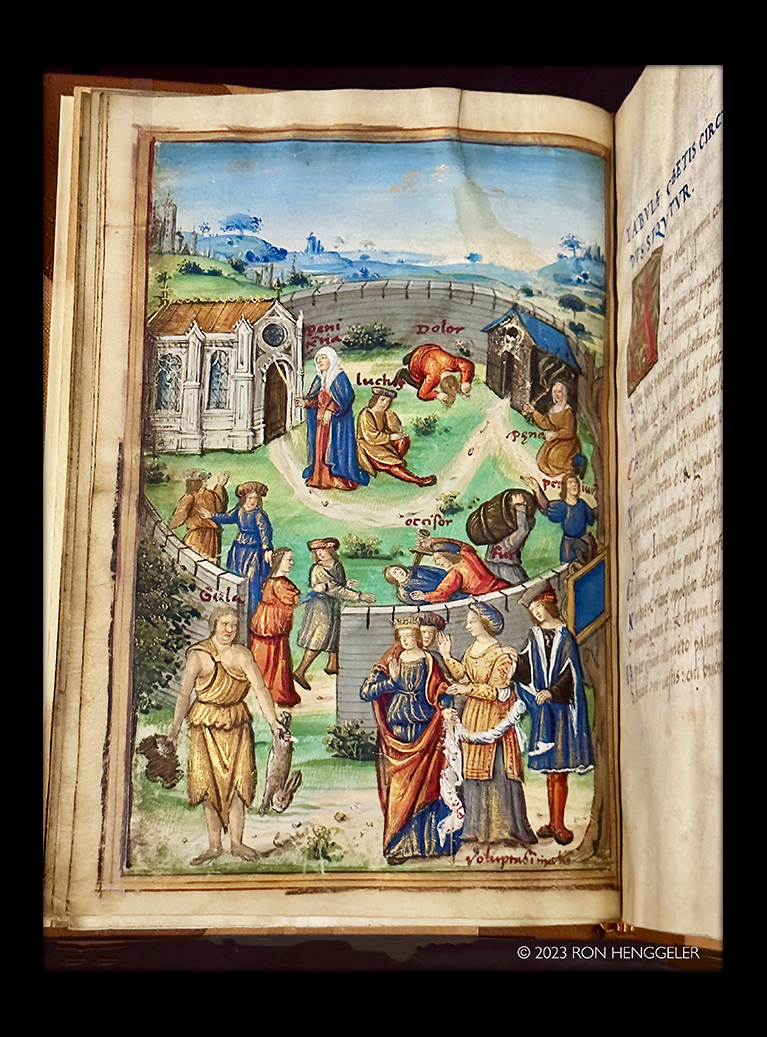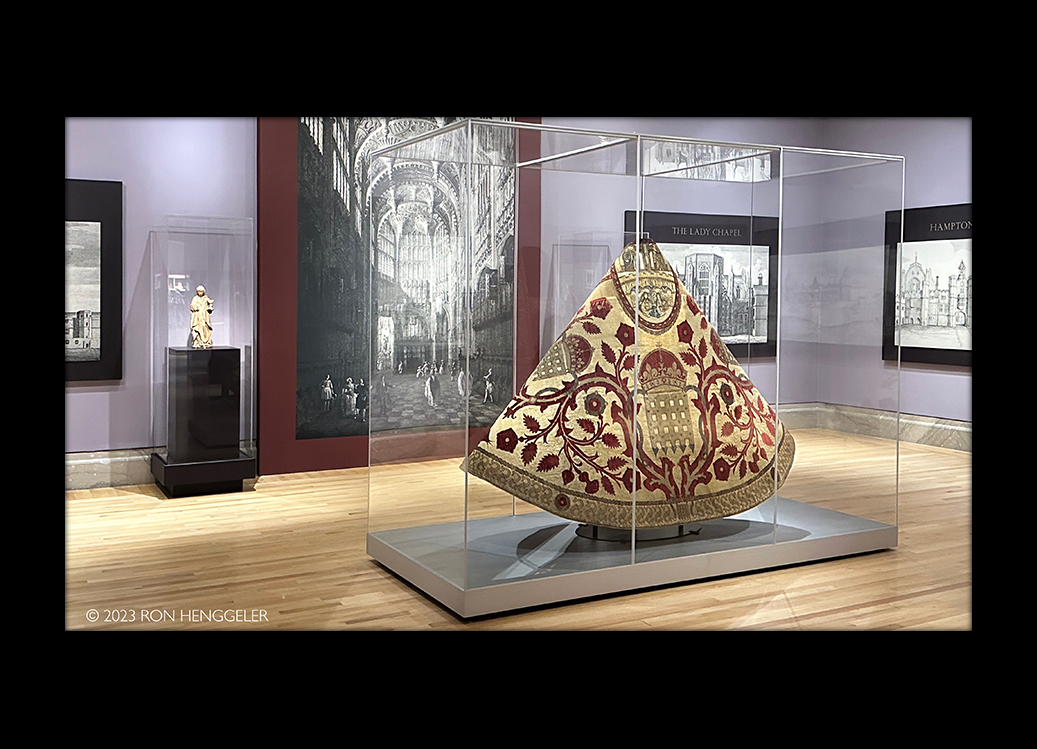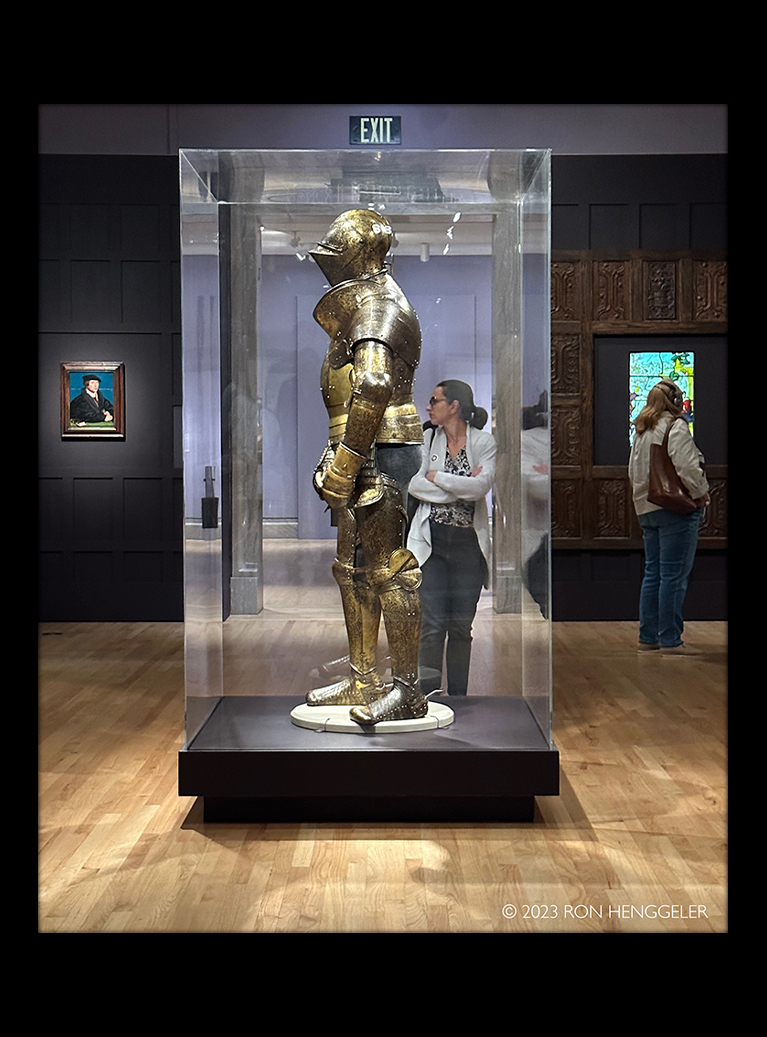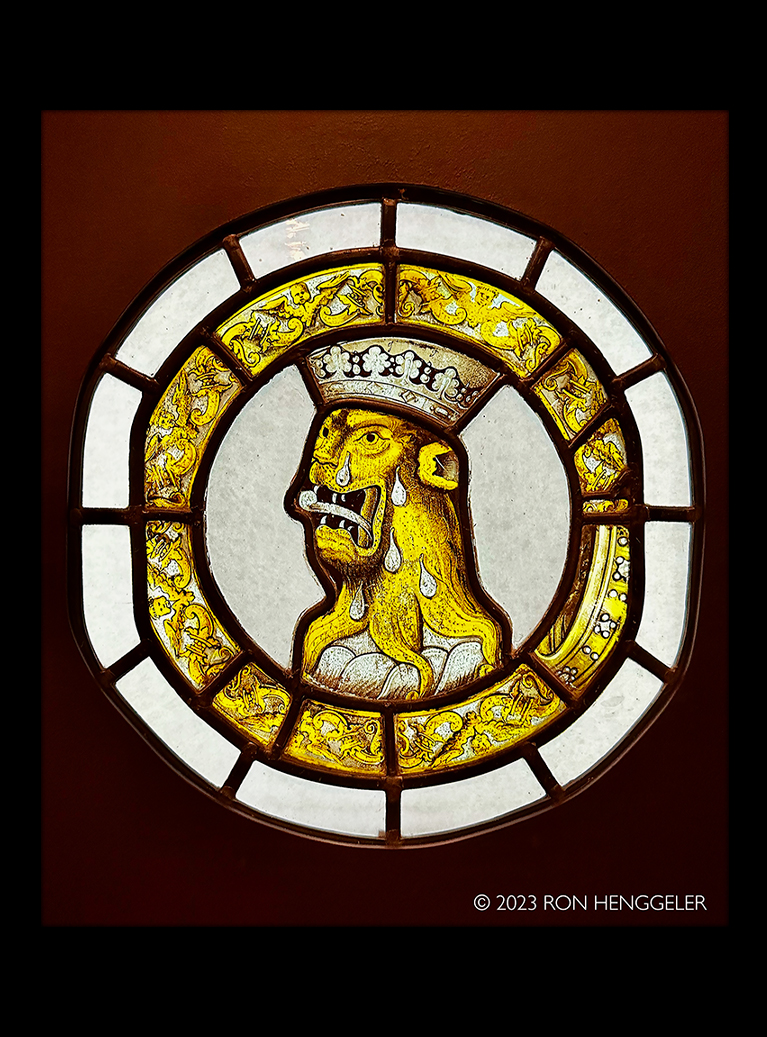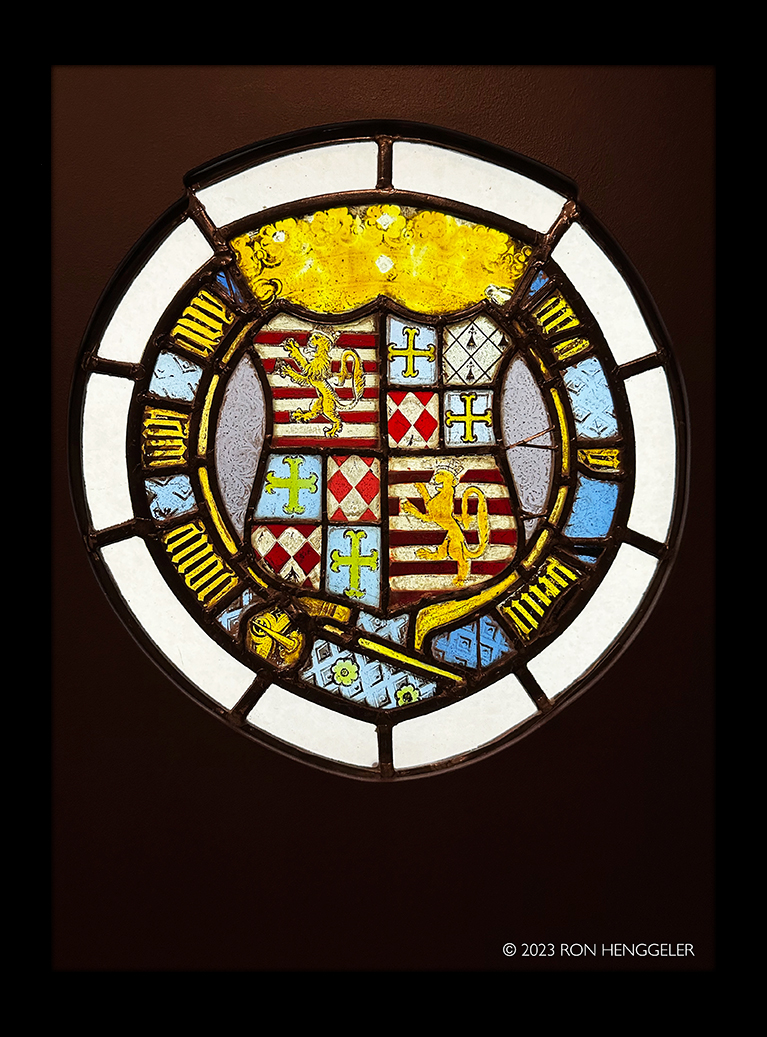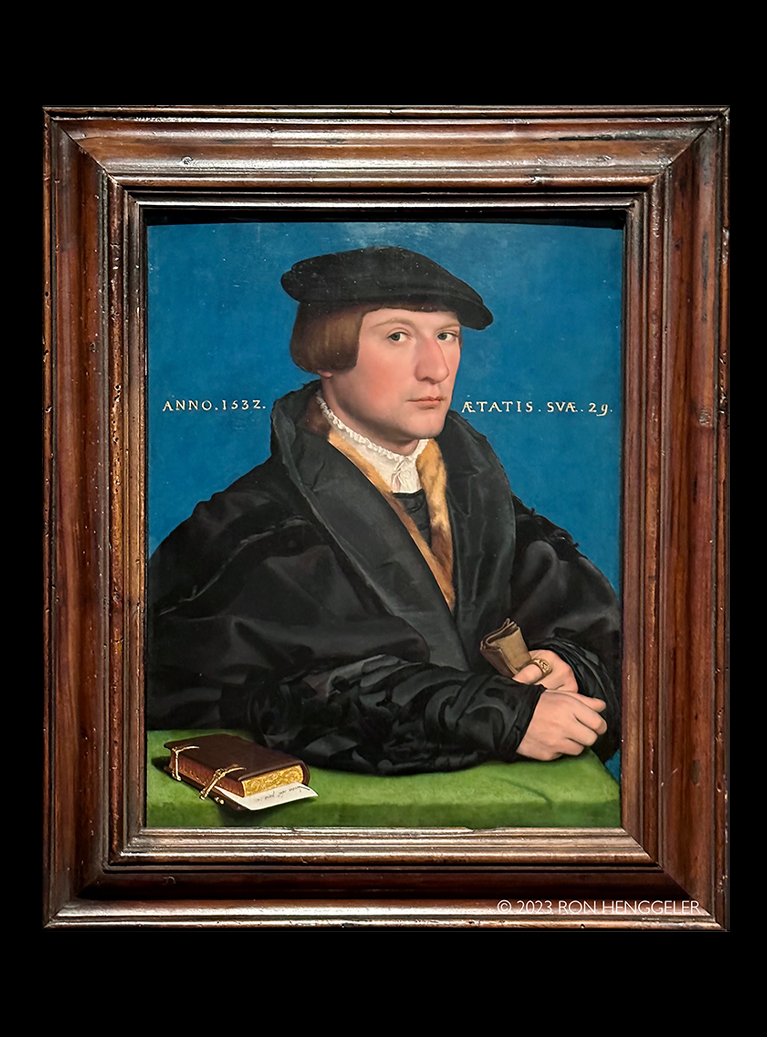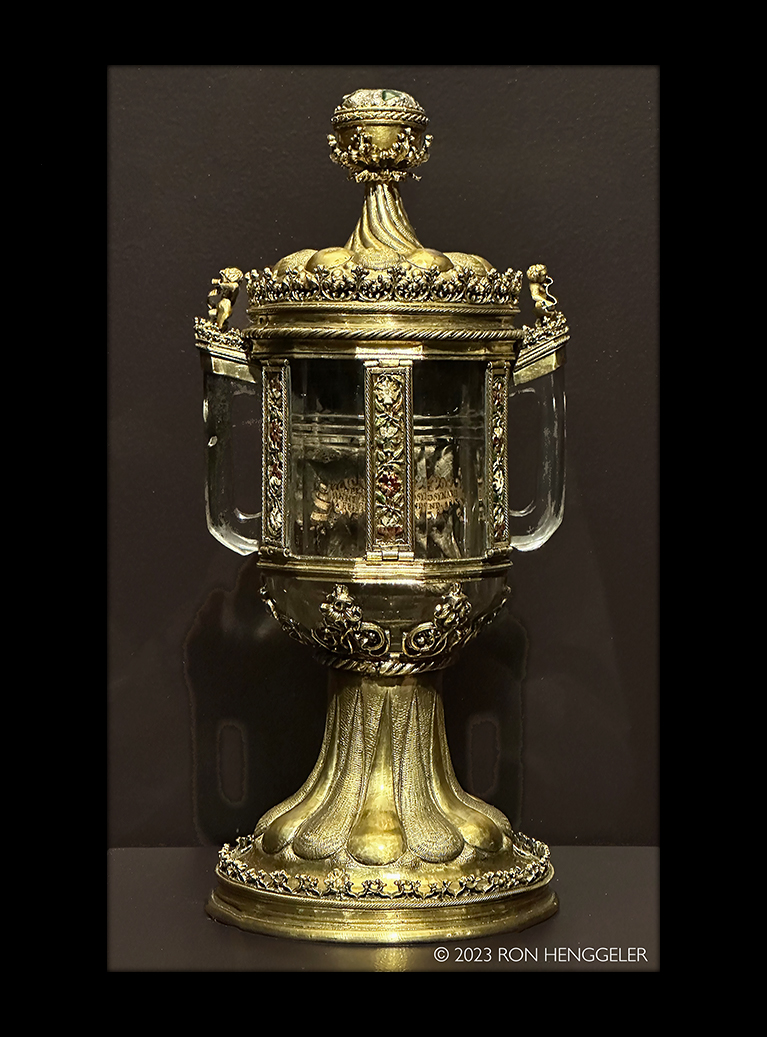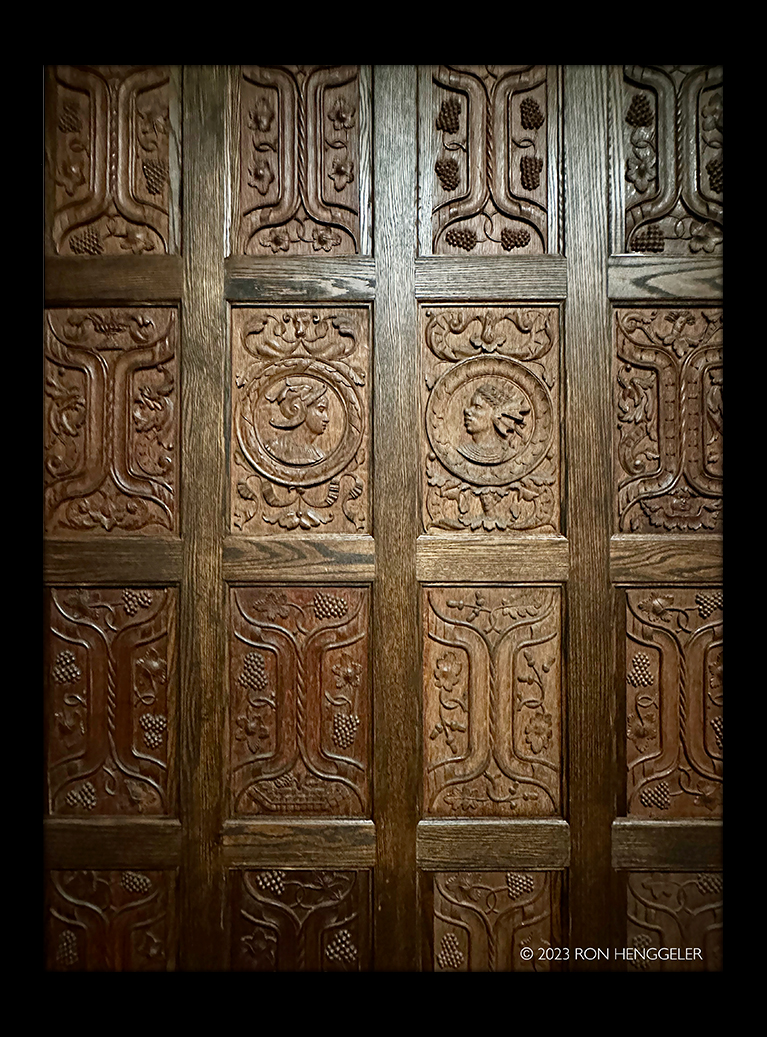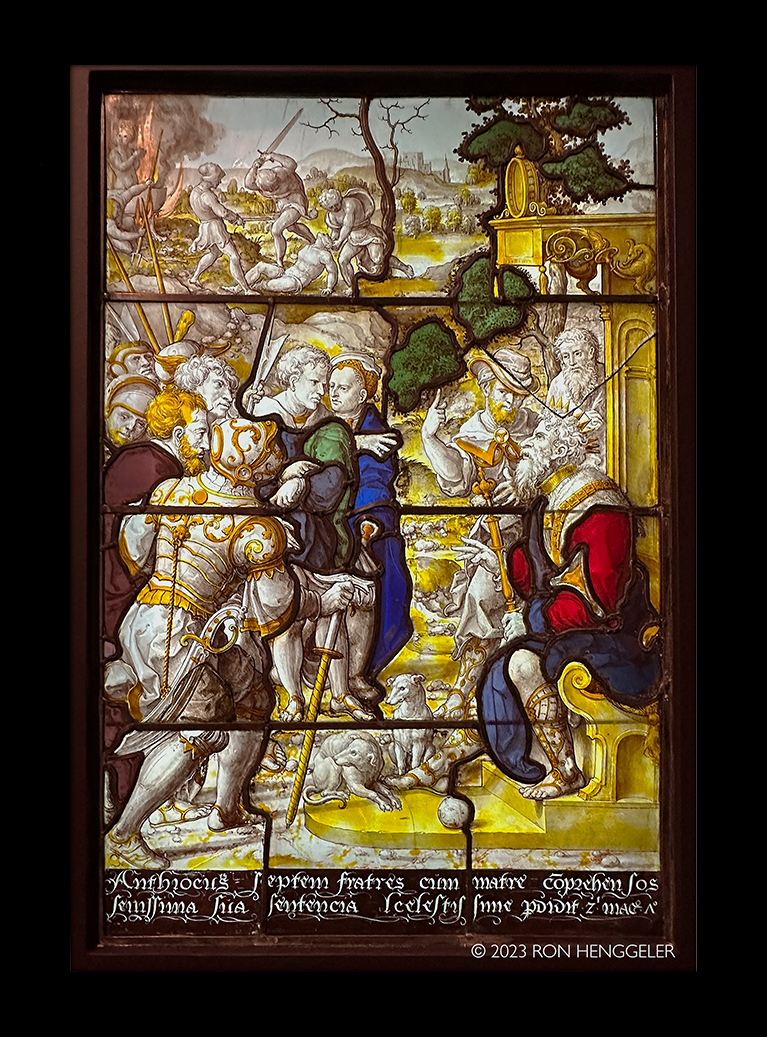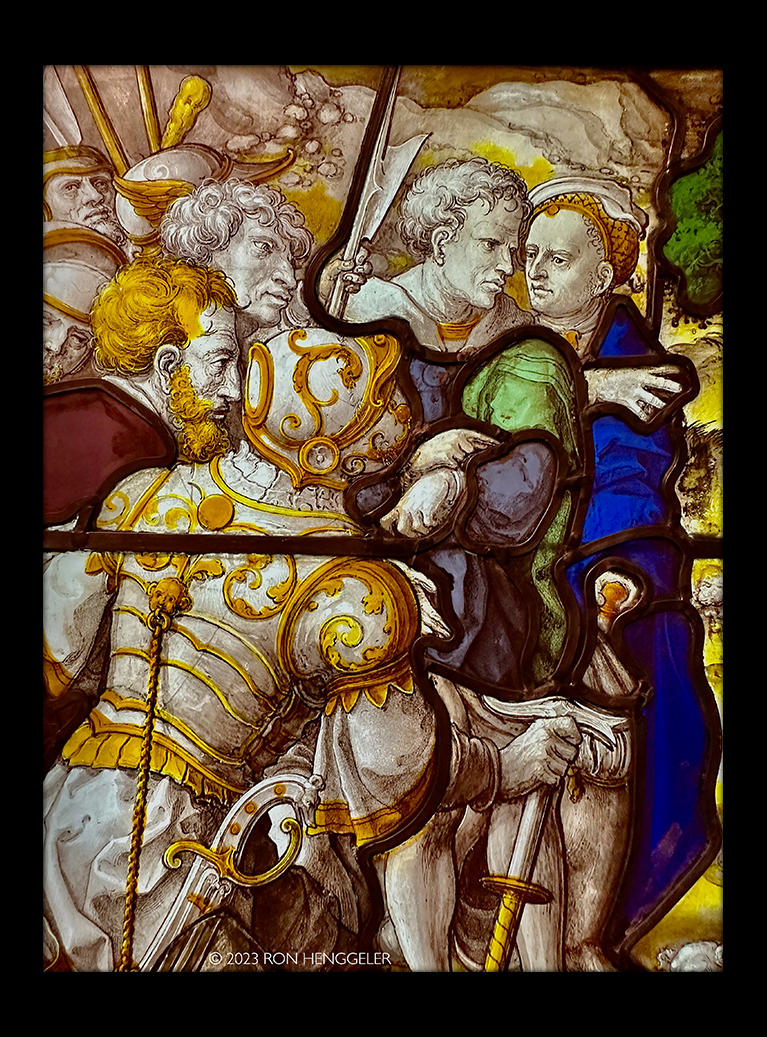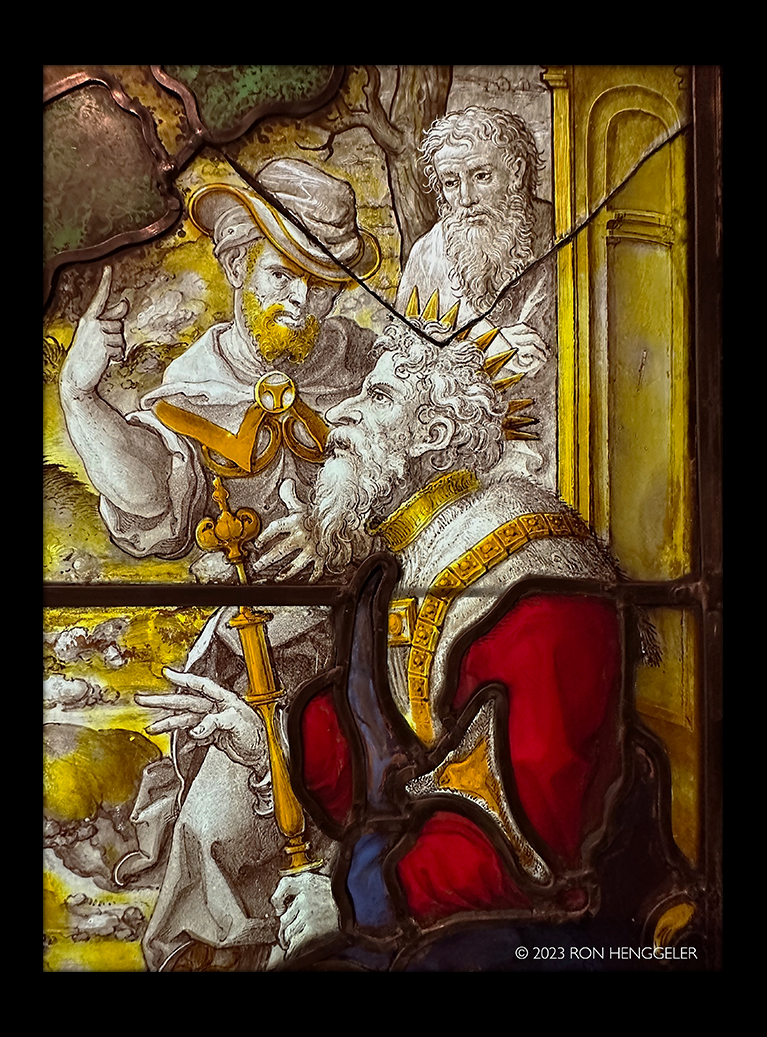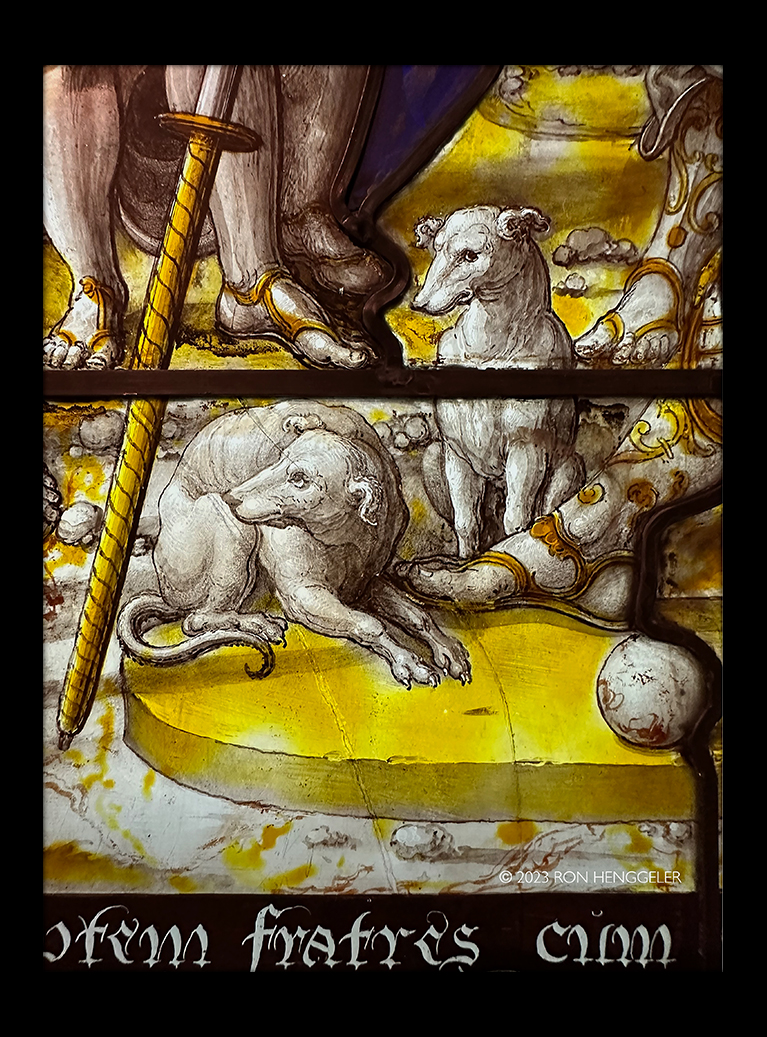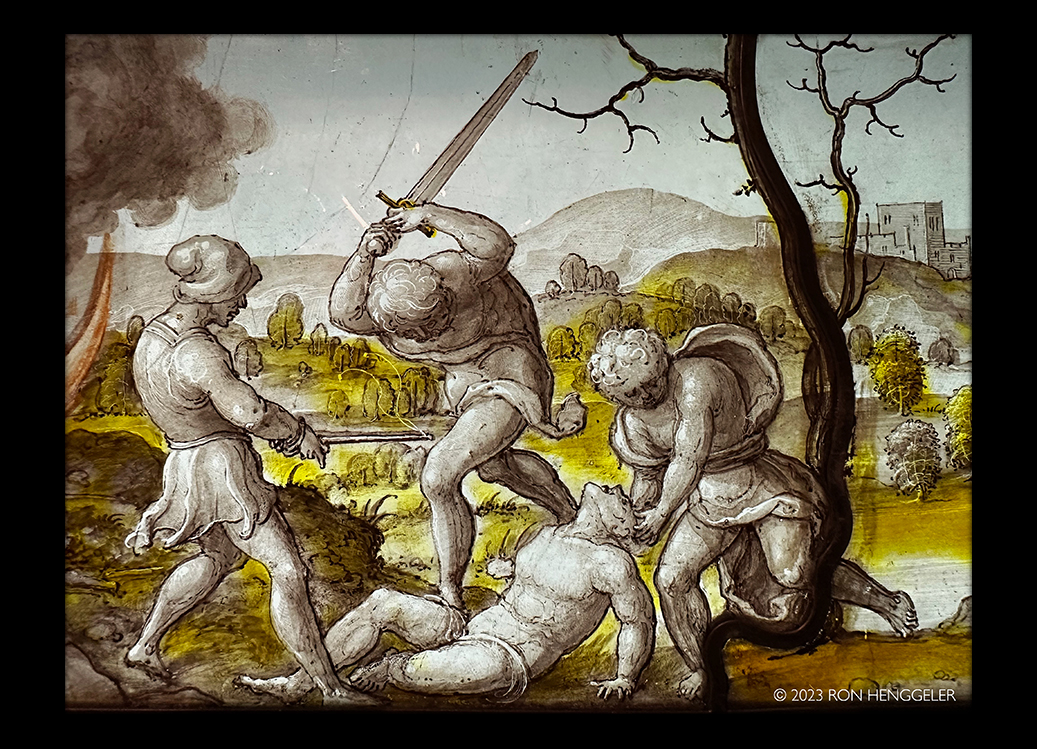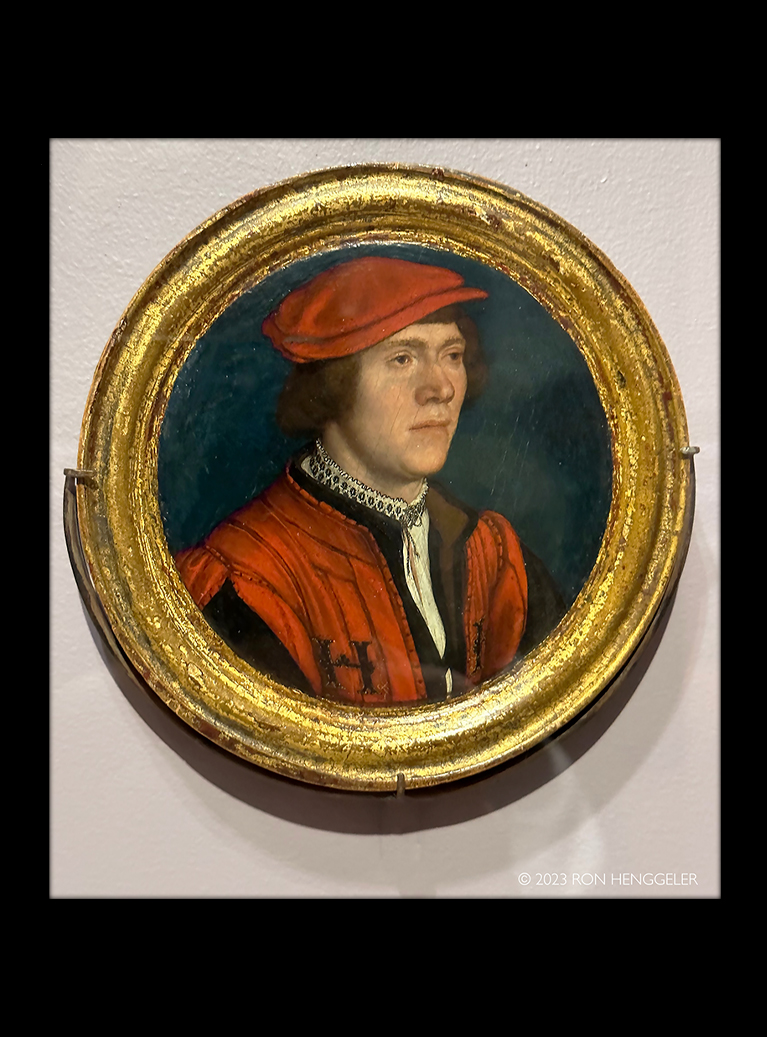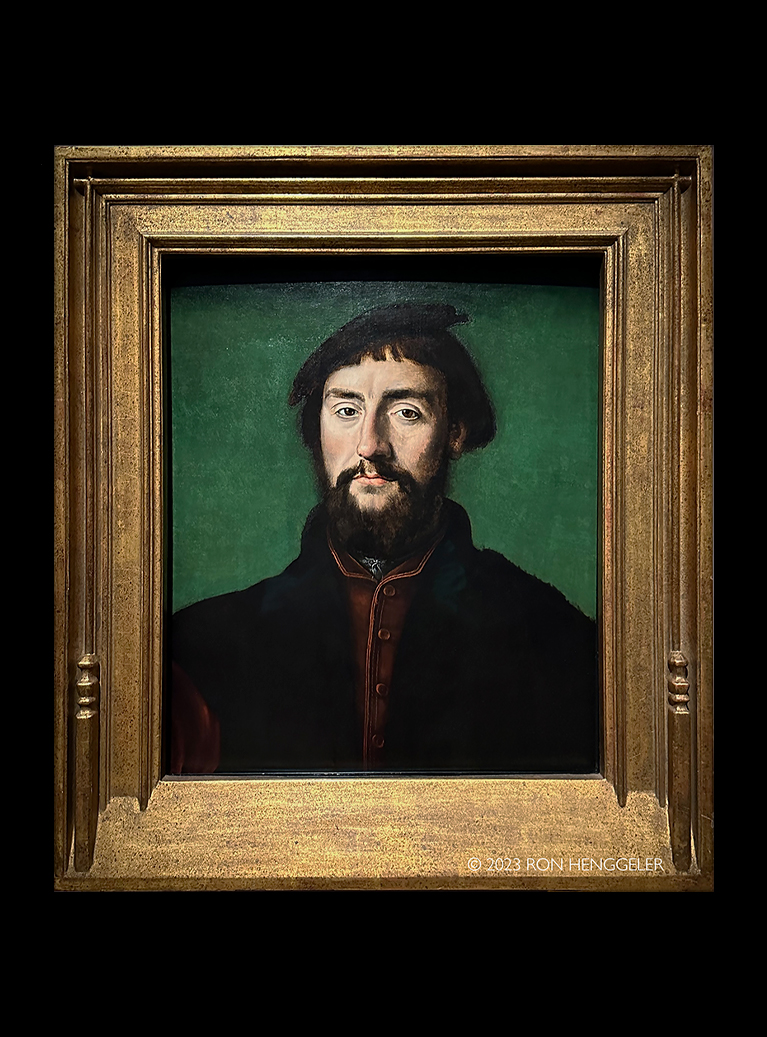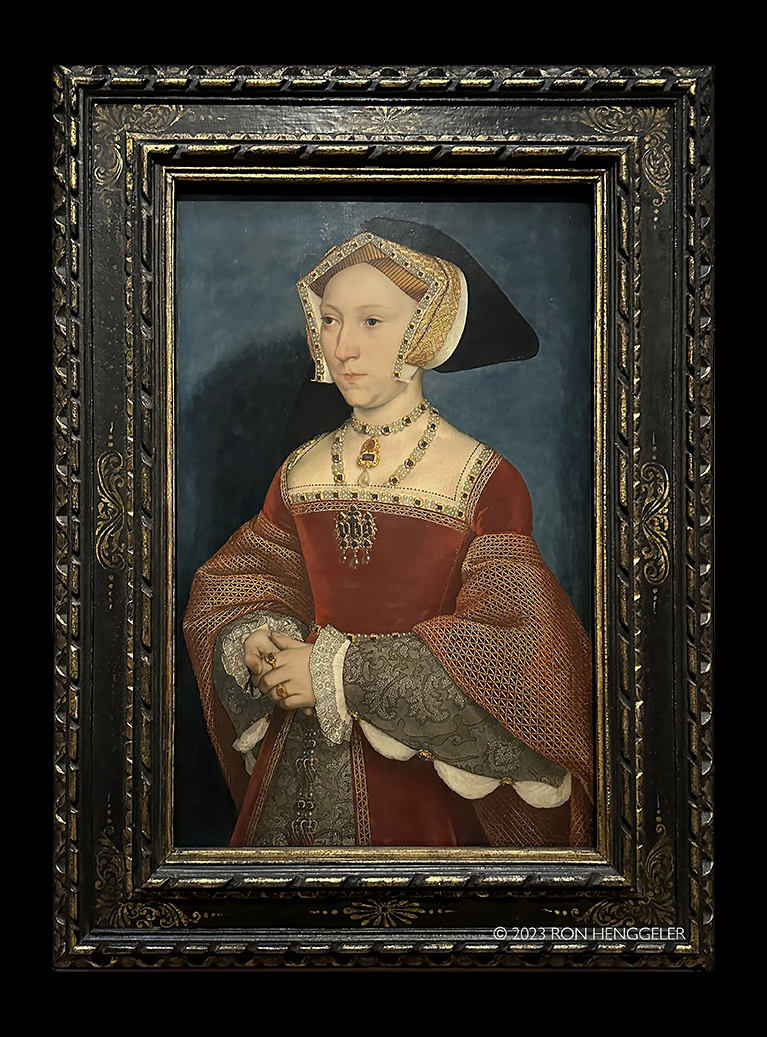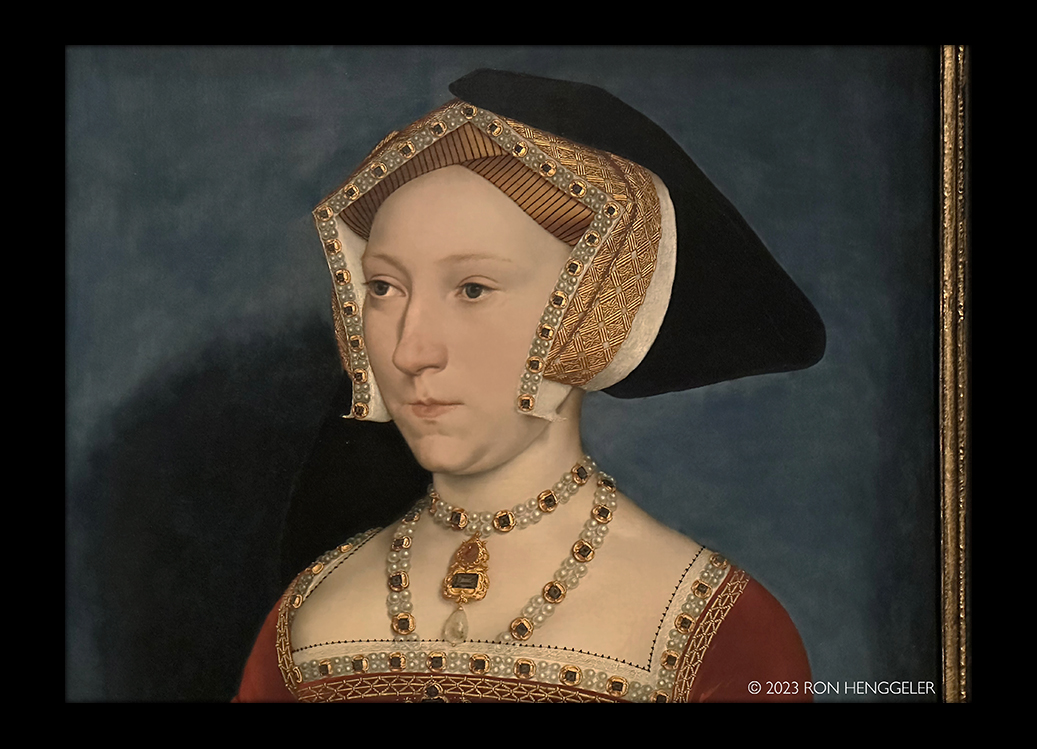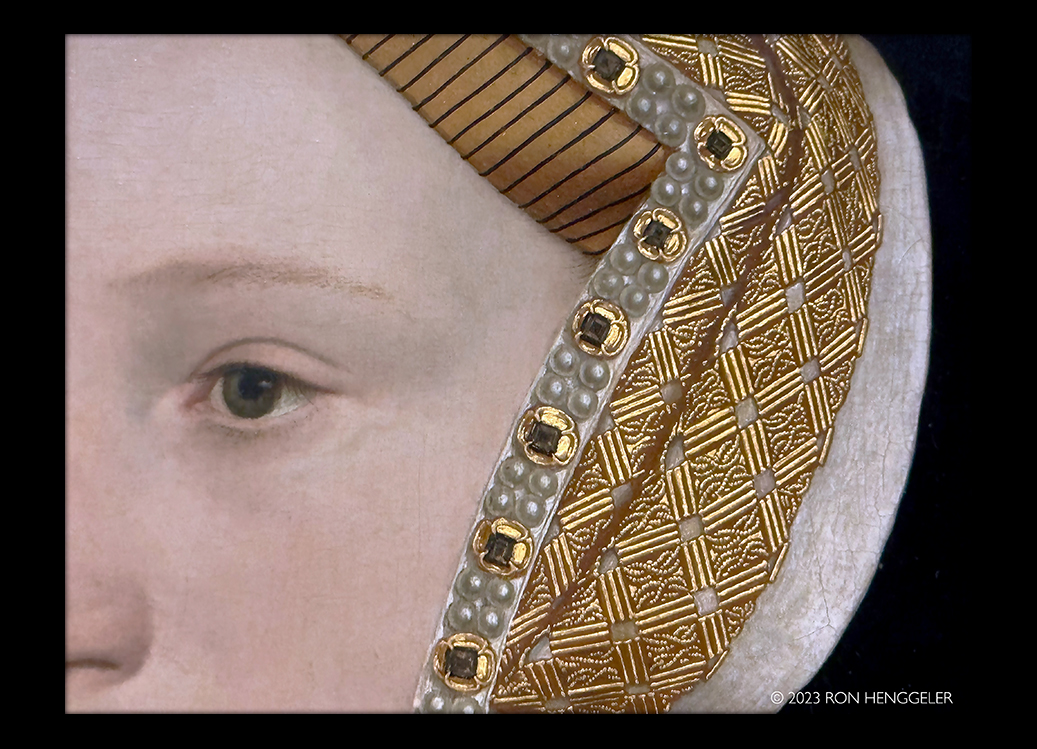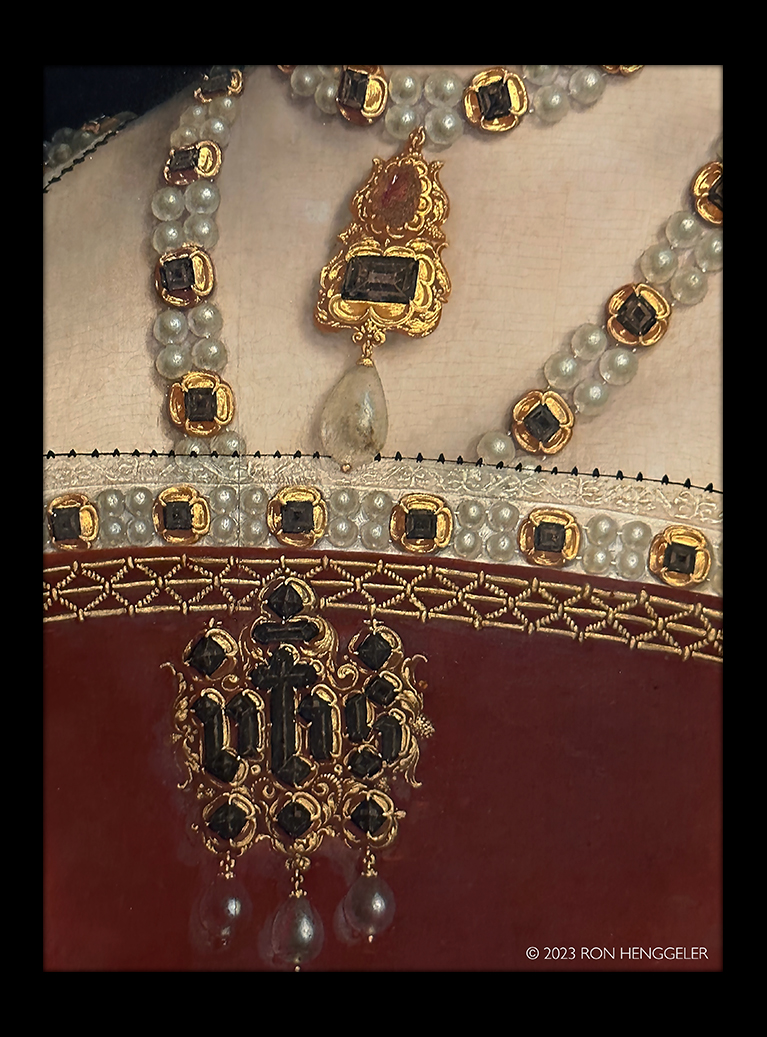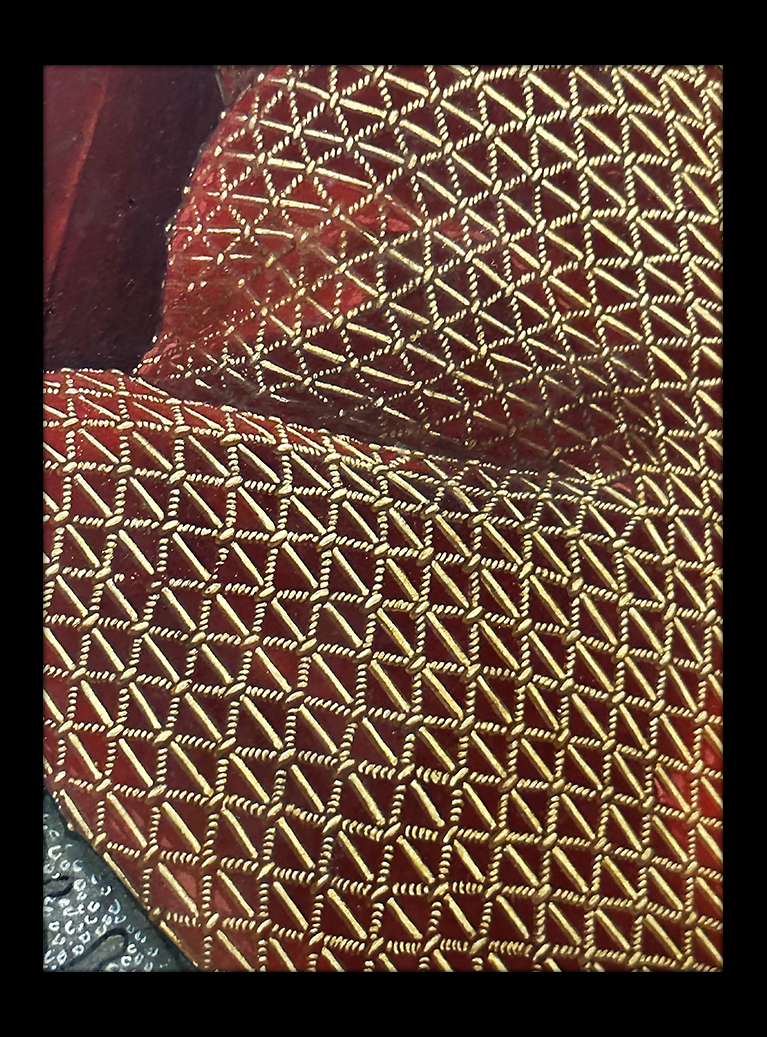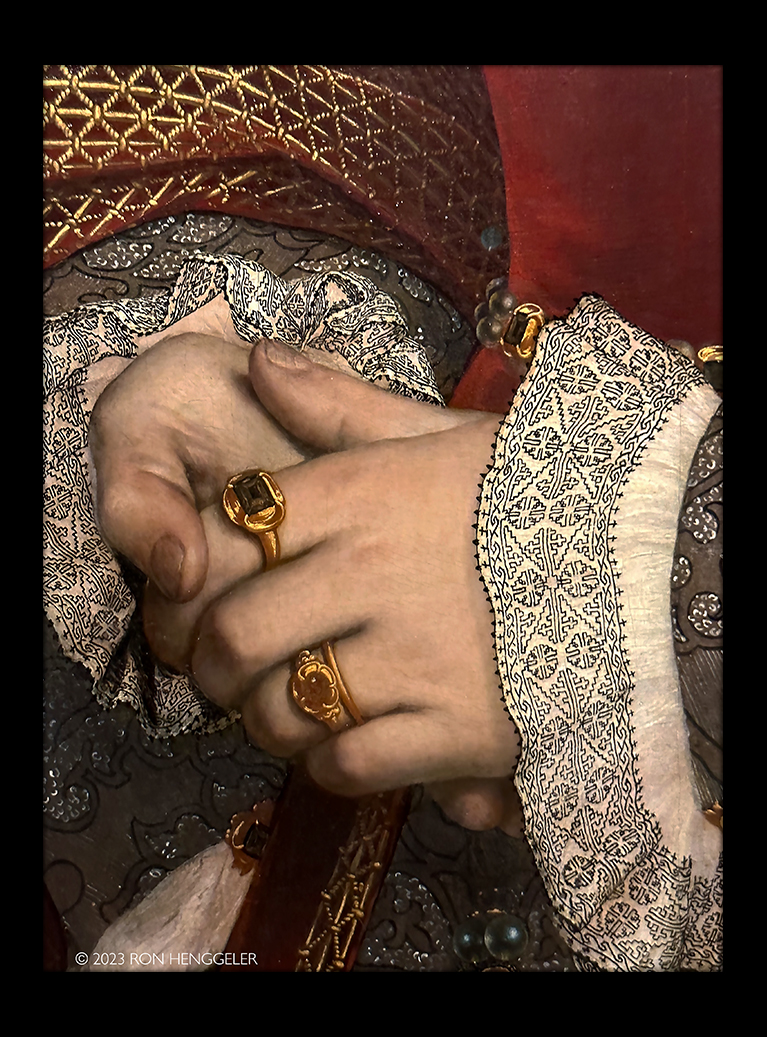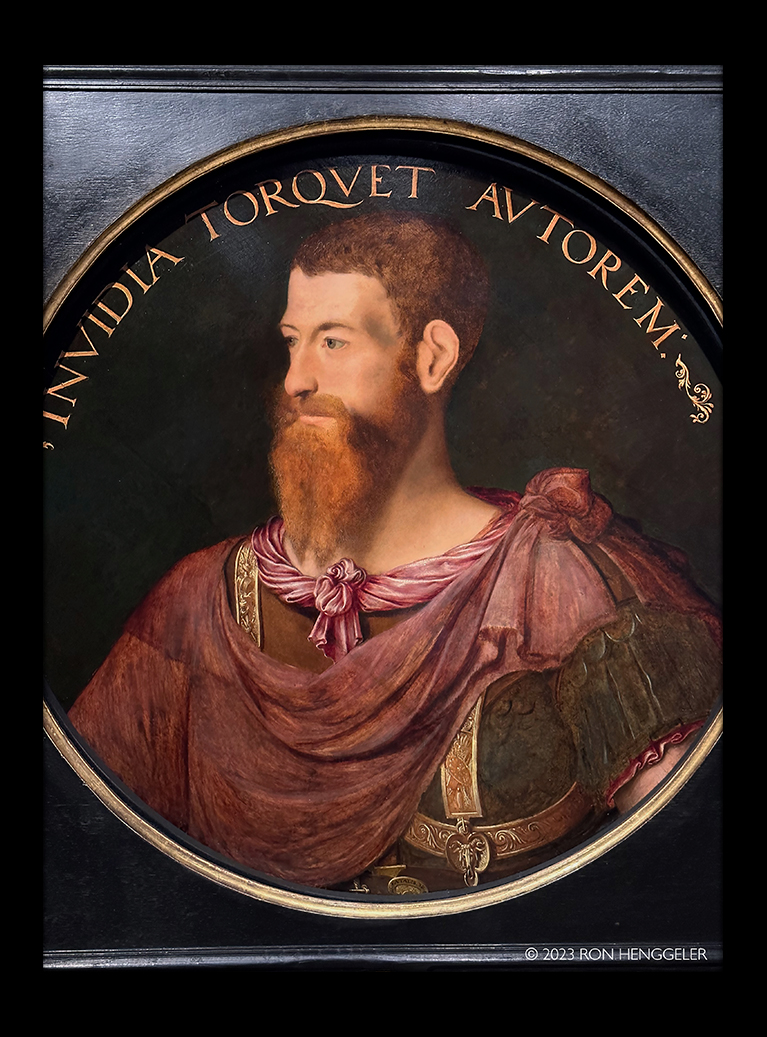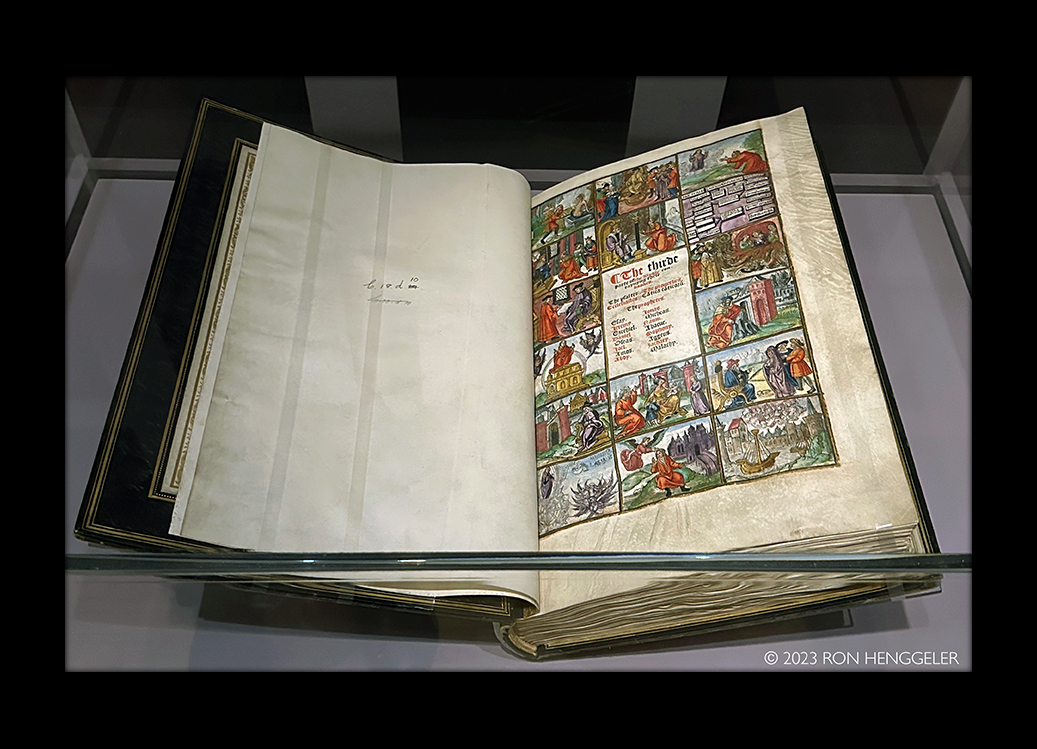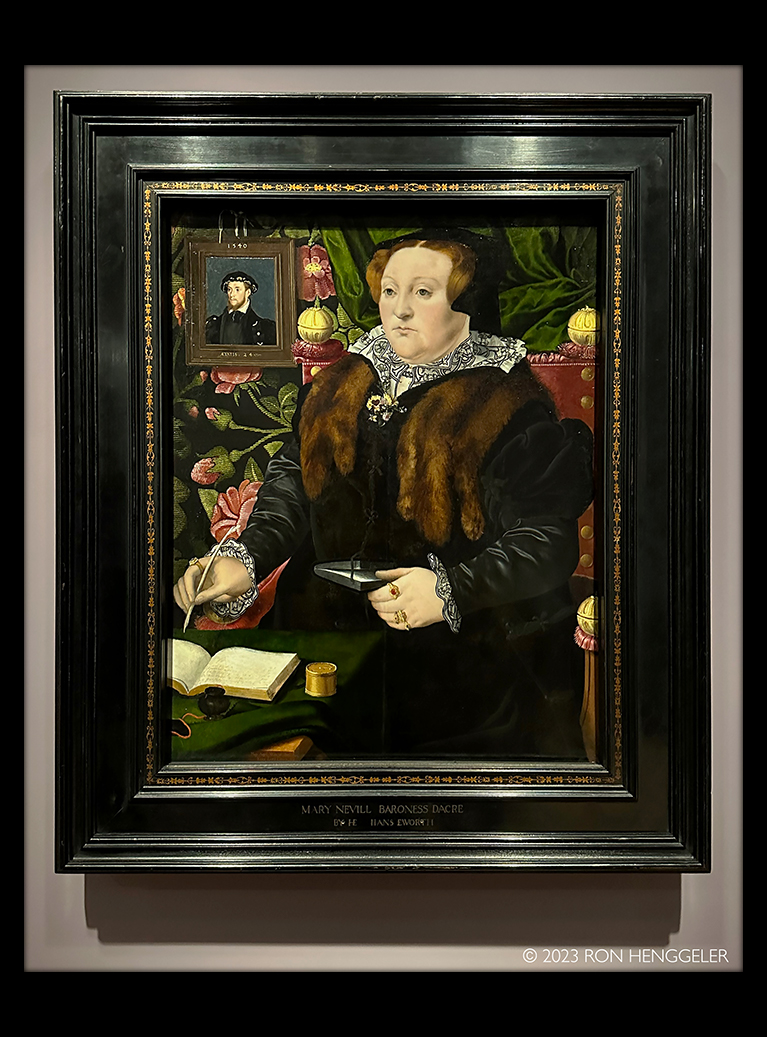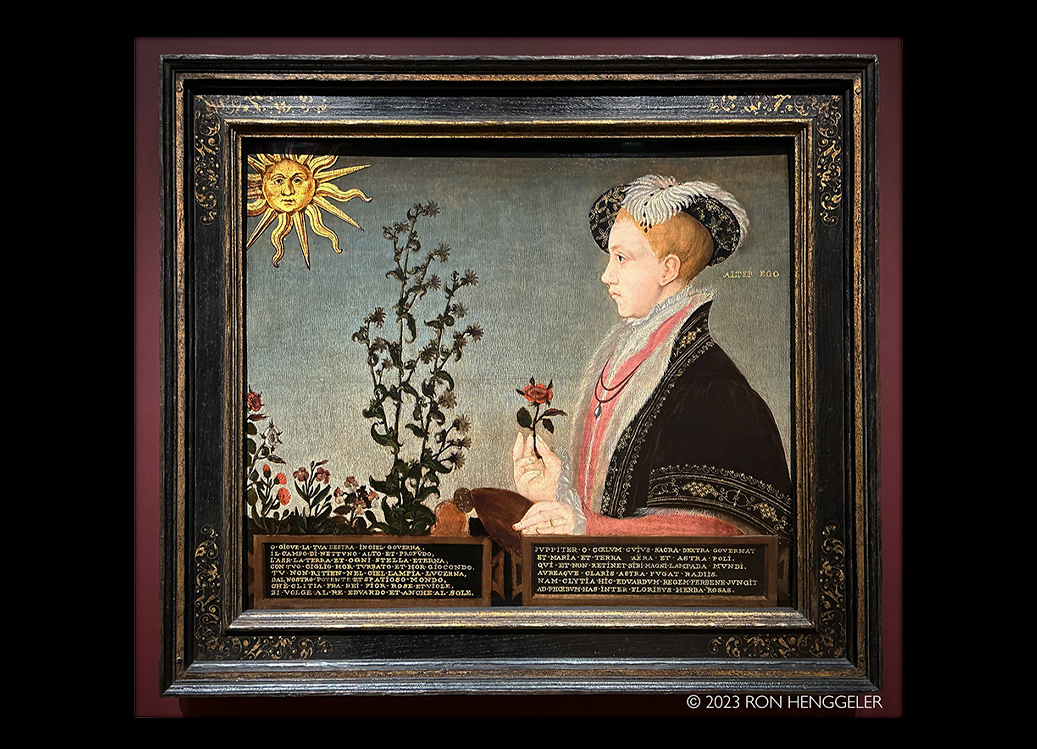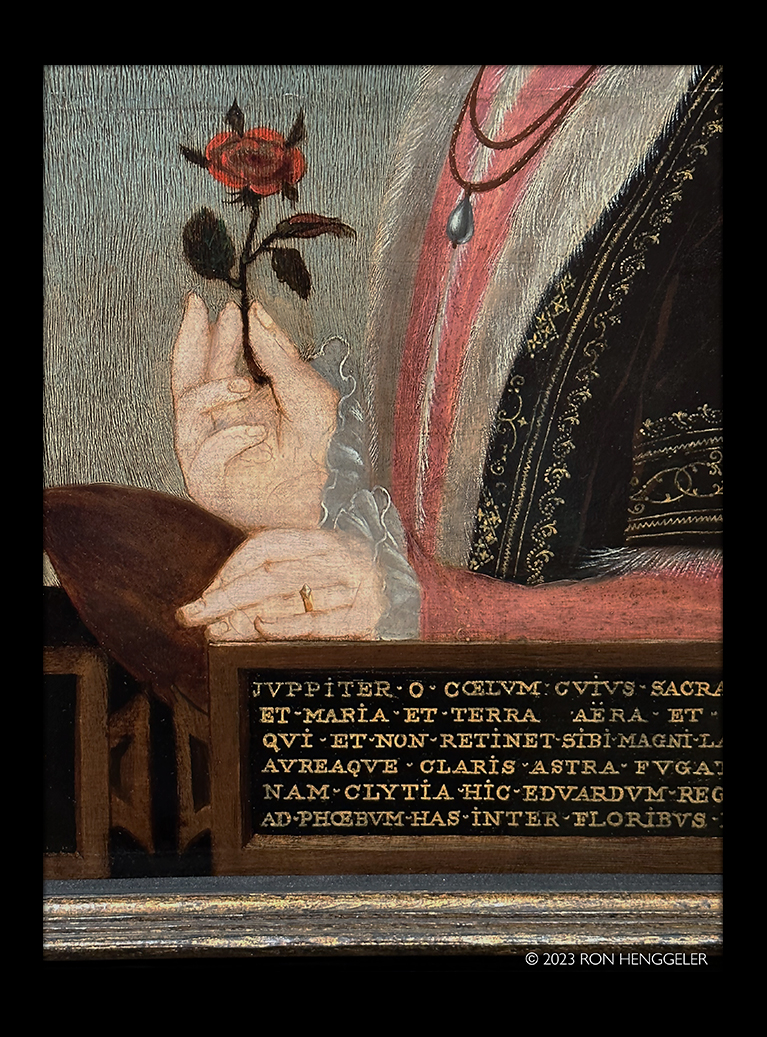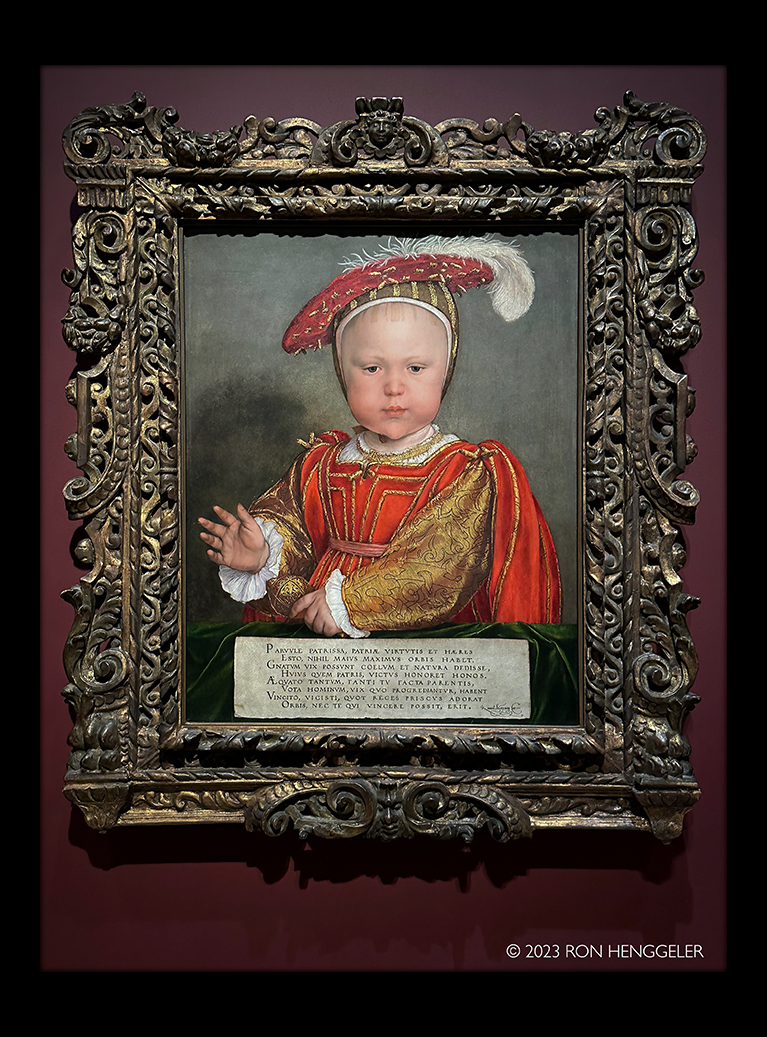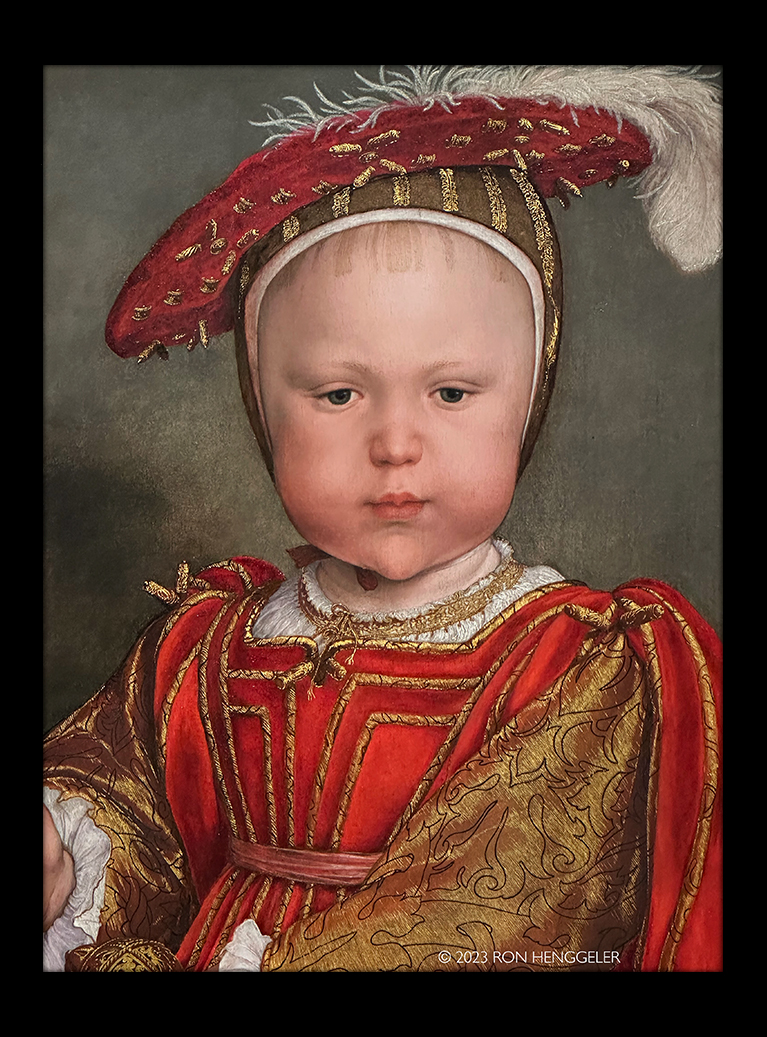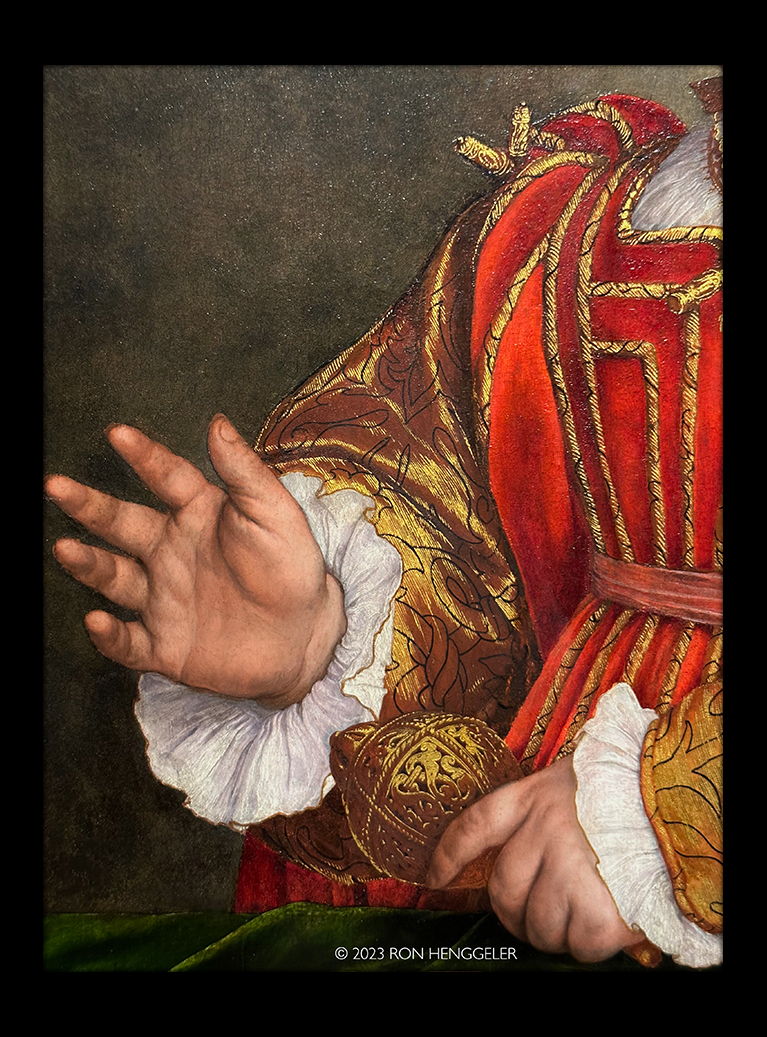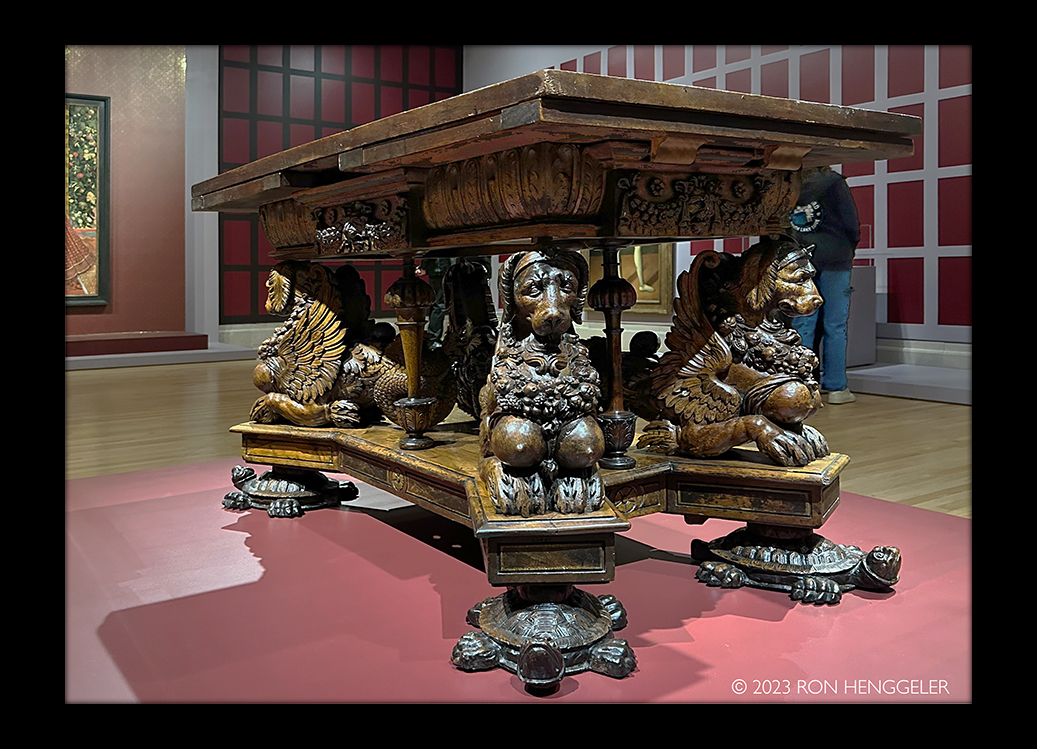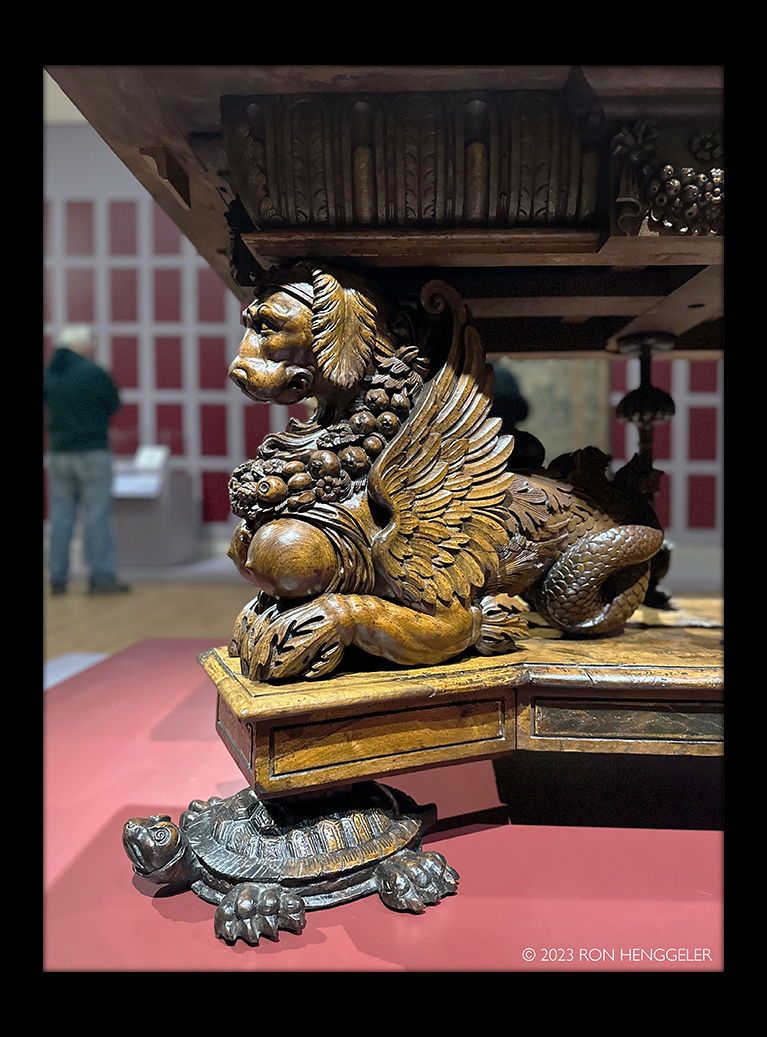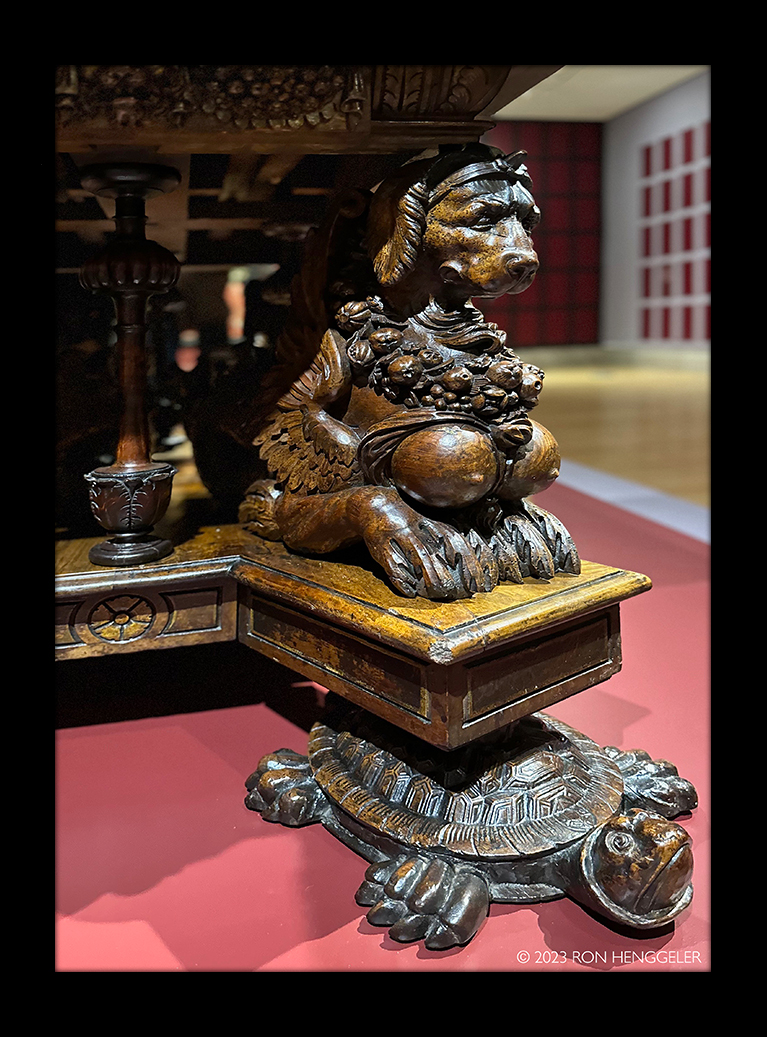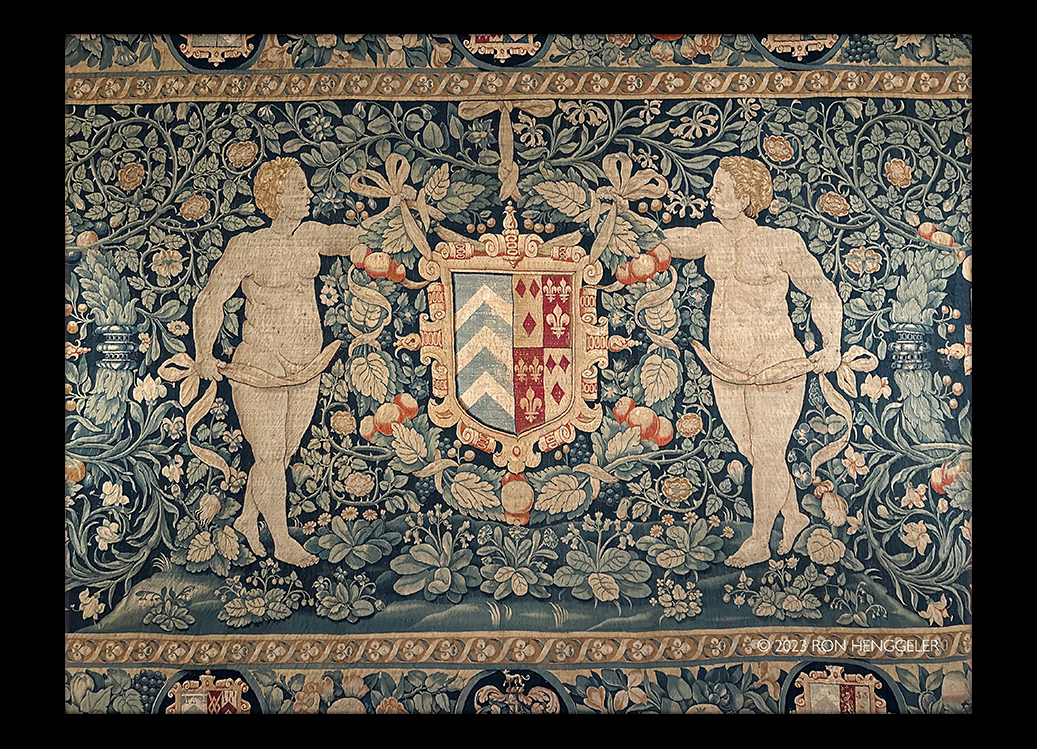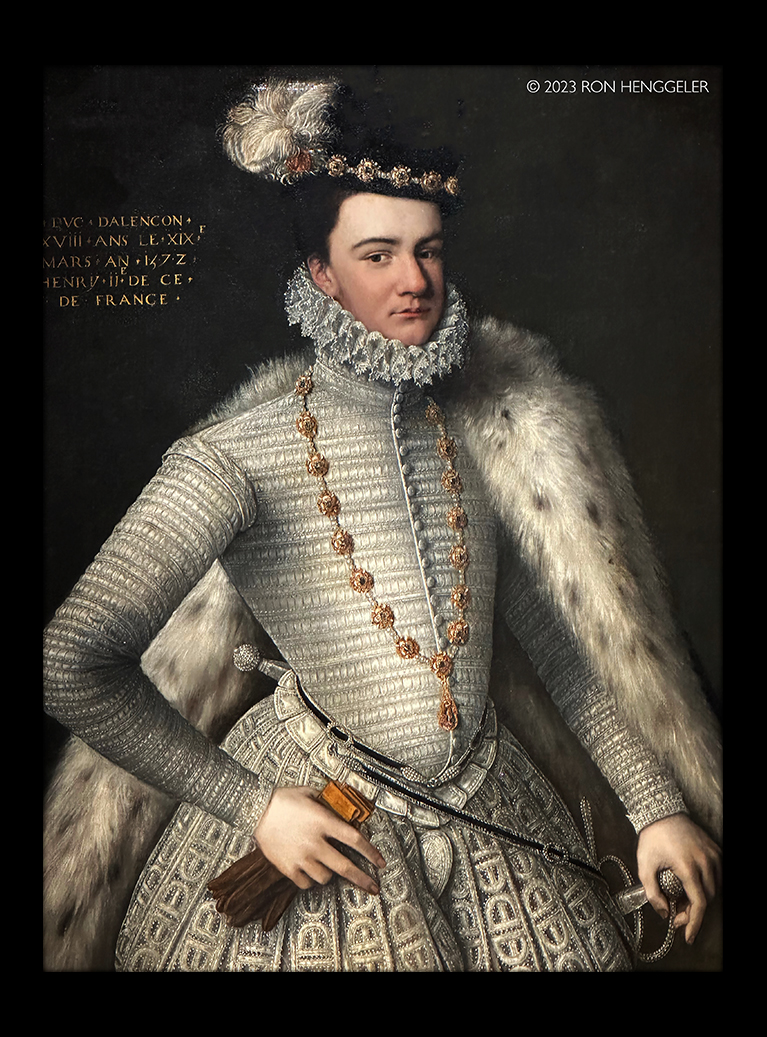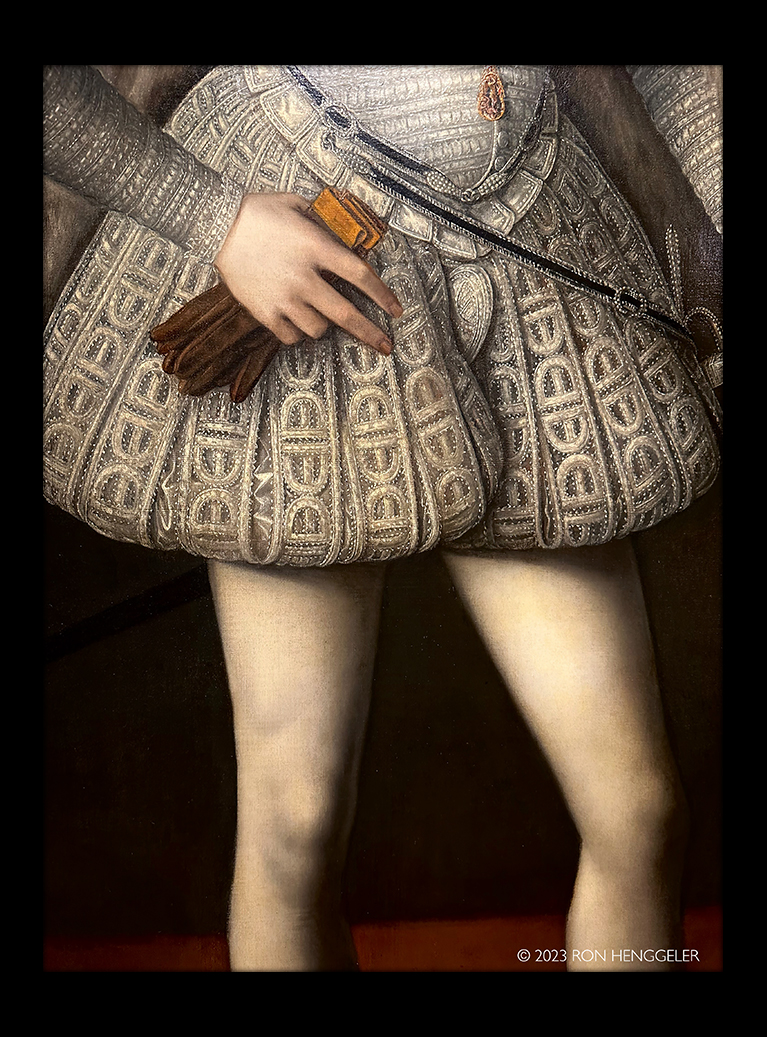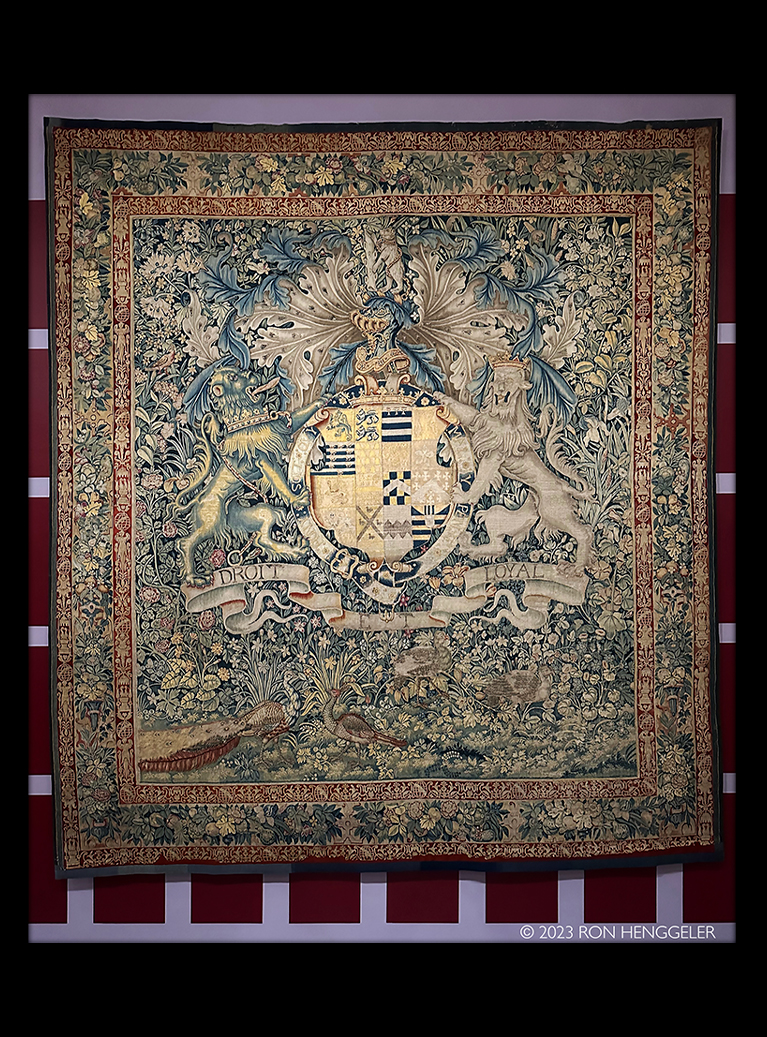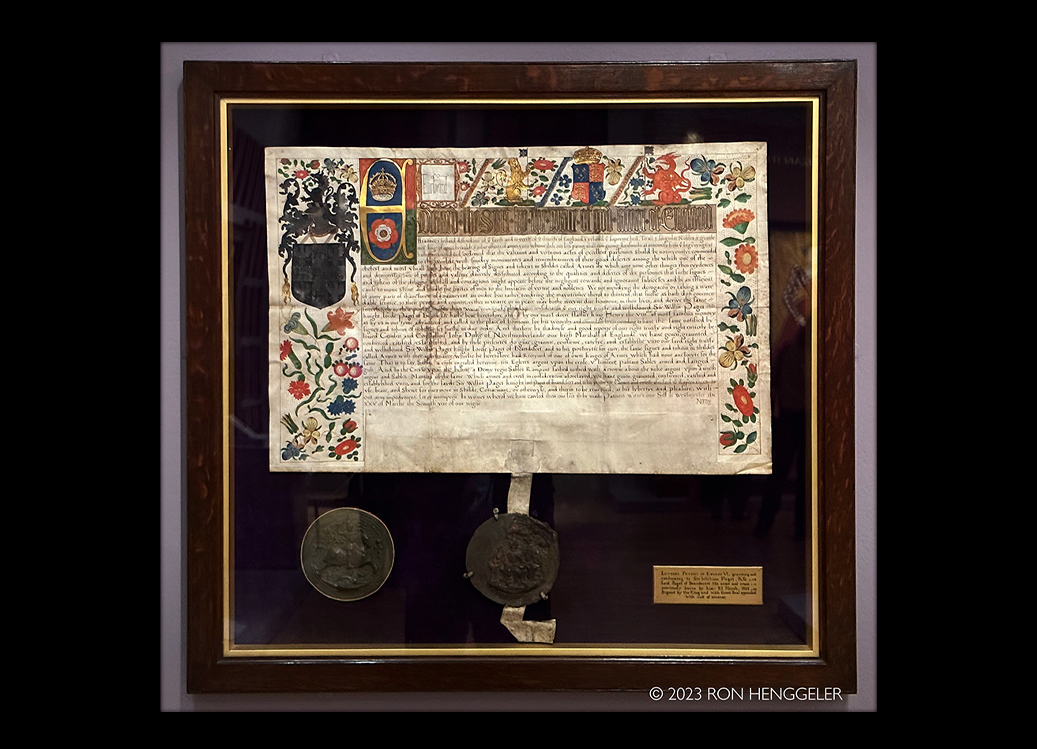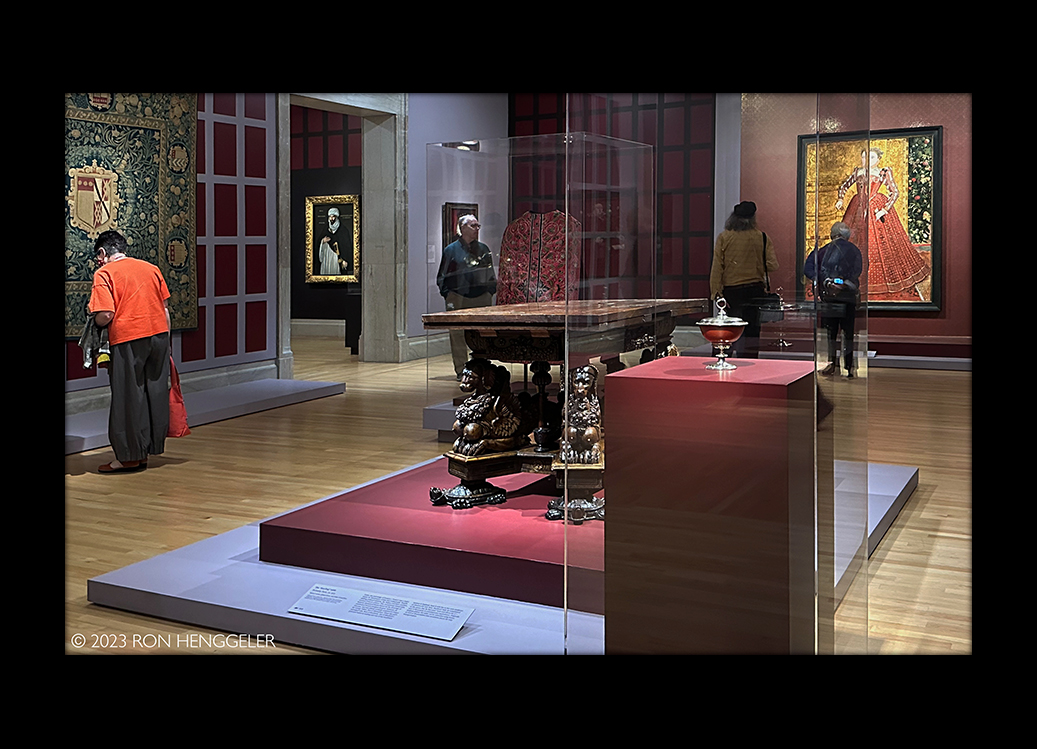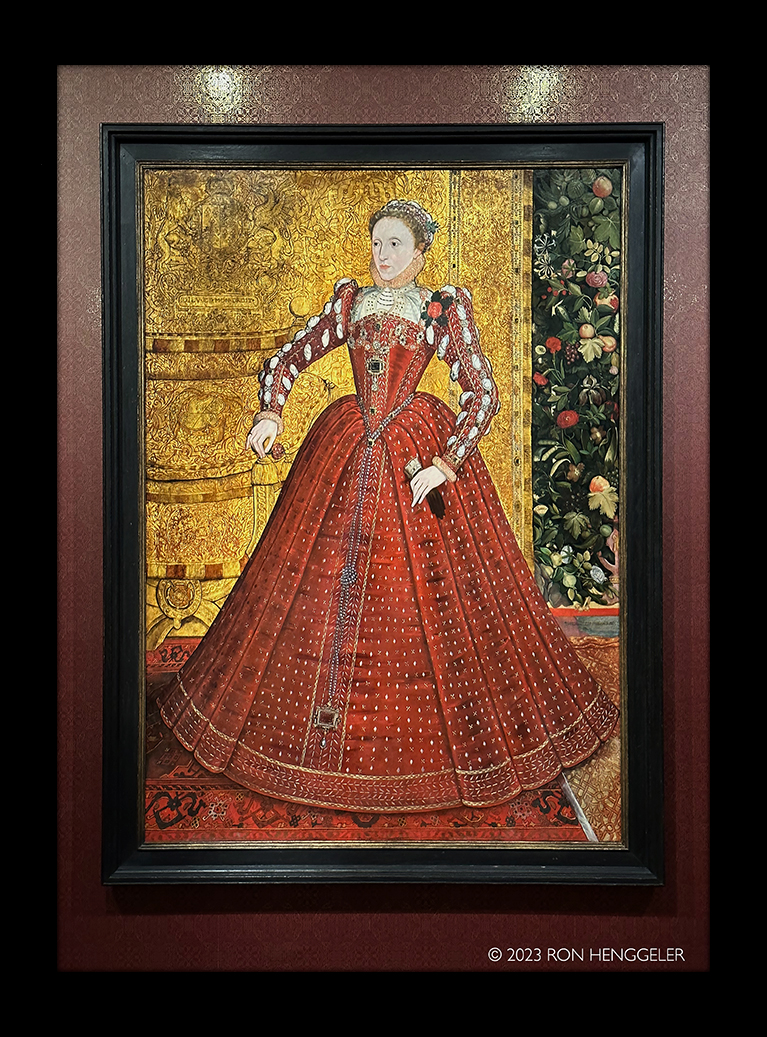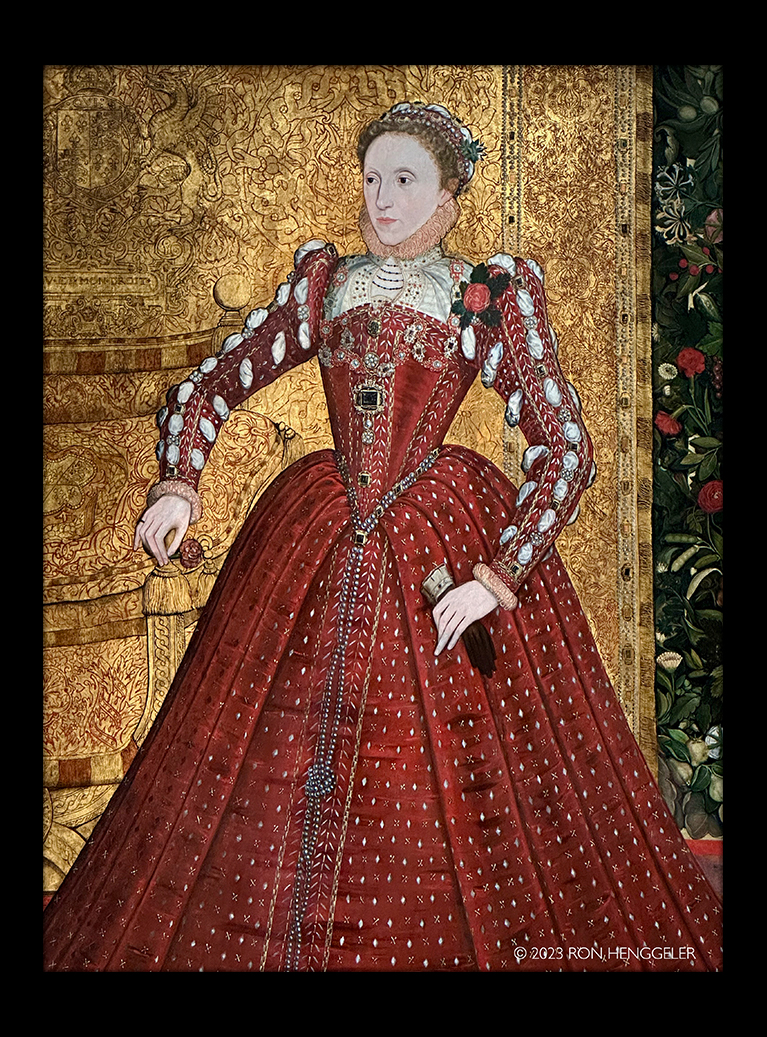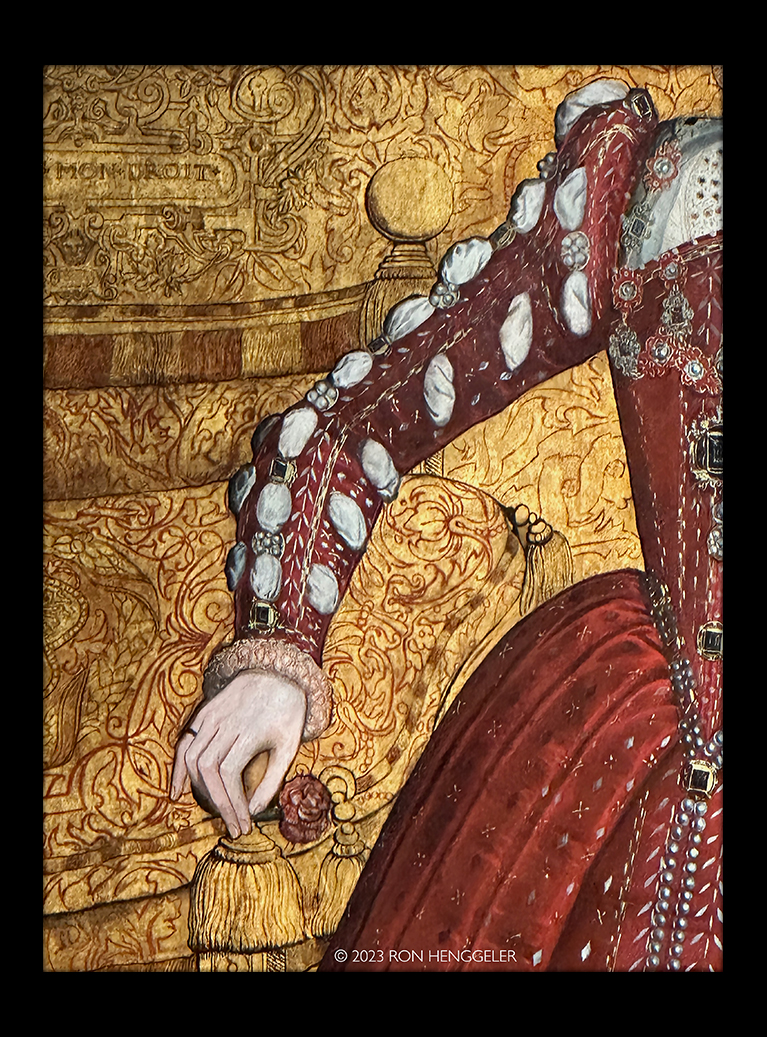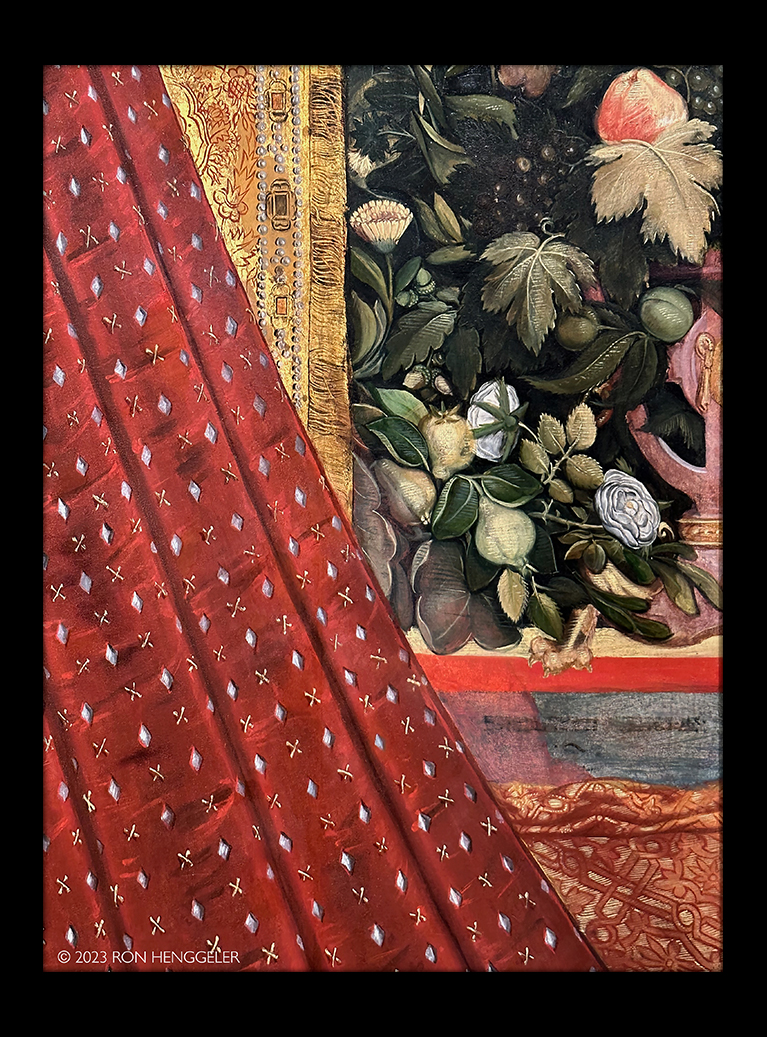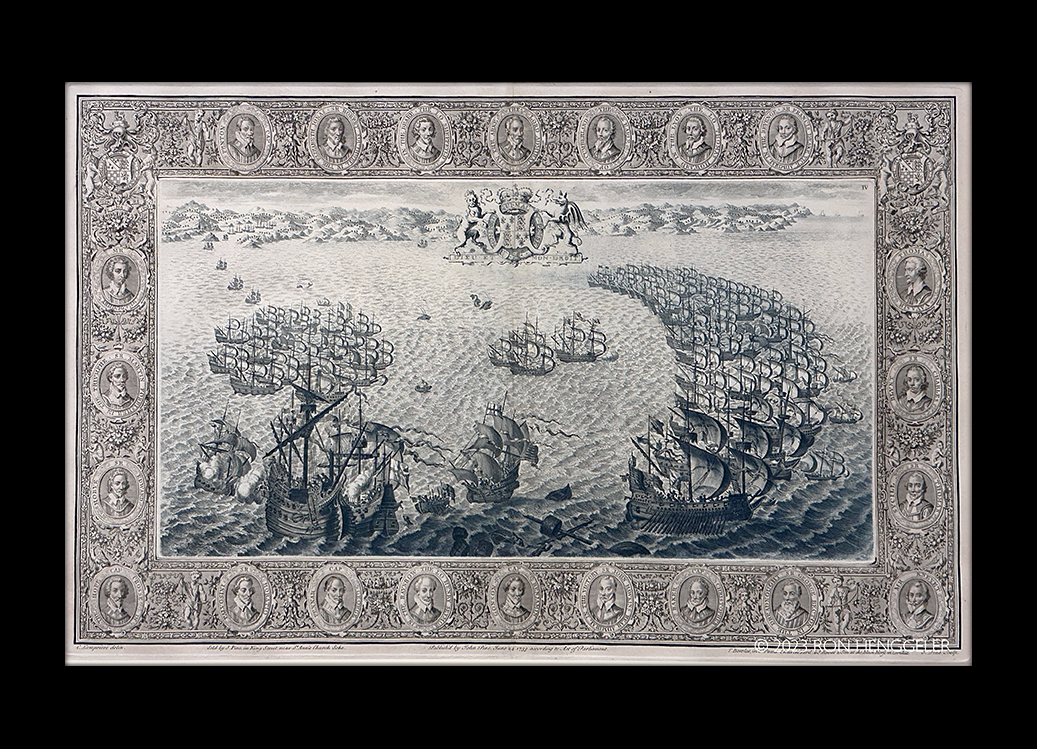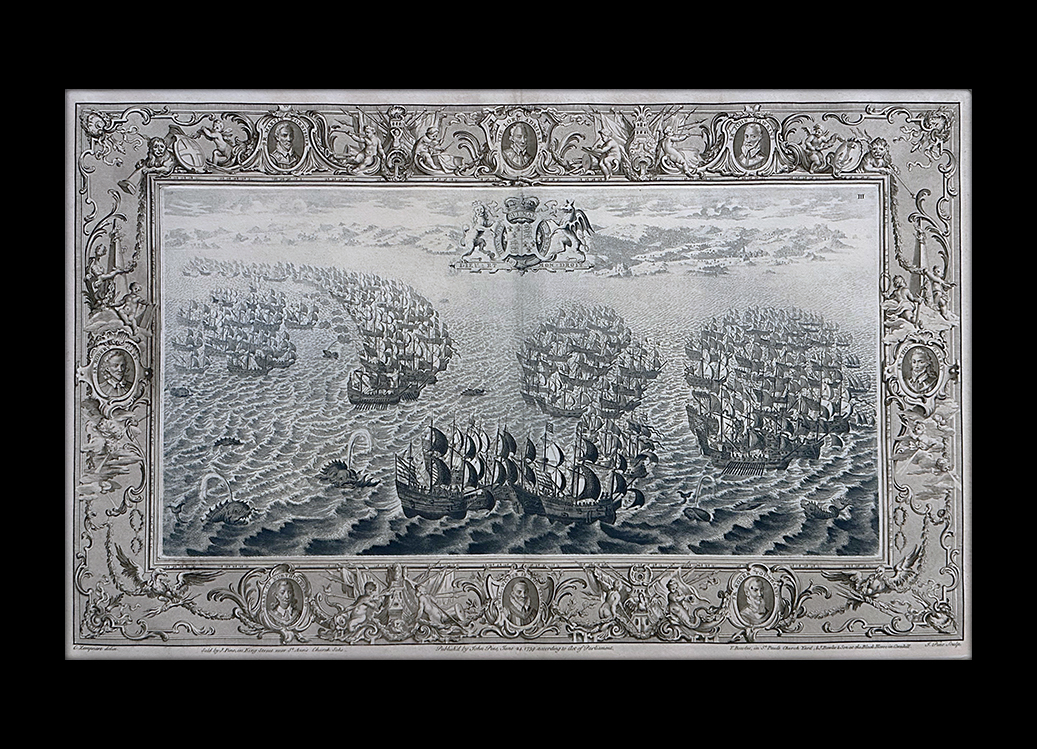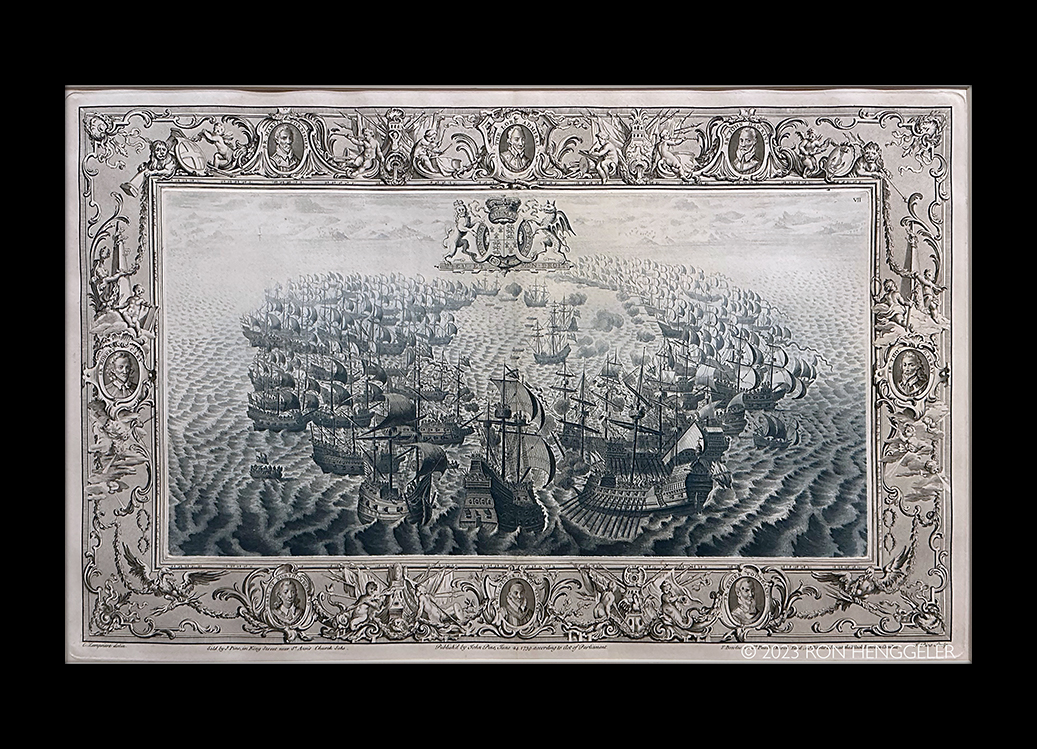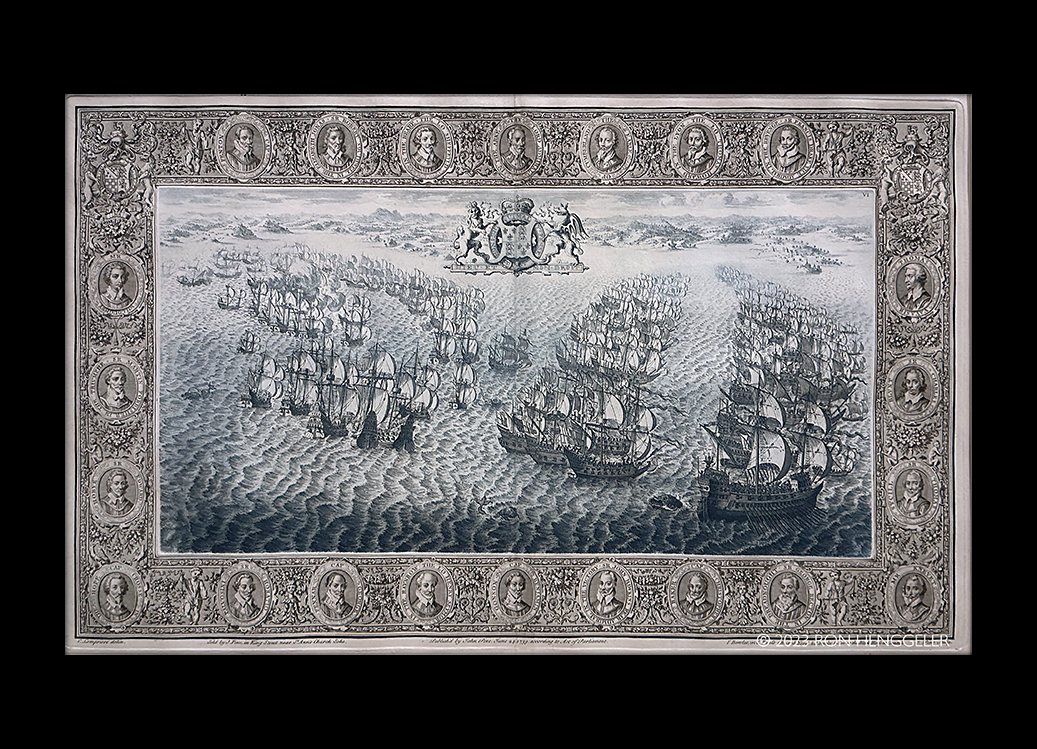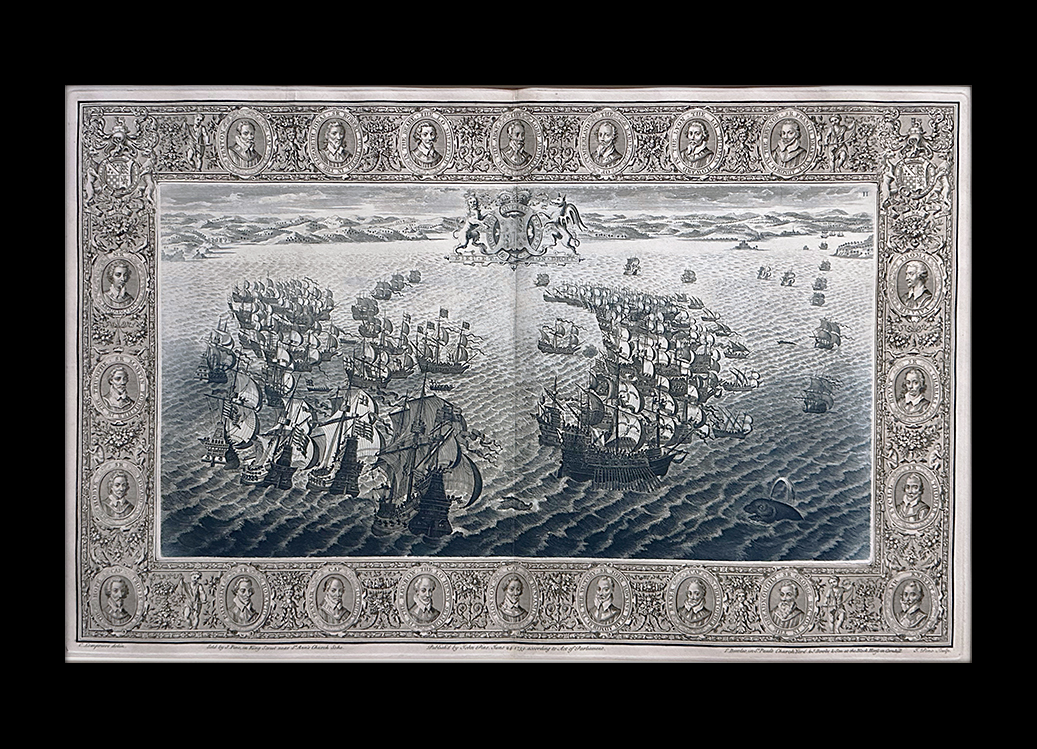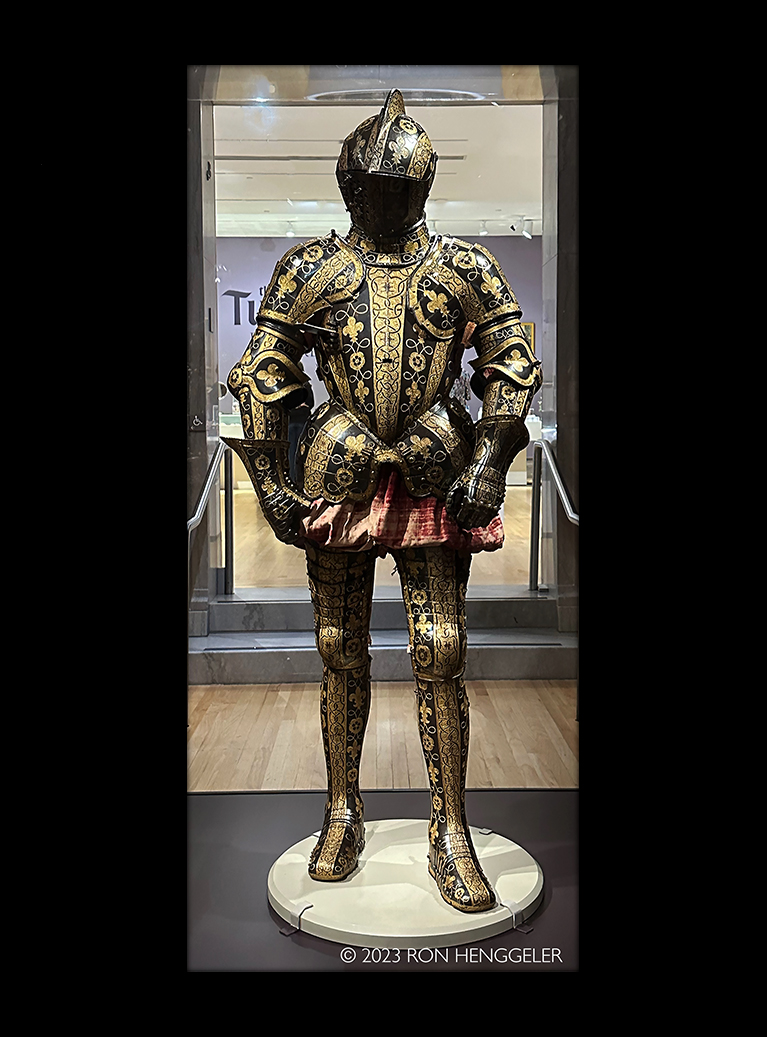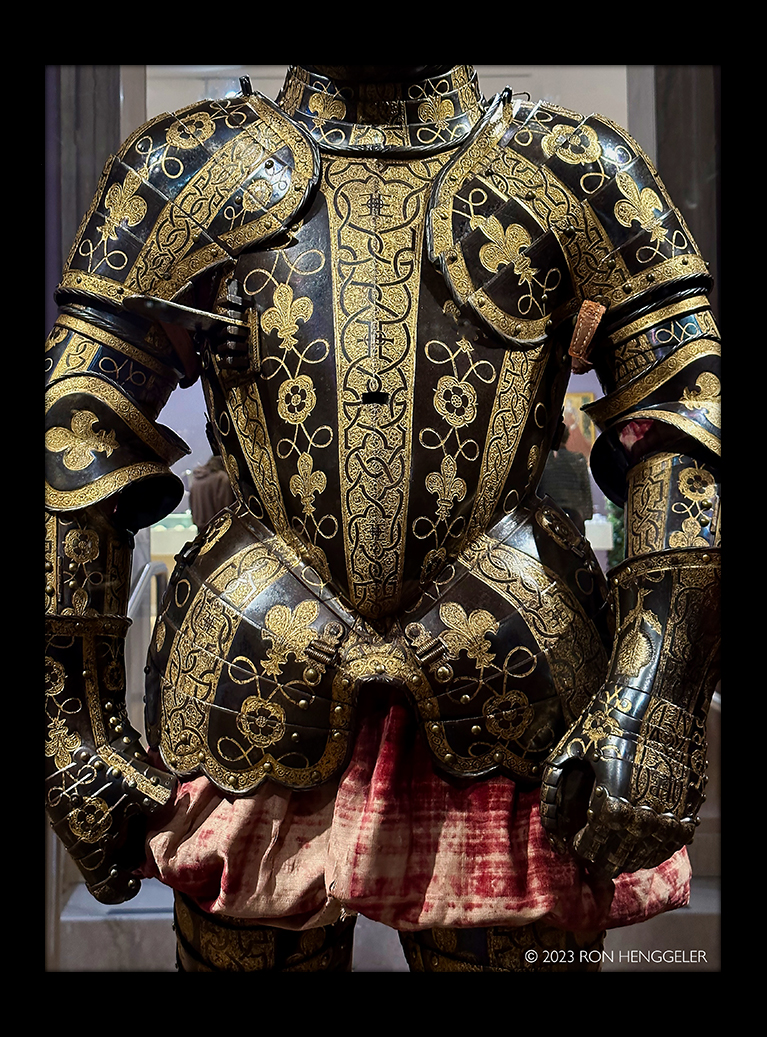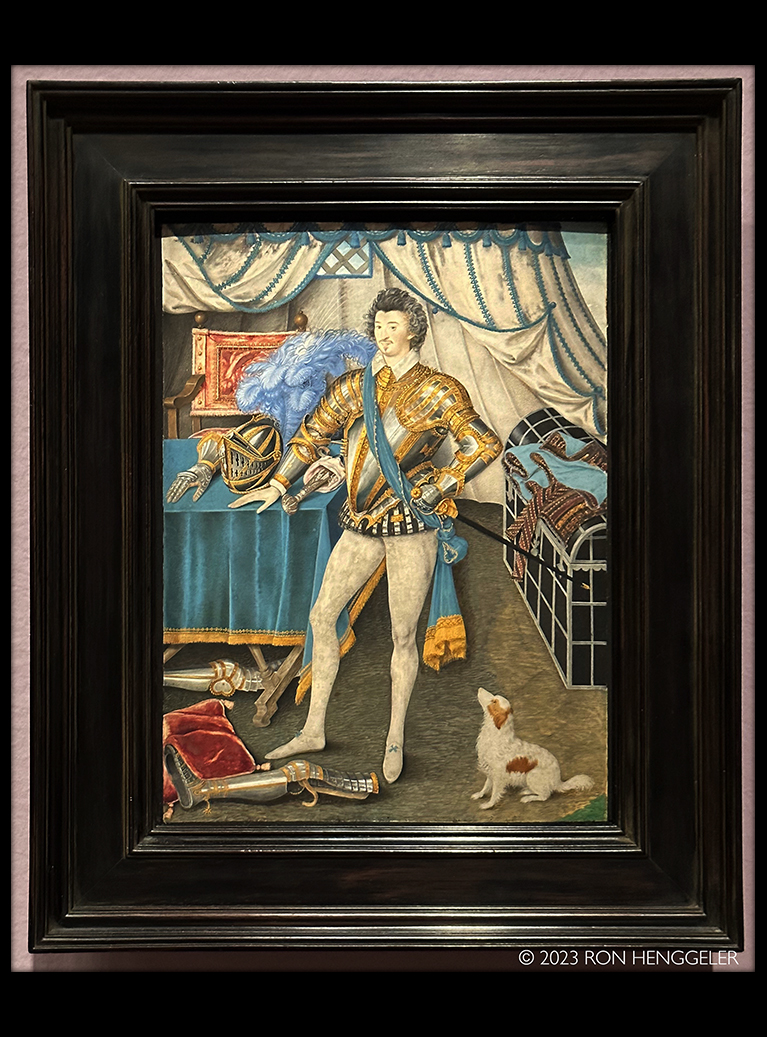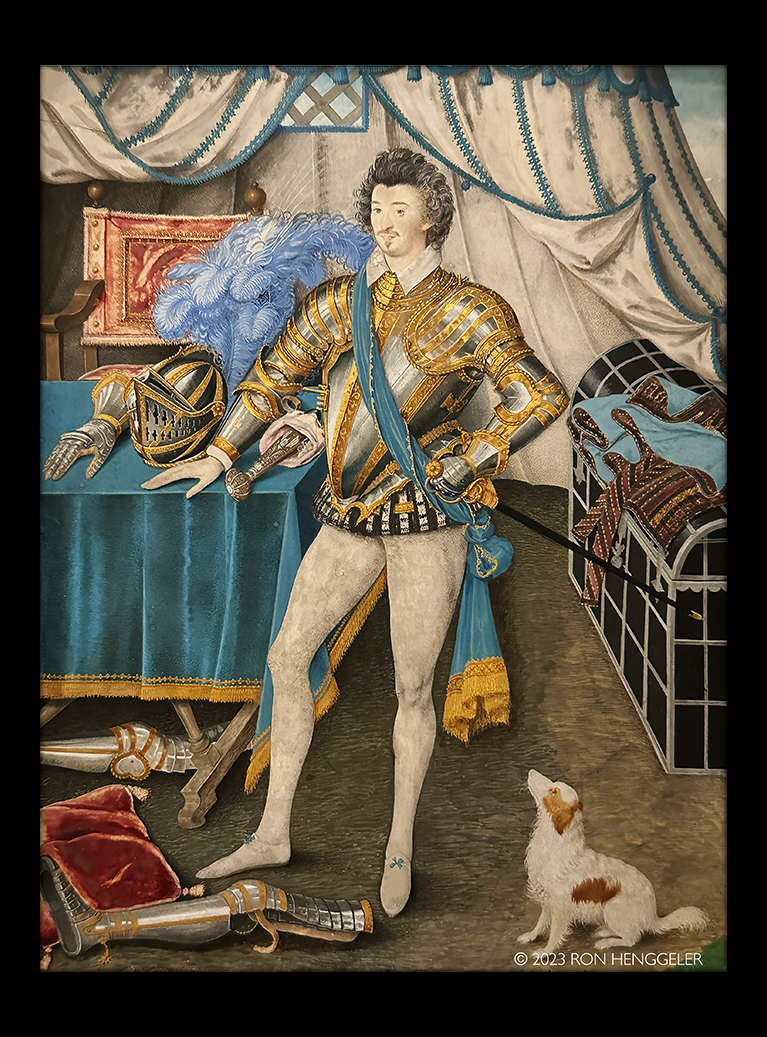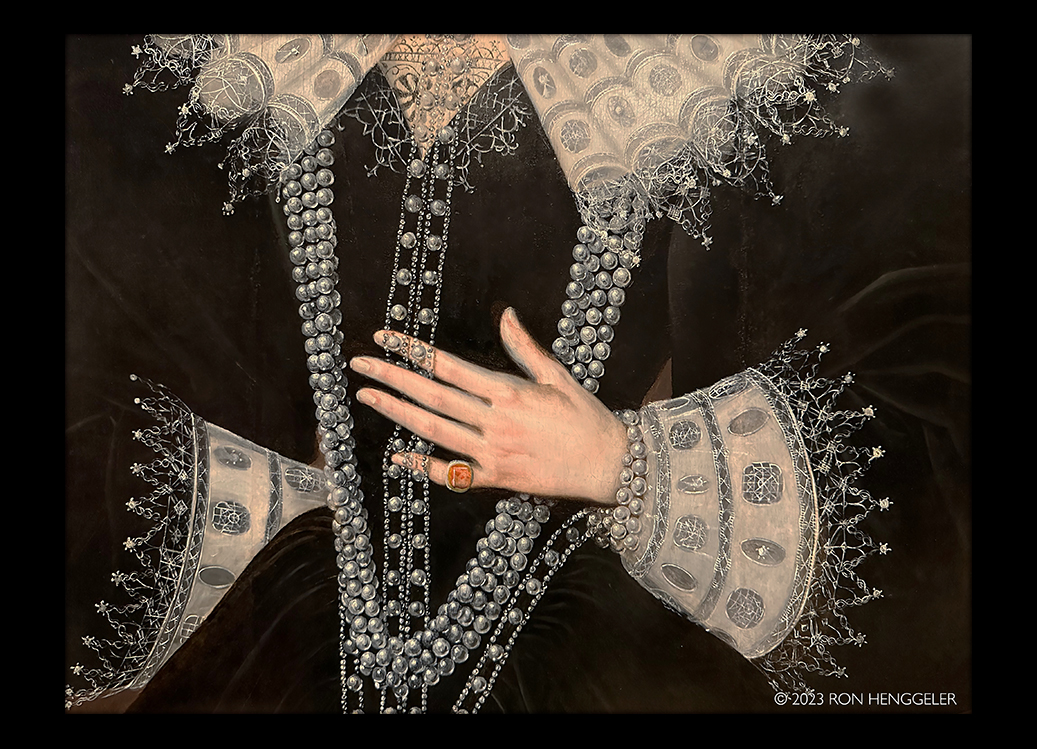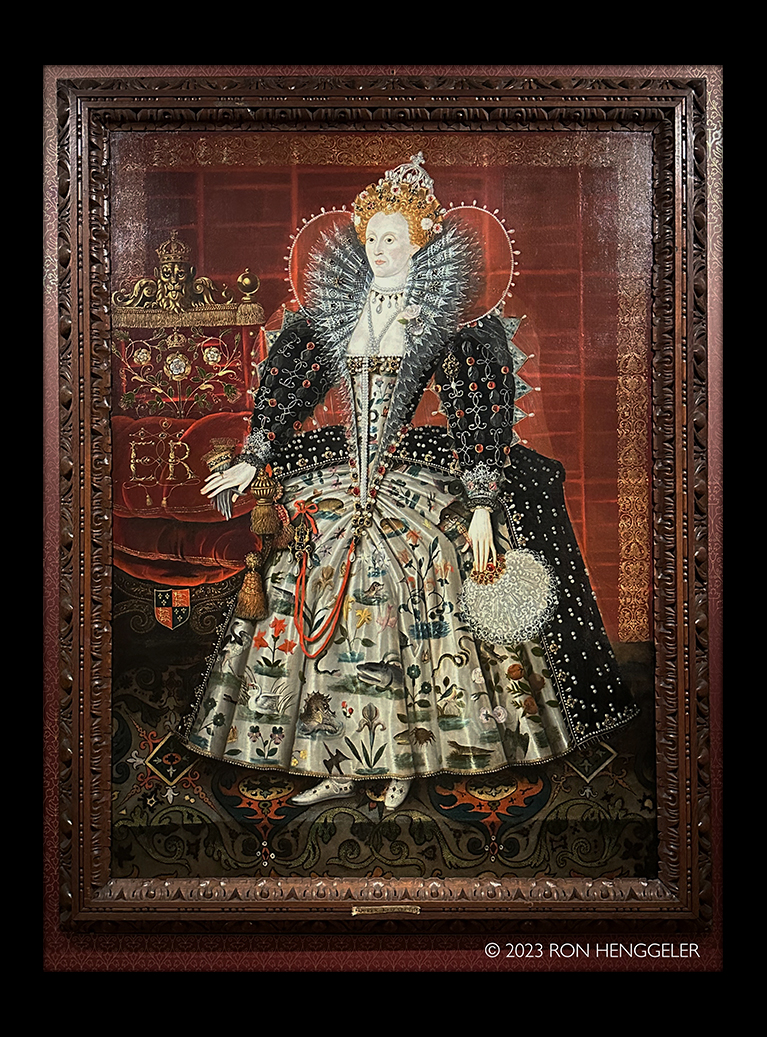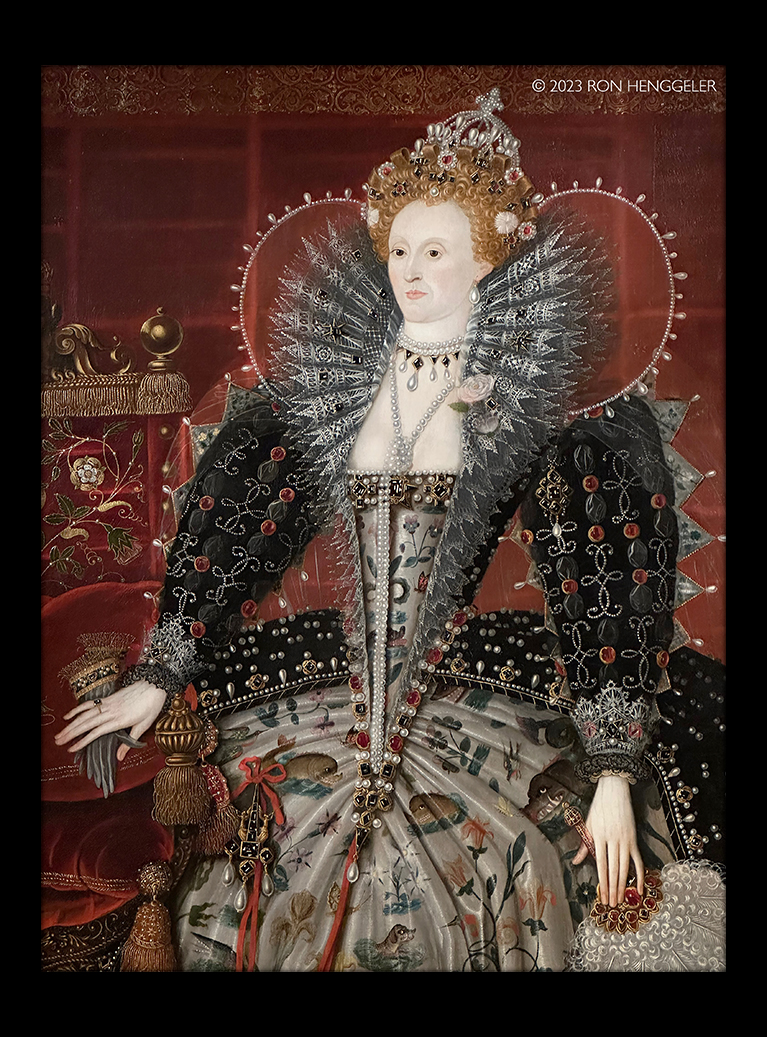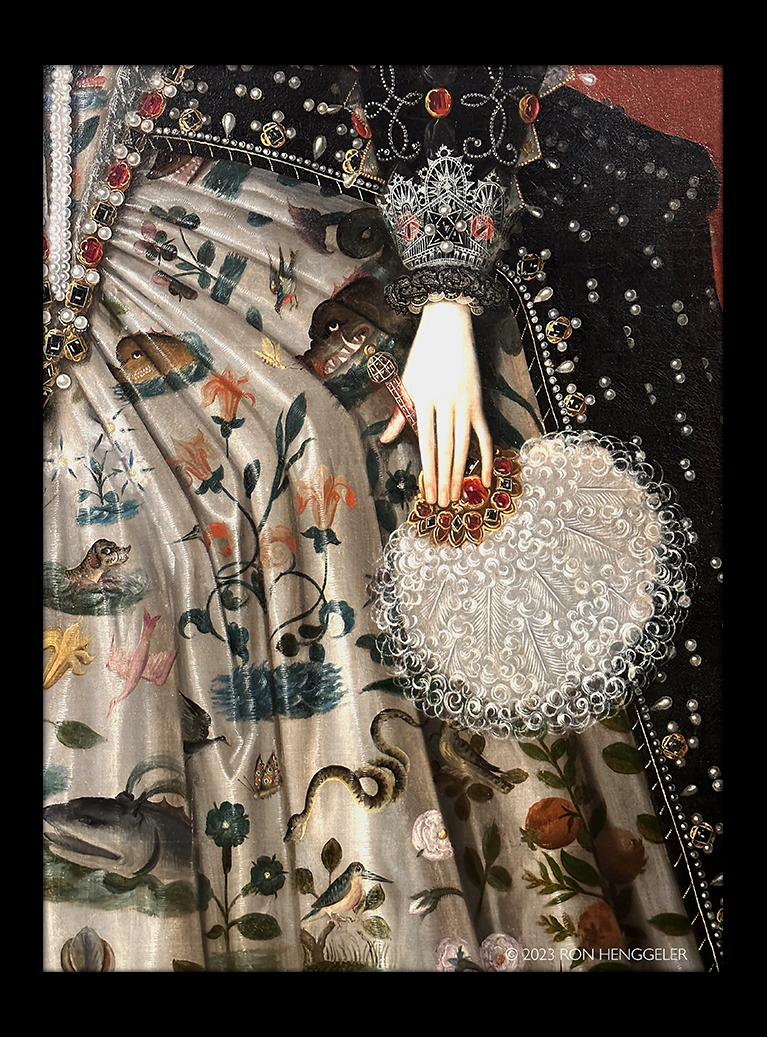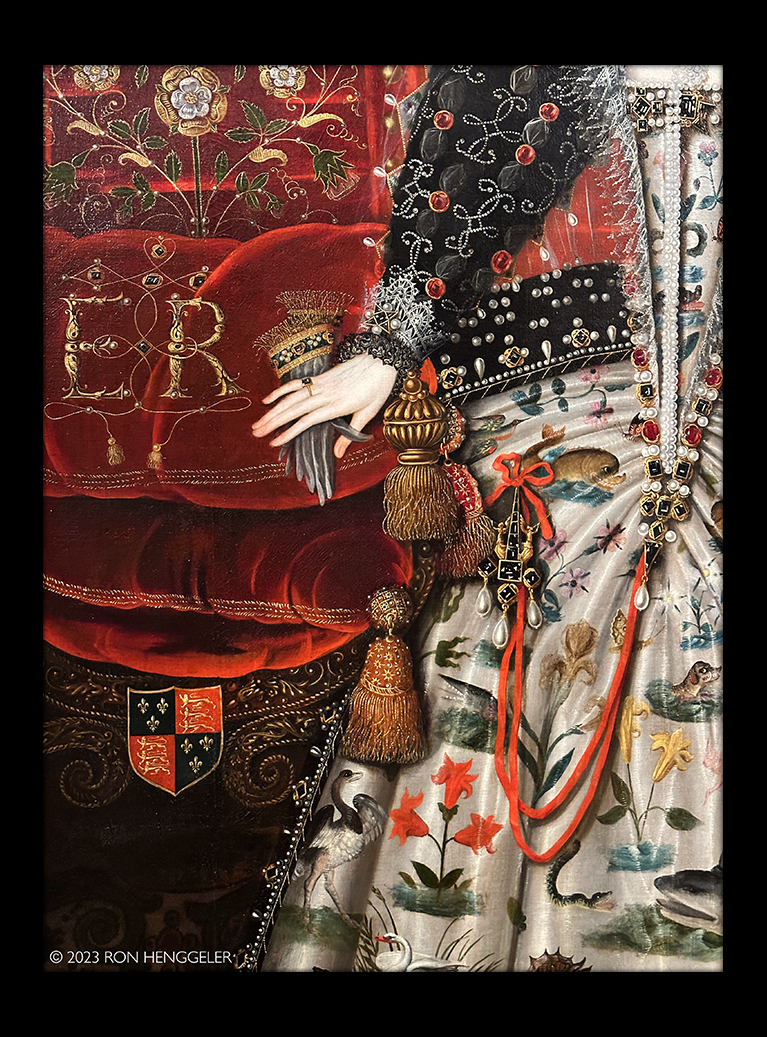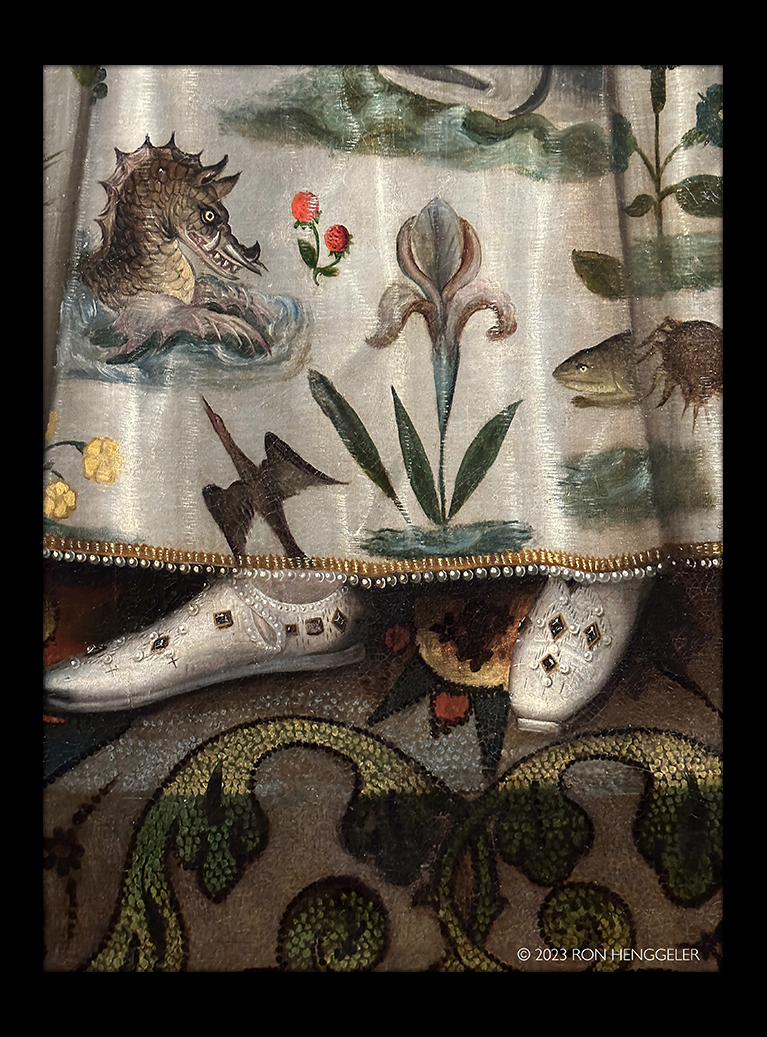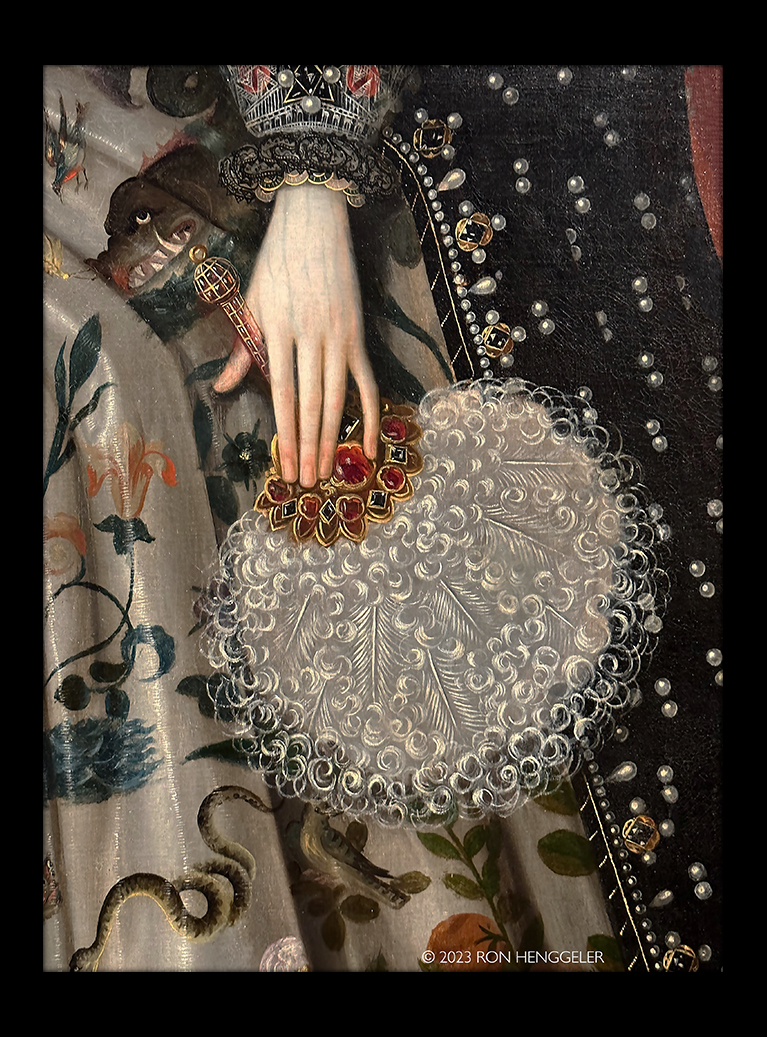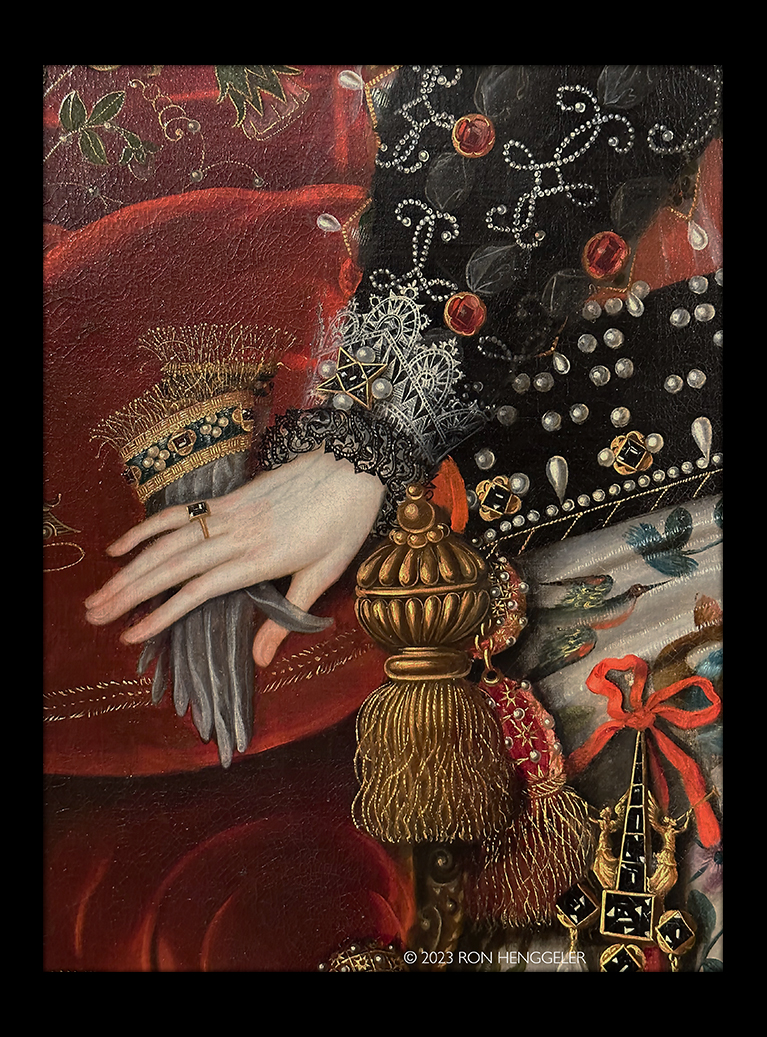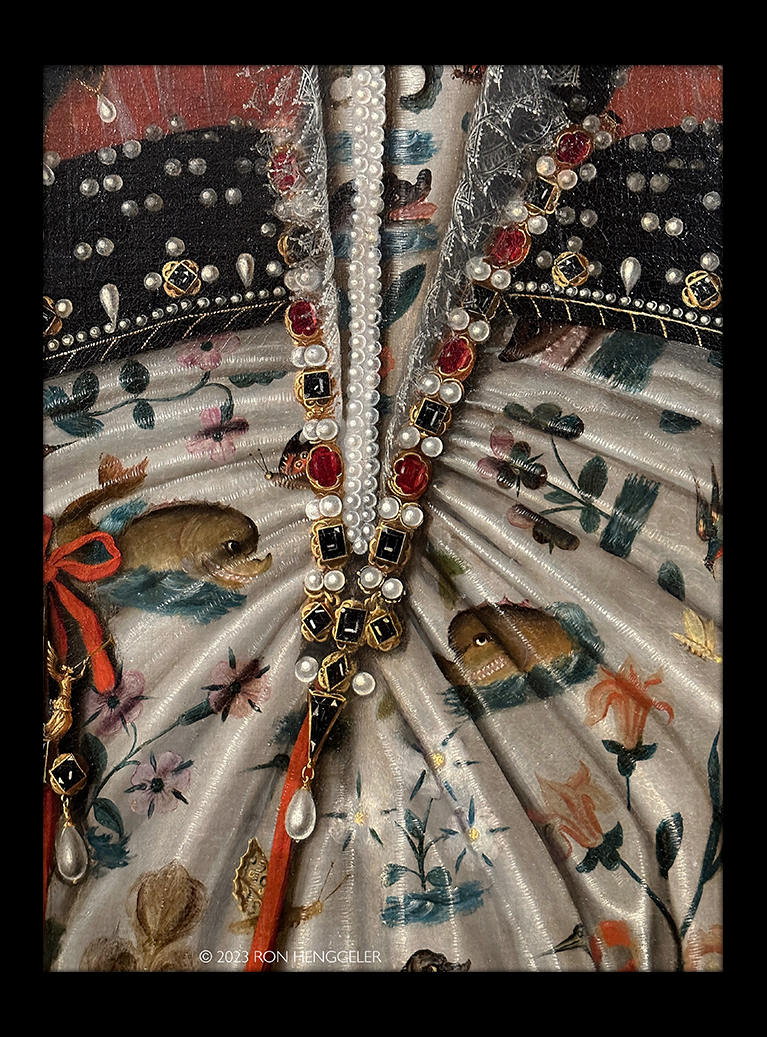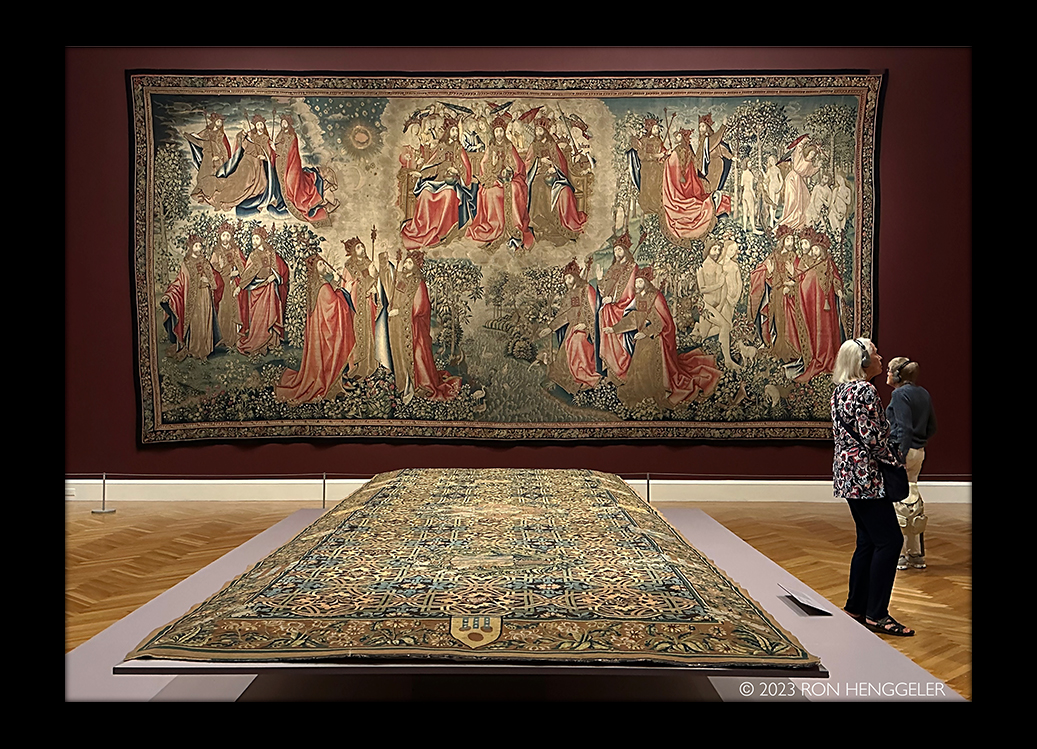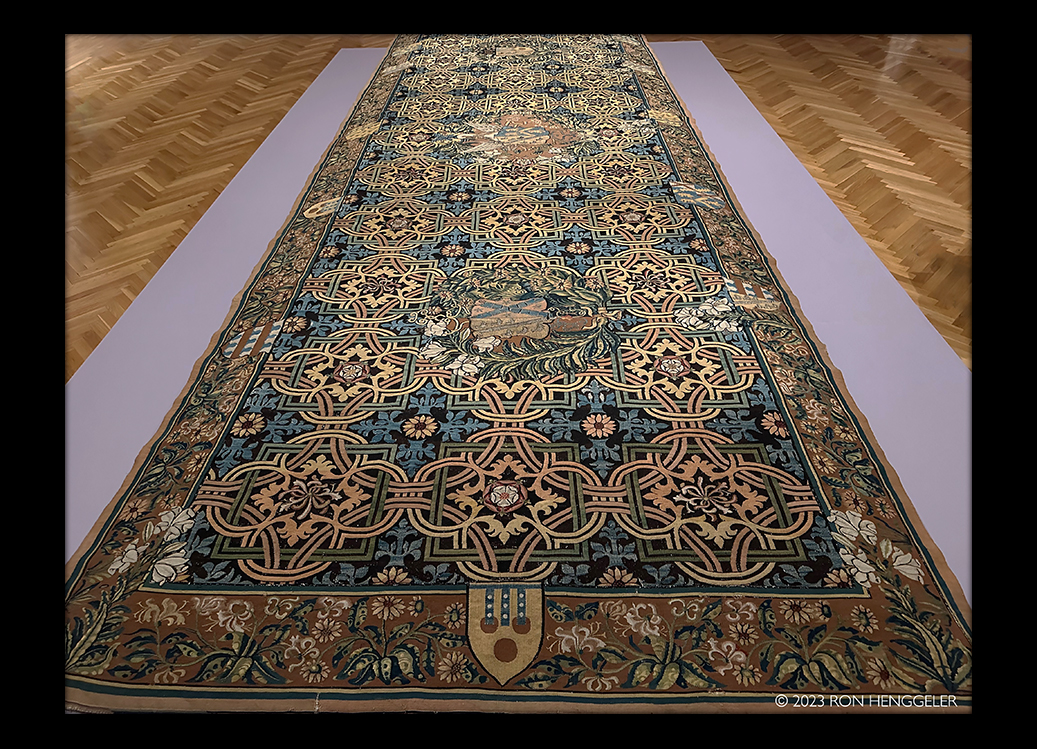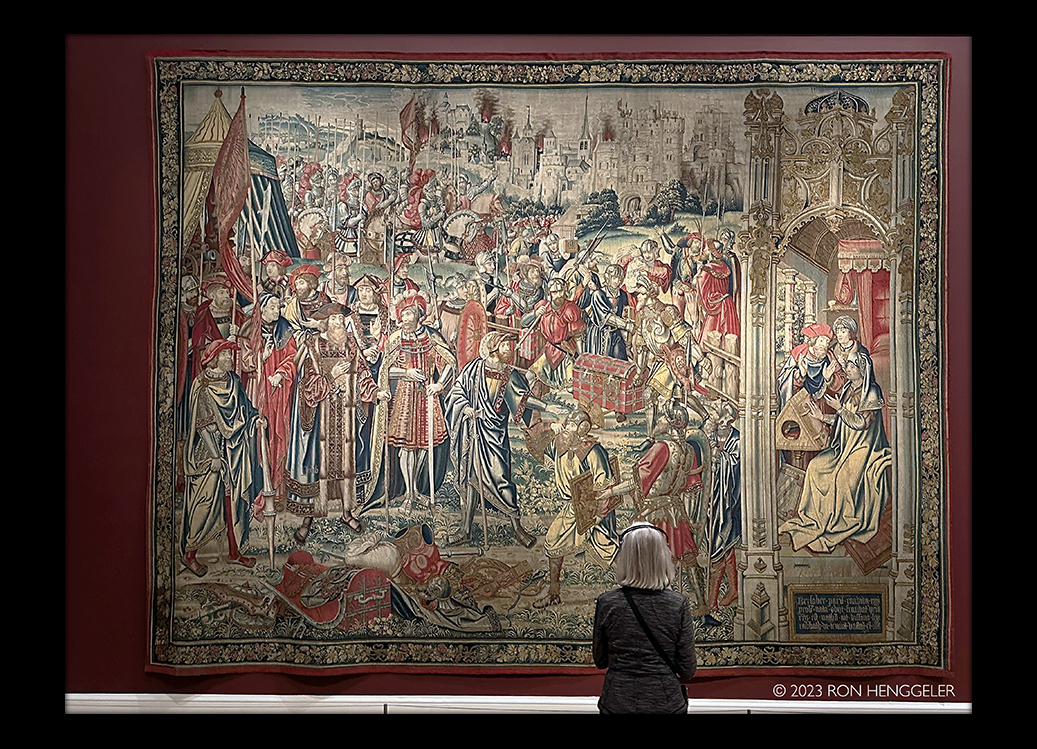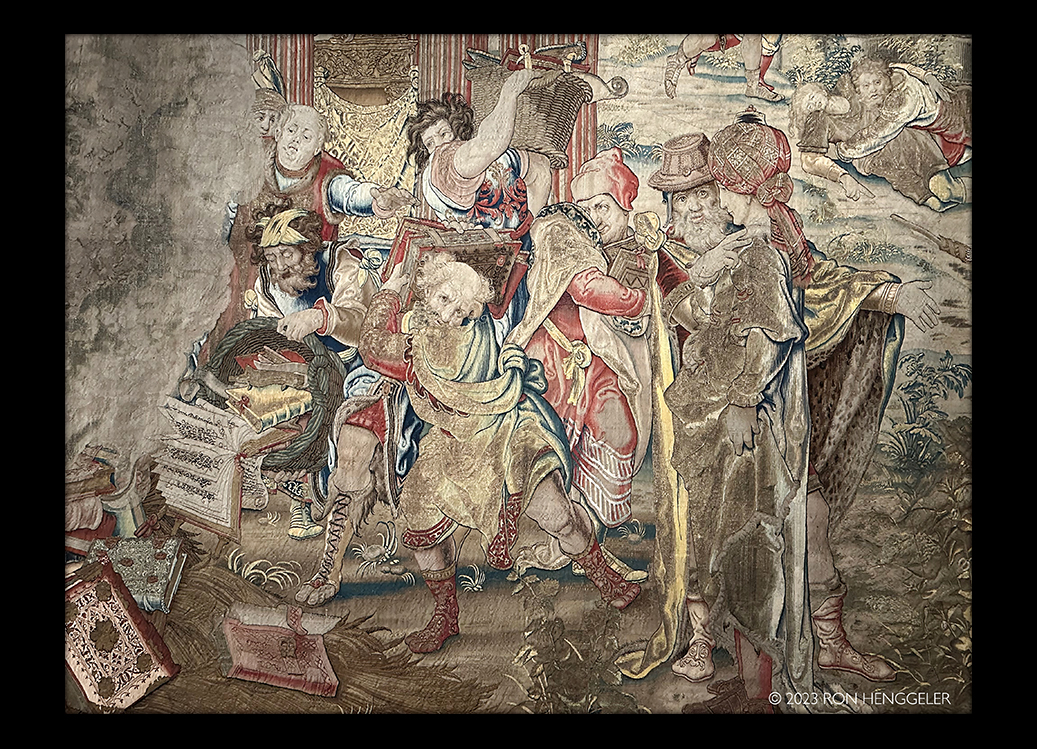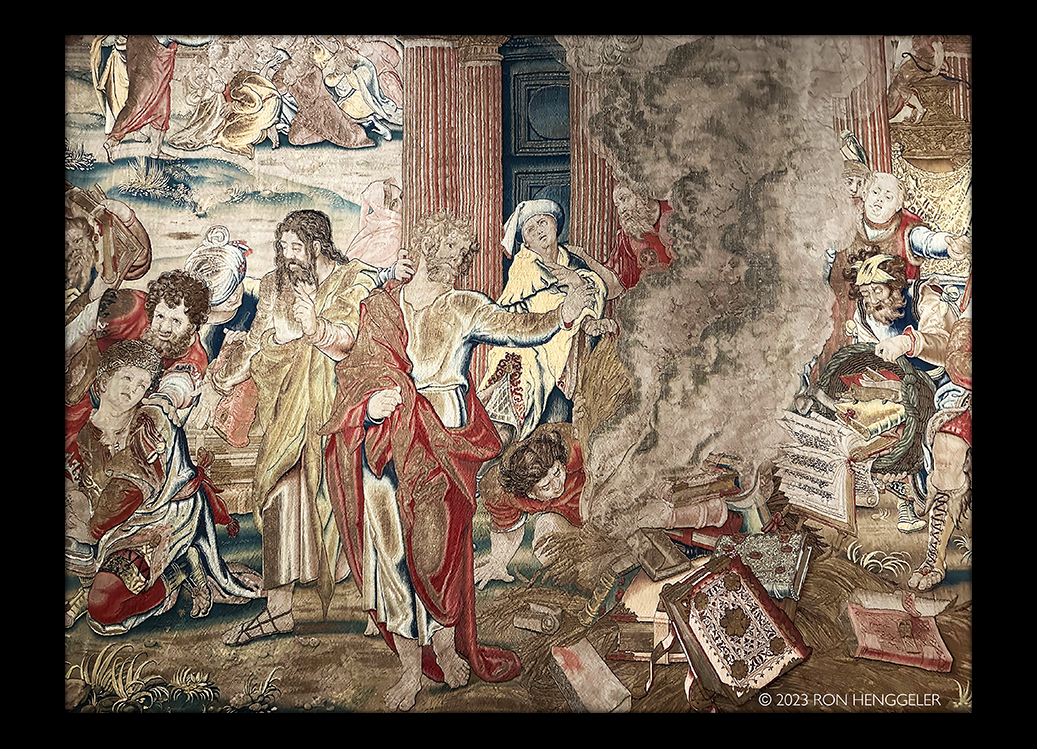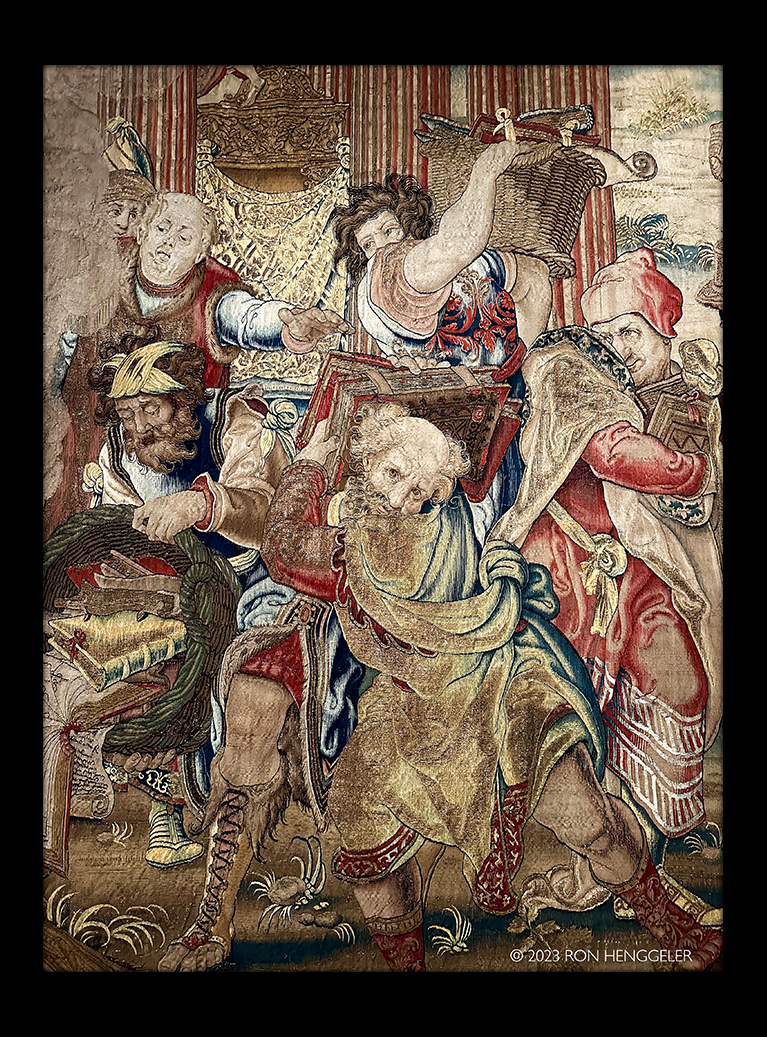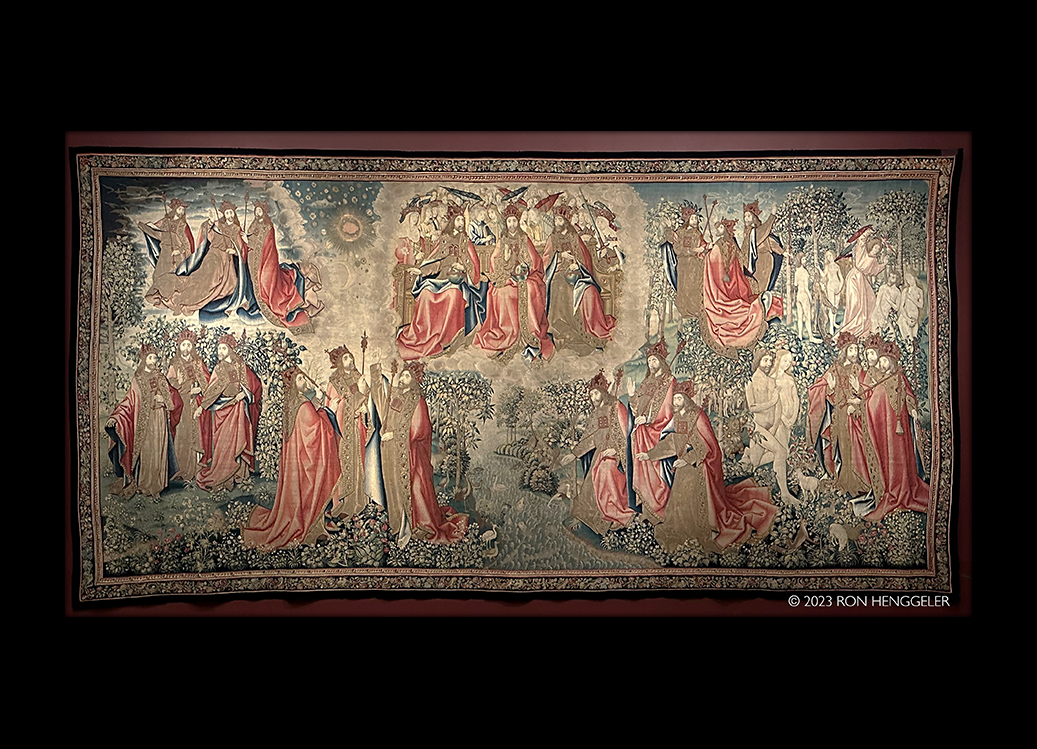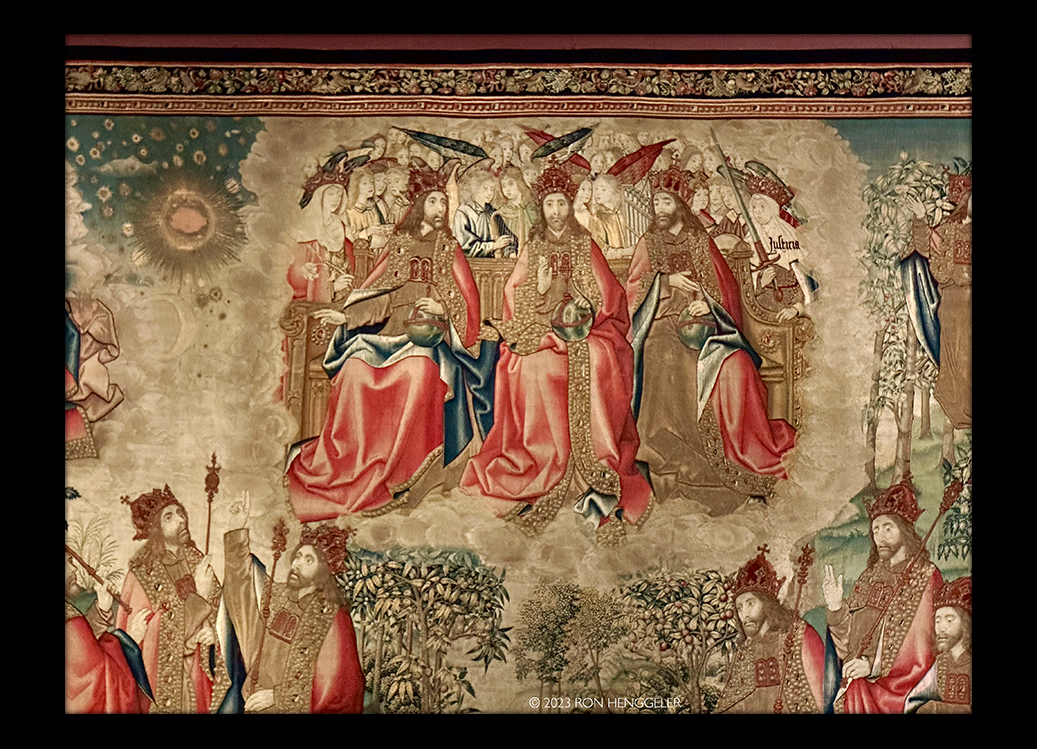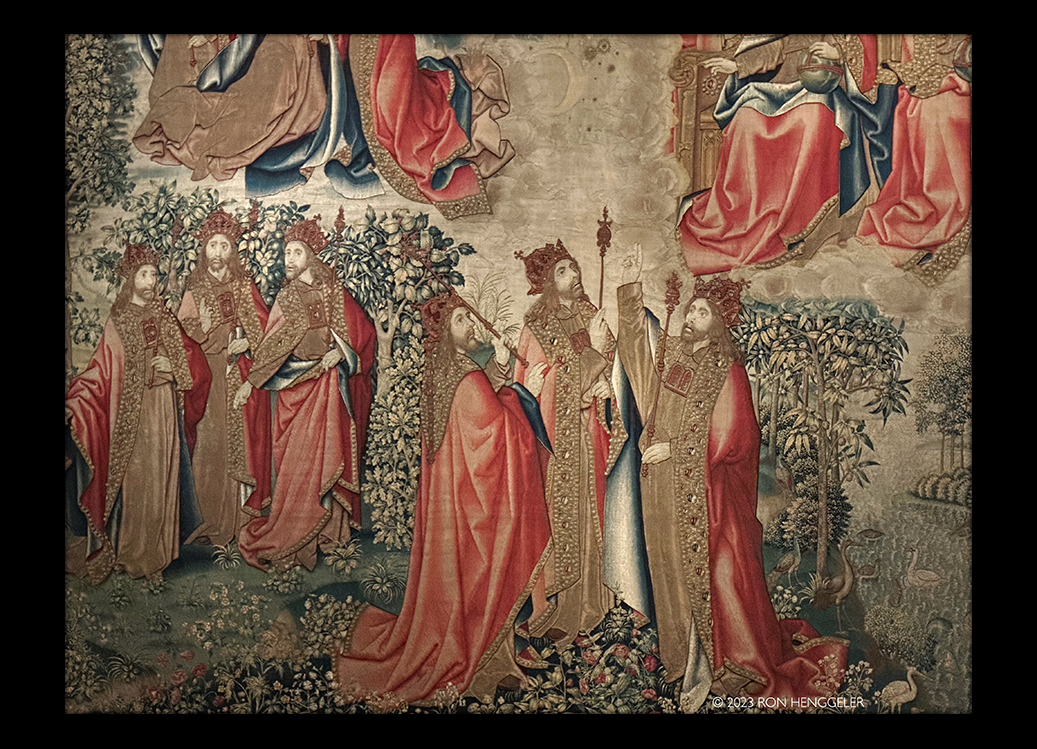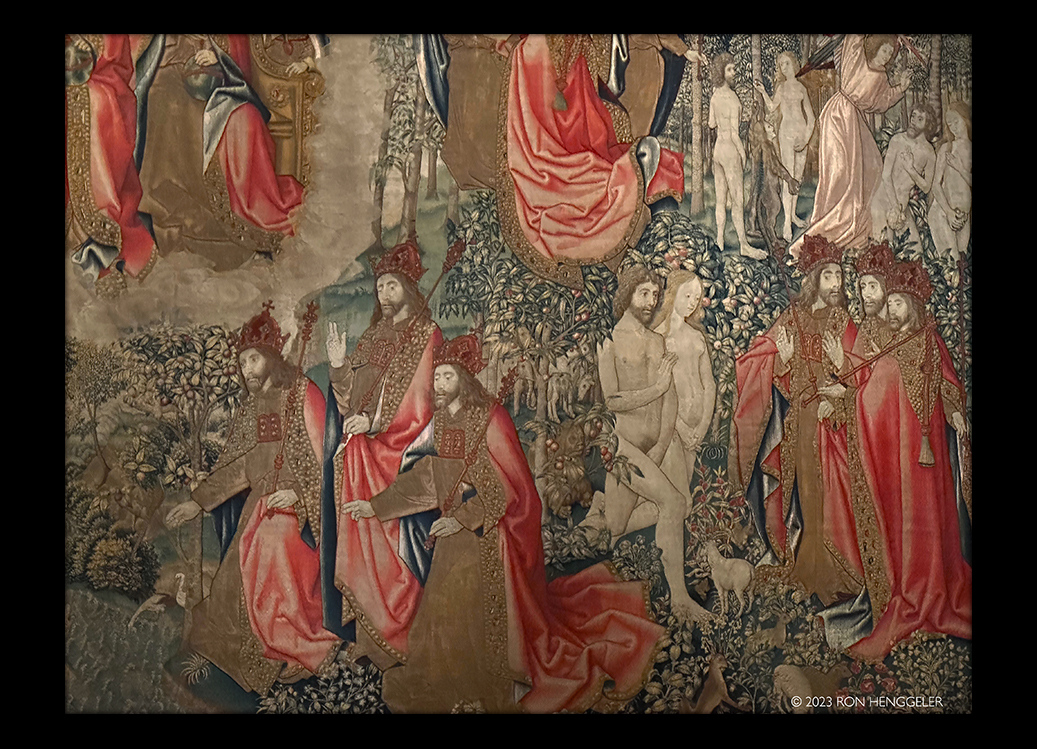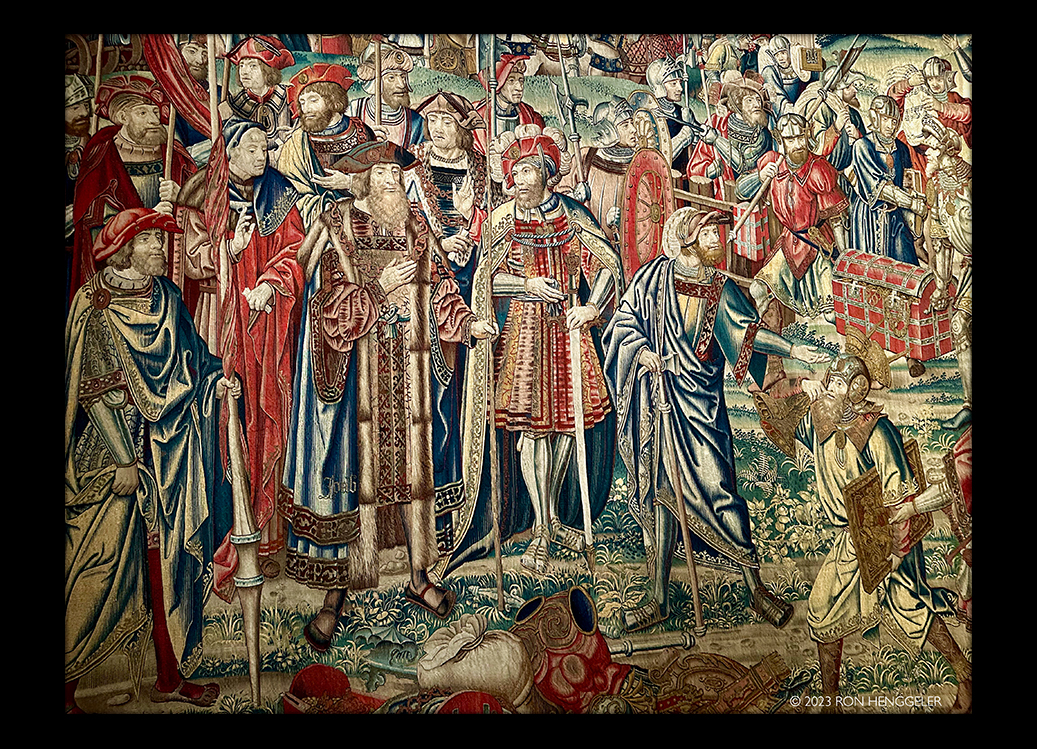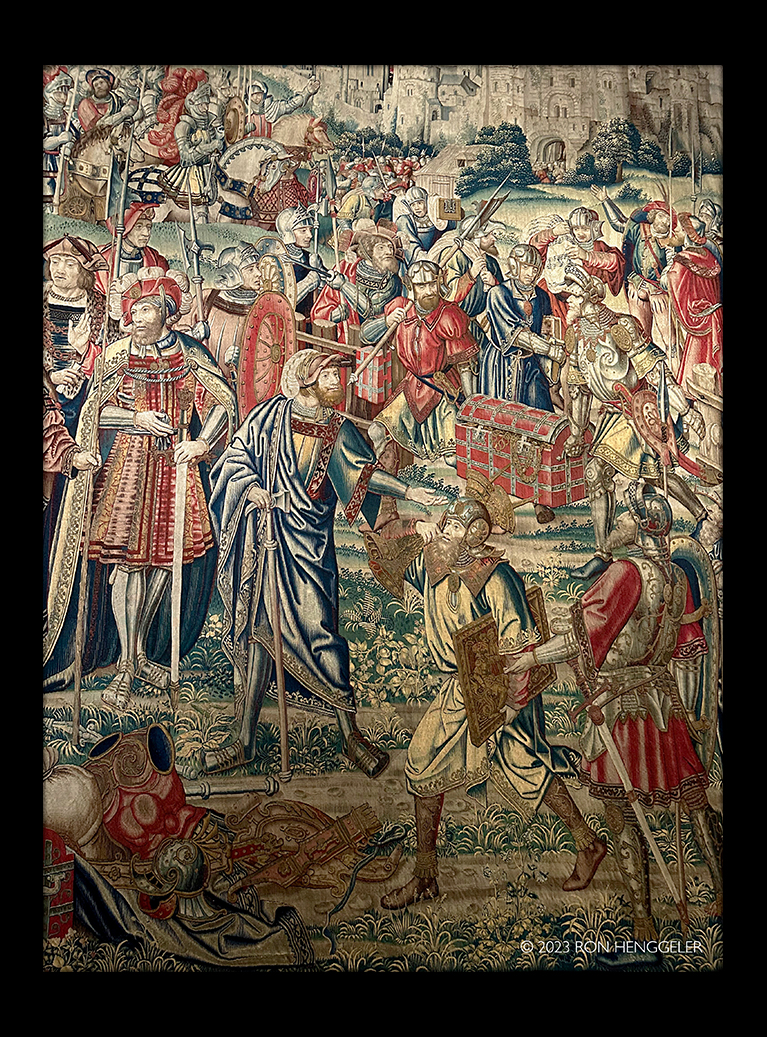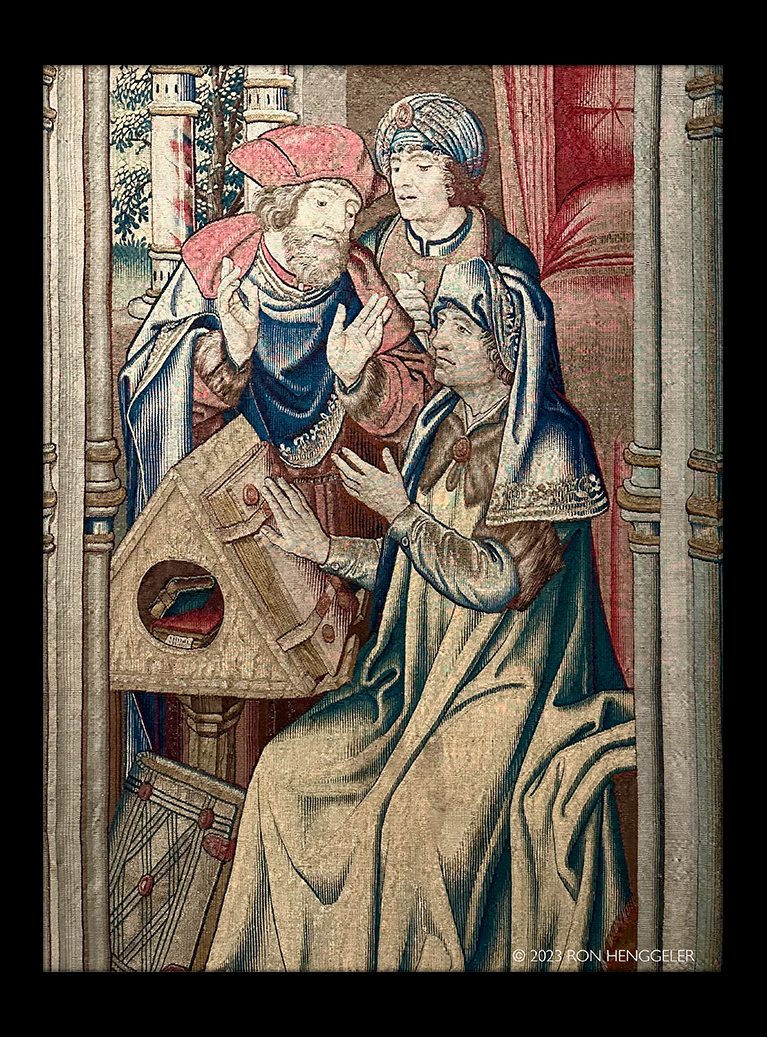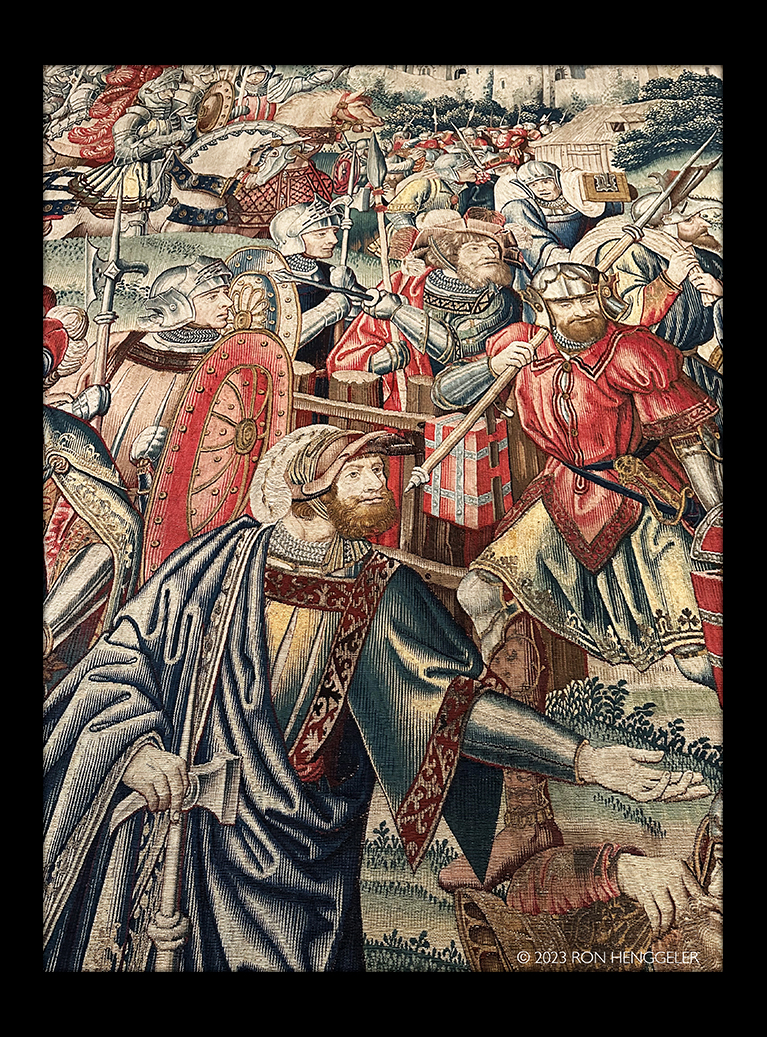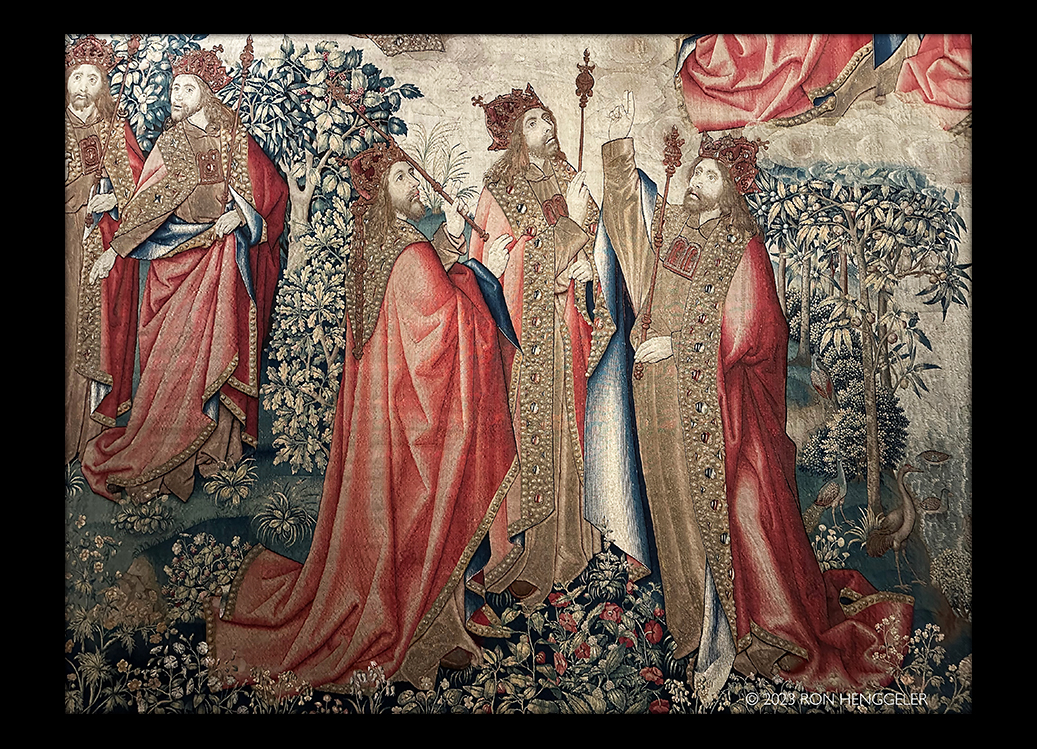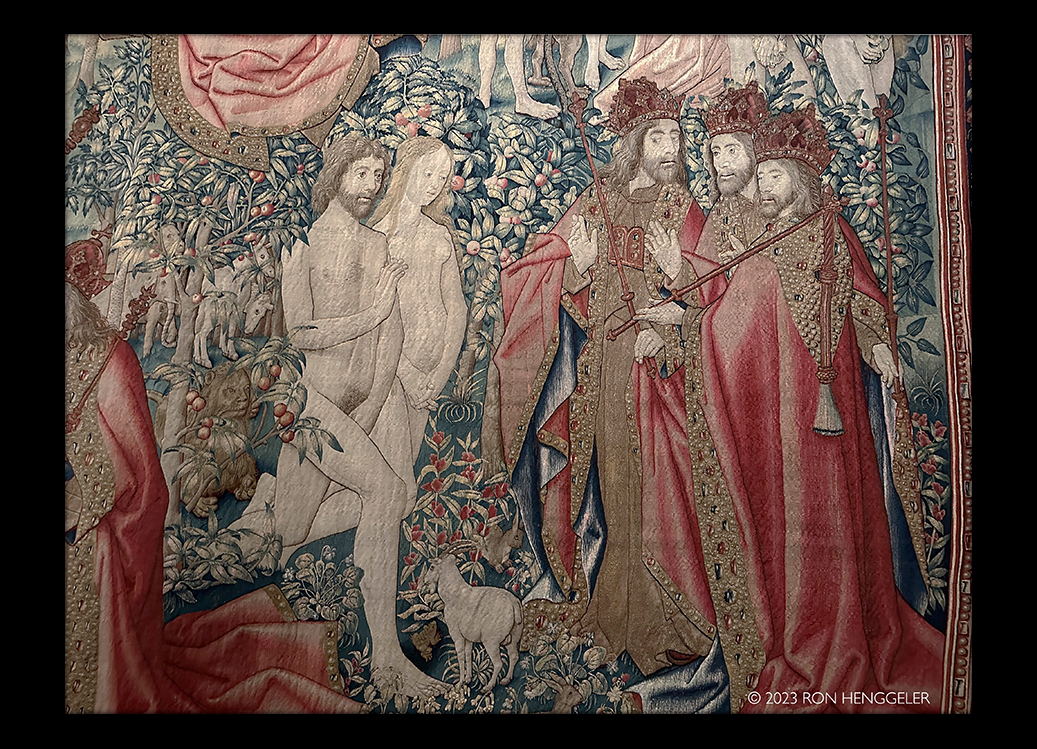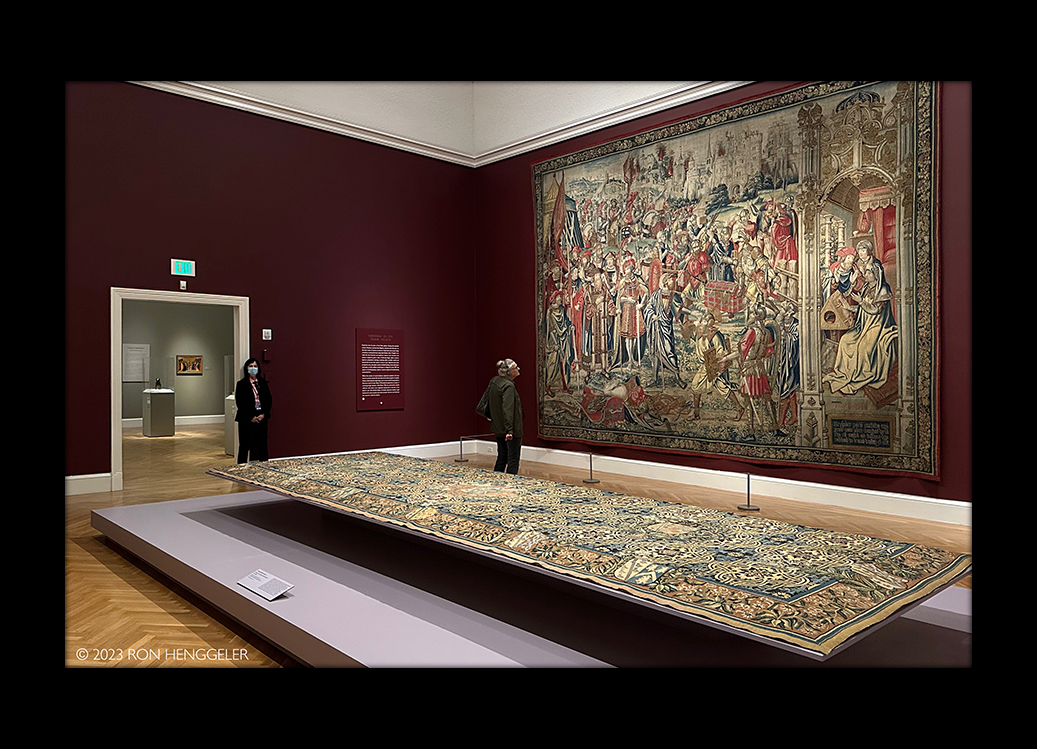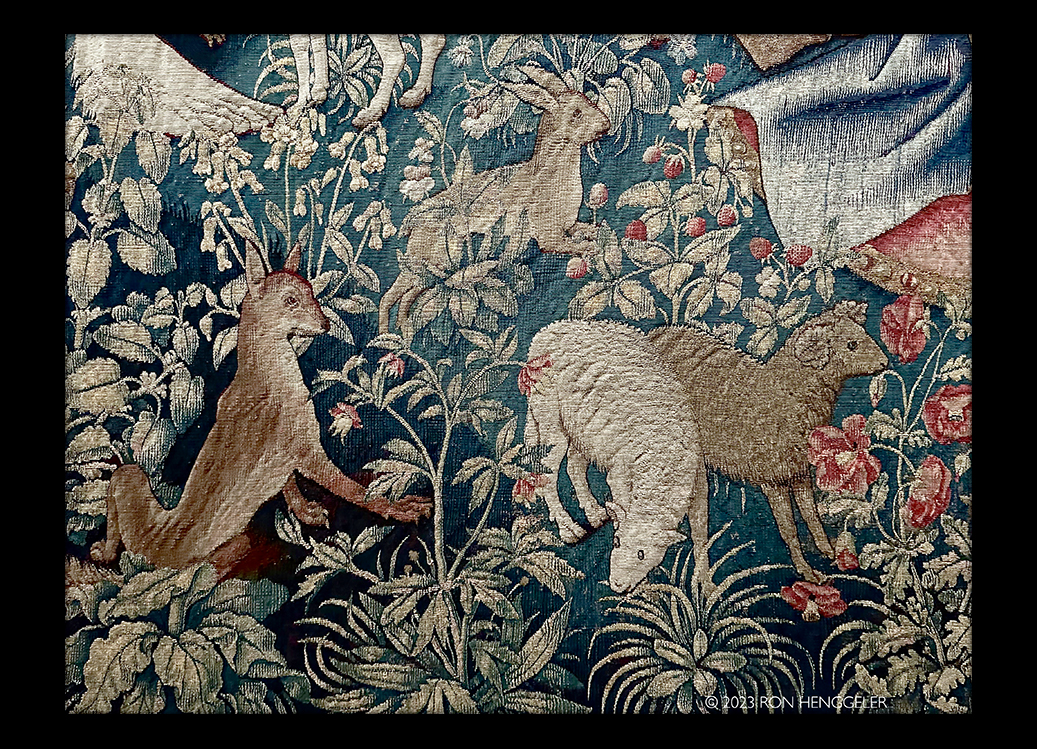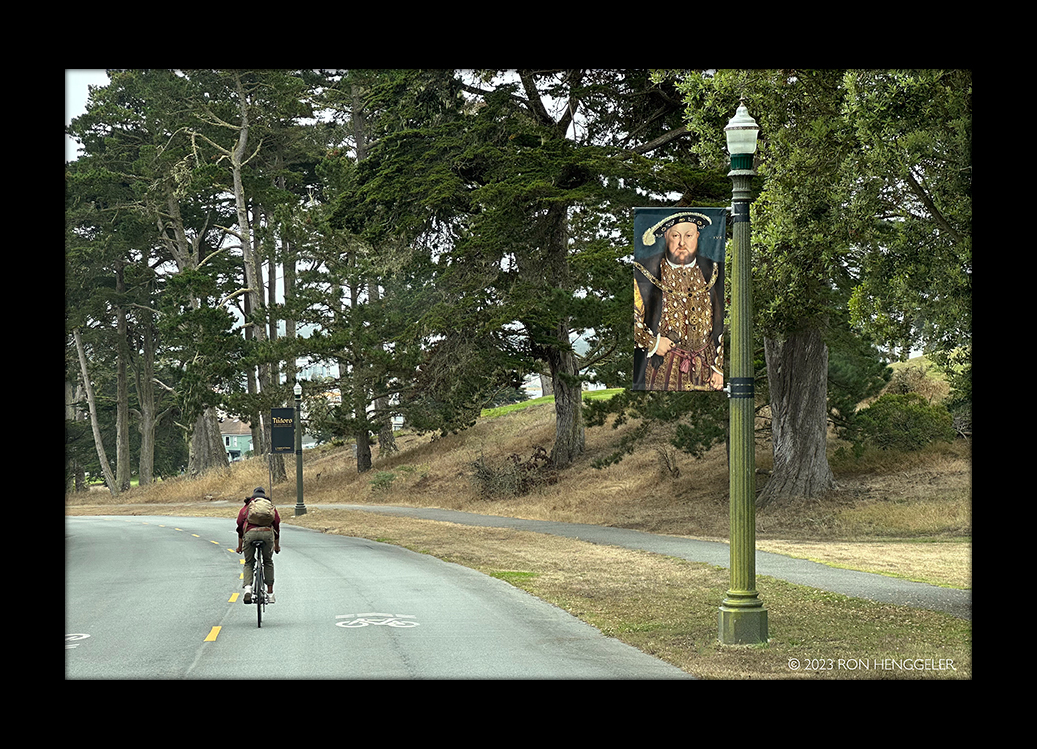| |
July 21, 2023
The Tudors: Art and Majesty in Renaissance England |
|
| |
|
|
| |
A friend and I recently visited the Legion of Honor to see the Tudors Exhibit.
The Tudors Exhibit -June 24th to September 24th 2023 |
|
|
|
| |
The ambitious, ruthless, and visionary stars of English history, the Tudors continue to inspire both scholarly research and popular culture.
During the reigns of the five Tudor monarchs, spanning more than one hundred years, from 1485 to 1603, England evolved from a medieval kingdom in a Catholic dominated Europe to a Protestant nation with a distinct Renaissance culture, poised to emerge as a European power on the global stage.
Our impressions of the Tudors and their world are largely informed by the magnificent art and architecture they left behind. Palaces, rich textiles, painted portraits, manuscripts, and lavish metalwork and jewelry convey a court culture that was cosmopolitan intellectual, and generous. Yet the very splendor of Tudor art belies a dynasty plagued by insecurity. Henry VII who usurped the throne in 1485. had onlv a distant claim to kingship. His son Henry VIlI, confident and energetic, was ultimately compelled by his desperate need for a son to serve England's ties with the Roman Catholic Church. Henry VIl's son, Edward VI, who reigned briefly during his minority, attempted to fill his father's shoes, while Henry's daughters, Mary I and Elizabeth I, faced adversity as England's first and second reigning queens, though Elizabeth ultimately achieved a balance between different political factions, repelled invasions by her Catholic adversaries, and left England more prosperous than ever before.
The splendid objects in this exhibition illustrate the Tudors use of art to legitimize their claim to the crown, rival the courts of Renaissance Europe, and project a stable, kingly image. Despite lasting for only three generations, the Tudors' legacy has endured into our own time. |
|
| |
|
|
|
| |
Candelabrum
London 1529-1540
Benedetto da Rovezzano
Along with the two bronze angels also on view in this gallery, this monumental candelabrum formed part of a magnificent tomb design originally commissioned by Henry VIll's chancellor, Cardinal Thomas Wolsey. Reflecting Wolsey's characteristic disregard for traditional conventions of humility or propriety for a cardinal, it was to include multiple figures and a colonnade surrounding the tomb. The front and back of the candelabrum display the coat of arms of Henry VIII, Tudor roses, and, on the plinth, the engraved arms of Cardinal Wolsey. |
|
| |
|
|
|
| |
After the cardinal's fall from grace, Henry VIII appropriated the project for himself. Neither the king nor his children, however, ever completed the tomb, and the disparate elements were scattered; these three objects are reunited in this exhibition for the first time in four hundred years.
This object, made up of ornamental features derived from ancient classical art, vases, a baluster column, and acanthus motifs, represents a pivotal moment in Renaissance metal-work. It also represents the growing presence of Renaissance art at the English court. |
|
| |
|
|
|
| |
Angels bearing candlesticks
London 1524-1529
Benedetto da Rovezzano
These two angels, along with the monumental candelabrum in the center of this gallery, are part of a group of nine surviving elements of a magnificent tomb project. The tomb was originally commissioned by Henry VIII's chancellor, Cardinal Thomas Wolsey. After the cardinal's fall from grace, Henry VIlI appropriated the project for himself. Neither the king nor his children, however, ever completed the tomb, and the disparate elements were scattered; these three objects are reunited in this exhibition for the first time in four hundred years. |
|
| |
|
|
|
| |
Angels bearing candlesticks
London 1524-1529
Benedetto da
angels were designed and cast in London by Florentine craftsman Benedetto da Rovezzano. Rovezzano pushed monumental bronze casting to its limits, achieving lifelike
fluidity of movement rarely before attempted in metalwork and rivaling in virtuosity and innovation anything produced in his native Florence. These objects represent a pivotal moment in the development of great Italian metalwork
sculpture and the growing presence of Renaissance-style
artwork at the English court. |
|
| |
|
|
|
| |
Portrait of Henry VIII of England
1497
Hans Holbein the Younger
Oil on panel |
|
| |
|
|
|
| |
|
|
| |
|
|
|
| |
Field armor, probably made for King Henry VIII
England, Greenwich, 1527
Etched and gilded steel, copper alloys, and leather
Medieval chivalry was an enduring theme of Tudor court culture. In order to rival the scope and quality of Continental armories, Henry VIII installed Milanese, Flemish, and German armorers in a specialized workshop in the grounds of Greenwich Palace. Armor produced at Greenwich during Henry's reign was similar to Continental precedents but more lavishly decorated.
The entire surface of this suit, one of the earliest associated with Greenwich, is gilded and embellished with etched decoration-Renaissance ornament of elephants, naked boys, and tendrils- sometimes attributed to Hans Holbein the Younger or to Italian sculptor Giovanni di Benedetto da Maiano. The suit was part of a larger set of interchangeable pieces of armor to be worn in tournaments or battle and was probably made for the king, who was an accomplished jouster.…………….. |
|
| |
|
|
|
| |
|
|
| |
|
|
|
| |
|
|
| |
|
|
|
| |
|
|
| |
|
|
|
| |
Portrait Bust of John Fisher, Bishop of Rochester London, ca. 1510-1515
Attributed to Pietro Torrigiano (Italian, 1472-1528)
Polychromed terracotta
Sculptor Pietro Torrigiano astonished courtiers with his talent when he arrived in England from Florence.
Torrigiano's work in England included portrait busts of Henry VII and Henry VIII, as well as sculpture for the tombs of Henry VII and his mother, Margaret Beaufort.
This bust was probably made as a bid by Torrigiano to impress Bishop John Fisher, who was executor of Margaret Beaufort's estate and responsible for her tomb monument. During Henry VIII's divorce proceedings,
Fisher served as Katherine of Aragon's lawyer and was imprisoned for criticizing the divorce and the king's behavior. In recognition of Fisher's loyalty to the queen and the Catholic Church, Pope Paul III made him a cardinal. Henry's purported response, when ordering Fisher's public beheading, was that he would send the new cardinal's head to Rome to receive his hat. |
|
| |
|
|
|
| |
Portrait of Henry VIII, ca. 1509
Attributed to Meynnart Wewyck (Netherlandish, active 1502-1525)
Oil on panel
This is the earliest surviving portrait of Henry VIlI as king, created at the beginning of his reign. The monarch is richly attired in a fur-trimmed robe and cloth of gold, a chain encrusted with rubies and pearls suspended between his shoulders. The circular jewel pinned to his black cap is an ensign, a military or pilgrim badge, which according to the law could be made in gold only for a king. Here, Henry VIII bears a close resemblance to an earlier image of his father- beardless, seen in three-quarter profile, and clasping the red-and-white Tudor rose-visually communicating the continuation of the dynasty. Twenty years and an excommunication later, Henry VIII would eschew medieval conventions of portraiture preferred by his forebears in favor of the greater naturalism developed by Hans Holbein the Younger in his enduring images of the assertive monarch-ready to disrupt tradition. |
|
| |
|
|
|
| |
|
|
| |
|
|
|
| |
Henry VII cope
Cope: Florence or Lucca, 1499-1505
Velvet cloth of gold brocaded with loops of gilded silver and silver metal-wrapped threads
Orphrey and hood: England, ca. 1500
Linen embroidered with silk and gilded-silver metal-wrapped threads
England was a wholly Roman Catholic kingdom during the reign of Henry VII. Notoriously frugal, the king did, however, invest in luxurious materials to project kingly splendor. On this clerical vestment, or cope, one of more than thirty commissioned for Westminster Abbey, the portcullis emblem of Henry's maternal family, the Beauforts, is crowned and seemingly suspended from graceful vines of Lancastrian red roses, bracketed by two Tudor roses-white petals rendered in silver thread-and bordered by Lancastrian S's and additional Tudor roses. Sparing no expense, the velvets were made to size by master weavers working simultaneously in Florence and Luca to hasten their delivery. Though the technical virtuosity was typical of Italian velvets, the bold design was unlike anything previously woven in the material.
In one fell swoop, Henry VII outdid his predecessors, matched his European counterparts, and emblazoned the English seat of power with the recognizable emblems of his family's new royal dynasty |
|
| |
|
|
|
| |
|
|
| |
|
|
|
| |
|
|
| |
|
|
|
| |
|
|
| |
|
|
|
| |
Tabula Cebetis, and De Mortis Effectibus Paris, 1507
Transcription by Filippo Alberici (Italian, 1470-1531); miniatures attributed to an unidentified Parisian artist
Tempera on parchment
British Library, London, Arundel MS
Henry VIl encouraged the perception that he was both a scholar and a military victor. Though this self-characterization was rather generous, he did welcome international intellectuals to his court, hoping to cultivate its reputation as a seat of modern learning. Filippo Alberici, a scholar and friar from Mantua, Italy, created this handsome volume as a gift for the king. In neat text, Alberici has transcribed his translation of a Greek ekphrasis -a detailed description of a work of visual art -then attributed to Socrates. Alberici carefully planned the placement within the text of six lavish miniatures whose production he orchestrated with an unidentified artist in Paris. Never gaining the opportunity to present the book to Henry, Alberic dedicated it instead to an academic at the University of Cambridge. |
|
| |
|
|
|
| |
HENRY • VII
FOUNDER • OF • THE • DYNASTY
Henry VI had a distant claim to the English crown through his mother's illegitimate line descending from Plantagenet kings. His defeat of the Yorkist king Richard II, in battle in 1485, hastened the end of the Wars of the Roses between the two rival English houses of Lancaster and York.
A Lancastrian claimant, Henry closed the rift between the two houses by marrying Elizabeth
of York, heiress of the rival house. Henry attempted to secure and legitimize his new dynasty by marrying his children to royalty in Scotland and Spain. His reign, from 1485 to 1509, was characterized by high taxes and minimal expenditures, and he amassed a fortune that would enable much of Henry VIll's artistic patronage. Despite his fiscal prudence, he invested in artistic luxuries, especially tapestries and textiles from Italy and Flanders, to project the splendor befitting a king. His magnificent chapel at Westminster Abbey, built as a royal mausoleum, represents a final flowering of Gothic architecture as England transitioned toward the Renaissance. |
|
| |
|
|
|
| |
|
|
| |
|
|
|
| |
|
|
| |
|
|
|
| |
Pair of heraldic panels depicting the crest and arms of Charles Brandon, 1st Duke of Suffolk (1484-1545)
England, possibly East Anglia, ca. 1520
Pot-metal and colorless glass, vitreous paint, and silver stain; lead came
J. Paul Getty Museum, 2003.65.1
Despite the advent of the Renaissance, medieval heraldry remained a significant mode of displaying identity and lineage. These two glass panels depict the crest and coat of arms of Charles Brandon, first Duke of Suffolk and Henry VIII's closest friend, who married the king's widowed sister Mary Tudor, dowager queen of France, in 1515. One glass panel depicts Brandon's coat of arms, including rearing lions crowned with ducal coronets, gold forked crosses, and a lozenge pattern of red and ermine. These are crowned with a ducal coronet and encircled by the Order of the Garter, England's most prestigious order of chivalry, with its motto Hon soût qui mal y pense (Evil to he who evil thinks) in Gothic script. The other panel depicts Brandon's crest, a golden lion's head with teardrops and a ducal coronet, and is framed by winged putti, a distinctly classical element.
These panels demonstrate a merging of Renaissance and medieval motifs. |
|
| |
|
|
|
| |
Pair of heraldic panels depicting the crest and arms of Charles Brandon, 1st Duke of Suffolk (1484-1545)
England, possibly East Anglia, ca. 1520
Pot-metal and colorless glass, vitreous paint, and silver stain; lead came
J. Paul Getty Museum, 2003.65.1 |
|
| |
|
|
|
| |
Hermann von Wedigh III, 1532
Hans Holbein the Younger
Oil on panel
The sitter in this exceptionally well preserved portrait is likely Hermann von Weigh III, from a prominent family in Cologne, Germany, where he served as a judge and city council member. The painting resembles Hans Holbein the Younger's portraits of German merchants of the Hanseatic League, a trade federation that dominated commercial activity in Northern Europe and had an outpost in London known as the Steelyard. Holbein probably painted Weigh in Cologne on his way to his second sojourn in England. The paper inserted into Weigh's book quotes the Roman playwright Terence's assertion that "flattery produces friends, truth hatred," a nod to the sitter's humanist interests. Combining text and image to convey his subject's identity, Holbein's approach to portraiture would have a pronounced effect on later Tudor painting. |
|
| |
|
|
|
| |
Costume drawings of Tudor nobility with manuscript additions
England, ca. 1511
Ink and gouache on paper
In 1510, Henry VIII instituted new sumptuary laws regulating the wearing of expensive fabrics, such as cloth of gold, and restricting them to certain classes of the nobility. These drawings show details of robes to be worn by the Tudor nobility. The concentration of black ermine tails indicates the status of the wearer. |
|
| |
|
|
|
| |
Cup and cover
London, 1511-1512
Rock crystal, gilded silver, and colored enamel
Prized for its clarity, rock crystal was worth its weight in gold.
The silver mounts for this sumptuous object, stamped with a London goldsmith's mark, are decorated with colored enamel pomegranates (the device of Henry VIII's first wife, Katherine of Aragon), Lancastrian red roses, and Yorkist white roses.
Though Henry amassed the most splendid Jewel House of any English monarch, very little survives, as most pieces were later melted down, sold, or given as gifts. This magnificent vessel was presented by Henry to a Medic pope, either Clement VII or his predecessor Leo X, and within twenty years of its creation was converted to use as a reliquary (a repository for the alleged remains of a saint) in a Florentine church. |
|
| |
|
|
|
| |
Selection of panels from a room in
Boughton Place, Kent England, ca. 1520-1530
Carved oak.
Sir Edward Wotton (1489-1551), treasurer of Calais, an English enclave on the coast of northern France, renovated his country manor, Boughton Place, Kent, in the 15205 with a paneled solar, a comfortable room where the family congregated. These carved oak panels, a selection from nearly three hundred, were installed on the walls of the room to provide warmth during cold winters. Many of the panels feature Gothic ornament, including floral spire motifs, while others are decorated with distinctly classical imagery, such as trophies and heads in profile, demonstrating that Renaissance developments were adopted in the decoration of the country houses of the gentry. One profile notably depicts a man of African descent, evidence of the presence of Black people in Tudor England, whose treatment and roles varied based on social standing. |
|
| |
|
|
|
| |
Martyrdom of the Seven Maccabee Brothers and Their Mother
Antwerp, ca. 1530-1535
Dirck Vellert (Netherlandish,
ca. 1480/1485-ca. 1547)
Stained glass
The Old Testament scene depicts the horrific story of King Antiochus IV Epiphanes murdering a Jewish family for their refusal to eat pork, a narrative of religious persecution that would have resonated with many populations in sixteenth-century Europe. |
|
| |
|
|
|
| |
|
|
| |
|
|
|
| |
|
|
| |
|
|
|
| |
|
|
| |
|
|
|
| |
|
|
| |
|
|
|
| |
Man in Royal Livery, 1532-1535
Hans Holbein the Younger (German)
Oil and gold on vellum, laid on linden panel. |
|
| |
|
|
|
| |
Portrait of Jean de Dinteville (French Ambassador to the Court of Henry VIII), a. 1540
Ambrosius Benson (Netherlandish, d. 1550)
Oil on wood panel |
|
| |
|
|
|
| |
Astronomicum Caesareum (Astronomy of the Caesars)
Germany, Ingolstadt, 1540
Written by Petrus Apianus (German, 1495-1552); illustrated by Michael Ostendorfer (German, ca. 1490-1549)
Printed text on paper with hand-colored woodcut illustrations
Henry VIII, who owned the finest contemporary books on the market, likely kept his copy of this navigational manual with other astronomical books in the Secret Jewel House at the Tower of London. The volume--authored by Petrus Apianus, astronomer to Holy Roman Emperor Charles V and mathematics professor at Ingolstadt University-offered moveable diagrams alongside instructions for reading astronomical charts and navigating using the stars. These two luxury copies, on unusually thick paper decorated with gloriously hand-colored woodcuts, belonged to a print run Apianus gifted to an elite group of rulers. The marvelous illustrations of the phases of the moon and the constellations of the northern sky, shown here, must have appealed to scholarly recipients of this volume more so than its practical applications. |
|
| |
|
|
|
| |
Jane Seymour, 1536-1537
Hans Holbein the Younger |
|
| |
|
|
|
| |
In May 1536, days after Henry VIlI accused his wife, Anne Boleyn, of adultery and had her imprisoned, the king began planning his marriage to Jane Seymour, who had served as lady-in-waiting to Anne and to Katherine of Aragon. Jane brought Henry his long-awaited male heir, Edward VI, on October 12, 1537, but she died twelve days later of complications from the birth. This lifelike portrait was probably painted shortly after their nuptials. As queen consort, Jane was known for her peacemaking efforts with Henry's Catholic relatives as she advocated to restore Mary to the line of succession.
|
|
| |
|
|
|
| |
|
|
| |
|
|
|
| |
Hans Holbein the Younger lavished attention on Jane's velvet dress, embroidered with a latticework of gold thread, and on the pearl-encrusted jewelry that adorns her cap, neckline, and belt. Even more captivating is the strong sense of personality Holbein captured in her steadfast expression, resulting in an iconic portrait of this gentle and influential woman. |
|
| |
|
|
|
| |
|
|
| |
|
|
|
| |
|
|
| |
|
|
|
| |
Hans Eworth
(Flemish, ca. 1525-after 1578)
Oil on panel
Denver Art Museum, Gift of the Berger Collection Educational Trust, 2021.28
This portrait depicts Edward Fiennes de Clinton, first Earl of Lincoln (1512-1585), the year he was named Lord High Admiral by Edward VI. Lincoln is depicted in the fantasy dress of an ancient Roman emperor, decorated with gilded armor garniture and a ram's head. Lincoln's stoic gaze, rendered in profile on a round panel, replicates the format of an ancient imperial coin. The Latin inscription "Invidia torquet autorem" (Let envy torment its author) frames Lincoln's head, perhaps as a reminder of the self-discipline required to maintain an exalted political position. Lincoln evidently embraced this motto and continued to serve the Tudor monarchy under the reign of Elizabeth I. |
|
| |
|
|
|
| |
Great Bible,
second volume, third book
London, 1540
Printed by Richard Grafton (English) and Edward Whitchurch
(English, d. 1562)
Ink on vellum, with additional illumination.
In 1535, shortly after Henry VIII declared himself Supreme Head of the Church in England, the first Bible in English, the Coverdale Bible, shown at right, was published without royal sanction. Henry, who remained staunchly Catholic, supported limited reforms to the Roman Church, he had been wary of producing a Bible in the vernacular, fearing the interpretive chaos already sweeping through Continental Europe. In 1540 he authorized the Great Bible, the first legal English translation, using the existing text by Miles Coverdale, and every church in England was required to provide a copy. This hand-tinted edition, printed on parchment, was Henry VIll's own luxury version. In the second volume on view here, the title page shows scenes of direct communication from God, underscoring Henry's own elevated position as head of the church and his relationship with God, blasphemous and unthinkable only years before. |
|
| |
|
|
|
| |
Lady Dacre, ca. 1555-1558
Hans Eworth
(Flemish, ca. 1525-after 1578)
Oil on panel
National Gallery of Canada, Ottawa, 3337
Mary Neville, Lady Dacre, and her husband enjoyed some prominence at the court of Henry VIII until 1541, when Lord Dacre was executed for taking part in a poaching raid during which a gamekeeper was killed.
The family was initially stripped of its land and titles, but Lady Dare successfully campaigned to have them restored. Though she had remarried by the time Hans Eworth painted this portrait, she is depicted as a widow in sober dress, a symbolic corsage of flowers, including forget-me-nots, on her breast. The portrait of her late husband hanging behind her, with its blue background and Latin inscription, recalls the work of Hans Holbein the Younger, allowing Eworth to pay tribute to the artist, whose style he emulated here. |
|
| |
|
|
|
| |
|
|
| |
|
|
|
| |
Edward VI, ca. 1547-1550
Attributed to Guillim Scrots (Flemish, active 1537-1553)
Oil on panel
Compton Verney Art Gallery and Park, Warwickshire, United Kingdom, CSV:0037.B
Edward VI was the much longed-for son and heir of Henry VIll, born of his third wife, Jane Seymour. By all accounts an intelligent and sociable child, he reigned for only six years before falling ill and dying at the age of fifteen. Many portraits of the boy king used the profile format of ancient coins and medals to invest his image with royal dignity. In this example, red and white roses-symbols of the dynastic houses united by his grandfather Henry VII-and a lengthy inscription in Latin and Italian promote the idea of the king as a divinely ordained figure whose power over his subjects resembles that of the sun over flowers. |
|
| |
|
|
|
| |
|
|
| |
|
|
|
| |
Edward VI as a Child, 1538
Hans Holbein the Younger (German)
Oil on panel
National Gallery of Art, Washington, DC, 1937.1.64
Hans Holbein the Younger presented Henry VIII with this portrait of his long-awaited male heir as a New Year's present. Rich clothes painted with real gold and a rattle that resembles a scepter make Edward into a miniature version of his father. The Latin inscription occupying the foreground drives this theme home by encouraging the prince to "emulate your father and be the heir of his virtue; the world contains nothing greater." Edward was incorporated into Tudor artistic propaganda from the earliest years of his life. As a boy, he received his education from clergymen aligned with the reformer Thomas Cranmer, archbishop of Canterbury. With Cranmer as his trusted adviser, the adolescent Edward would reign for six years as a devout monarch who transformed the Church of England into a robustly Protestant institution. |
|
| |
|
|
|
| |
EDWARD • VI
PROTESTANT • BOY • KING
Henry VIII's longed for son and heir, Edward VI, inherited the throne in 1547 at the age of nine. A regency council headed by a Lord Protector his uncle, Edward Seymour) governed in the king's name, ostensibly until he came of age at eighteen.
Edward's tutors had indoctrinated him with Protestant beliefs and, under the direction of Thomas Cranmer, archbishop
of Canterbury, the Church of England underwent more intensive reforms, culminating in the publication of a Book of Common Prayer in
1549. In line with the Protestant emphasis on scripture, much religious art was destroyed images of saints were smashed and churches were whitewashed. More secular art forms, such as portraiture, emulated the precedents and aesthetics of Henry VIl's reign as the boy king attempted to fill his father's shoes and project kingly gravitas. However, Edward and his successors did not build as Henry had, preferring to reside in the palaces he left to them. Before he could complete his religious reforms, Edward died of tuberculosis in 1553 at the age of fifteen. |
|
| |
|
|
|
| |
|
|
| |
|
|
|
| |
The "Sea-Dog» table
Probably Paris, ca. 1575
Walnut wood, gilded silver, and inlay of marbles |
|
| |
|
|
|
| |
Under the patronage of Francis I, France was a major center for Renaissance artists and craftspeople. Despite shifting political relations, the Tudors and their courtiers coveted French artistry. This exceptional inlaid table features fantastical beasts based on the drawings of celebrated French designer Jacques Androuet du Cerceau, and was almost certainly acquired in France for George Talbot, Earl of Shrewsbury. When the earl's estranged wife, Bess of Hardwick, one of Elizabeth's principal ladies-in-waiting and one of the wealthiest women in England, took it with her to her new residence at Chatsworth and, later, Hardwick Hall, he complained to the queen that he had paid "$100 and above for it" tens of thousands in contemporary equivalence. Originally brightly gilded, the table can be extended using leaves as well as disassembled into seventeen pieces for easy transportation. |
|
| |
|
|
|
| |
|
|
| |
|
|
|
| |
The Lewknor table carpet
Probably woven in Enghien, 1564
Designed by unidentified artists, probably English and Netherlandish, ca. 1562
Wool (warp); wool and silk (wefts)
This ornamental table covering celebrates the lineage of the aristocratic Lewknor family. It was made for an heiress, Constance
• Lewknor, who-like her queen, Elizabeth I-remained unwed and independent throughout her life. Constance spared no expense for the carpet and the six matching cushions that originally accompanied it, probably commissioning them from Flemish weavers working in Enghien (thirty miles southwest of Brussels), the recognized European center for such foliage-focused, or verdure, tapestries. The fruit in the border is a typical Enghien design, but the artfully naked boys and flower-strewn ground of red (Lancastrian) roses, white (Yorkist) roses, honeysuckle, and lilies suggest that an English preparatory drawing for the central section was sent to Flanders. |
|
| |
|
|
|
| |
Chasuble
Probably London, ca. 1550-1600
Satin embroidered with gilded-silver metal-wrapped threads, with applied embroidered velvet
Victoria and Albert Museum, London
After Henry VII's adoption of the bicolor Tudor rose to represent the union of the previously warring Lancaster and York royal families, the symbol became ubiquitous throughout sixteenth-century England. Here, it is rendered in precious metal and silk thread on a crimson ground, set amid a garden of oak and laurel leaves, pimpernels, and carnations. Probably originally intended as a hanging or furnishing, this sumptuous imported satin embellished with English embroidery and applied cutwork was carefully adapted as a set of vestments for clergy conducting the Church of England's Communion service. |
|
| |
|
|
|
| |
Hercule-François, Duc d'Alençon, 1572
Unidentified artist (circle of François Clouet, French, ca. 1516-1572)
Oil on canvas
National Gallery of Art, Washington, DC, 1961.9.55
As France, Spain, and the papacy disputed the legitimacy of Elizabeth I's claim to the English throne, a strategic political marriage presented an effective means to secure the continuation of Protestant Tudor rule. The youngest son of Catherine de' Medici and Henri I of France, Hercule-François, duc d'Alençon, was considered an advantageous suitor for the queen, though she was twenty years his senior. The duke appears dashing and elegant in this life-size portrait, dated the day after his eighteenth birthday, but the likeness is deceiving: a severe case of smallpox contracted in his childhood had stunted his growth and left him permanently scarred.
This flattering portrayal was probably intended to play a role in early marriage negotiations with Elizabeth I, which, after a decade, ultimately proved fruitless. |
|
| |
|
|
|
| |
|
|
| |
|
|
|
| |
Verdure with the arms of Robert Dudley, 1st Earl of Leicester England or the Southern Netherlands, ca. 1585
Wool (warp); wool and silk (wefts)
Burrell Collection, Glasgow, 471
155
Emblazoned in the center of this wall hanging is the coat of arms of Elizabeth I's first and most enduring favorite, Robert Dudley, by this time Earl of Leicester and knight of the coveted Order of the Garter. Leicester ordered this and two other tapestries to decorate the banqueting pavilion that he built at the foot of his garden beside the river Thames. Beneath Dudley's arms, peacocks and turkeys strut amid a thicket of Tudor roses and other English flowers. It is unknown whether the three tapestries, supplied by the queen's tapestry overseer, were made in England or Flanders, but the design, with a floral profusion that was outdated by mainland European standards, is distinctly English. Emblazoned in the center of this wall hanging is the coat of arms of Elizabeth I's first and most enduring favorite, Robert Dudley, by this time Earl of Leicester and knight of the coveted Order of the Garter. Leicester ordered this and two other tapestries to decorate the banqueting pavilion that he built at the foot of his garden beside the river Thames. Beneath Dudley's arms, peacocks and turkeys strut amid a thicket of Tudor roses and other English flowers. It is unknown whether the three tapestries, supplied by the queen's tapestry overseer, were made in England or Flanders, but the design, with a floral profusion that was outdated by mainland European standards, is distinctly English. |
|
| |
|
|
|
| |
Letters patent granting arms to William Paget, 1st Baron Paget de Beaudesert by King Edward VI, March 25, 1553
Ink and bodycolor on vellum, with wax seal
A Tudor rose and an ermine-lined imperial crown fill a golden E in this official document issued by Edward VI, Henry VIll's son and short-lived successor, once again granting William Paget the right to a coat of arms. A self-made political figure first ennobled in 1541, Paget had been a favorite of Henry VIII, but under Edward's reign, he was briefly arrested and stripped of his arms.
The disgrace was forgiven with this declaration, a reminder of the fickleness of Tudor favor. A decorative floral border, paid for by Paget, surrounds his elaborate heraldry, while the Tudor rose-in the place of the conventional portrait of the seated monarch-proclaims the degree of royal authority the symbol had attained within three generations. |
|
| |
|
|
|
| |
|
|
| |
|
|
|
| |
Elizabeth I (The Hampden Portrait), ca. 1567
Attributed to George Gower (British, ca. 1540-1596)
Oil on canvas, transferred from panel. In her earliest surviving life-size portrait, Elizabeth I stands, luxuriously dressed, on a Turkish carpet in front of a heraldic cloth of gold. Arms held out stiffly, she rests her right hand on her throne, pinching a carnation between her fingers.
At far right, sumptuous gold gives way to a vision of natural abundance. Both the amorous emblem of the carnation and the backdrop of fruit and flowers characterize the young queen as a marriageable beauty. Early portraits such as this one reflect an experimental phase in the depiction of the second woman ever to sit upon the English throne, before the iconography of virginity came to dominate her portraiture. It may be among the images produced in response to the 1563 proclamation calling for the creation of an official royal likeness. |
|
| |
|
|
|
| |
ELIZABETH I
UNLIKELY • QUEEN
Elizabeth I, daughter of Henry VIll and his second wife, Anne Boleyn, was at the onset of her reign a Protestant queen encircled by powerful Catholic opponents who regarded her as illegitimate. To bridge the divisions wrought by her predecessors' polarizing religious policies, she pursued a moderate path by convening the English clergy to establish clear Anglican theology and liturgy in the Act
of Settlement, which granted a limited degree of tolerance. Elizabeth was a shrewd stateswoman who kept her courtiers and foreign emissaries on their toes, famously using the prospect of marriage to negotiate with hopeful princes across Europe. Despite the instability of her early years on the throne, Elizabeth's court regained some of the glamour and exuberance lost during her siblings more severe reigns. The queen and her courtiers framed themselves with fashionable luxuries, and the exchange of precious gifts was a means of currying or denoting the most prized commodity of all, royal favor. |
|
| |
|
|
|
| |
GLORIANA
THE • ELIZABETHAN • ERA
Following England's victory over Spain after the Spanish Armada's attempted invasion in 1588, Elizabeth's later reign was a period of rela tive peace and stability, during which England emerged as a naval and mercantile power. With few friends in Catholic Europe, Elizabeth estab lished diplomatic relations farther afield with Russia, the Ottoman Empire, and Morocco, in
which gift exchanges figured prominently. English art, architecture, literature, and drama matured and evolved away from European Renaissance standards, reflected in the distinctive style of Elizabeth's court. Elizabeth never married, and she cultivated the image of a virgin deity wed to the English people, appearing in voluminous, heavily orna mented costumes and hairstyles, her face-and age-concealed by white lead paint. Her final years were marked by economic difficulty and maritime expansion that furthered England's efforts to establish a global colonial presence. However, Elizabeth's reign, the last of the Tudor dynasty, was regarded by subsequent generations as a golden age. It is the image of Elizabeth that her court cultivated through portraiture and poetry, heroic and benevolent with an aura of legend, that endures into the twenty first century. With Elizabeth's death, the throne passed to James VI of Scotland James I of England), great grandson of Henry VII's daughter Margaret Tudor. |
|
| |
|
|
|
| |
|
|
| |
|
|
|
| |
The Heneage Jewel, ca. 1595-1600
Nicholas Hilliard
(English, ca. 1547-1619) and workshop
Enameled gold, table-cut diamonds,
Burmese rubies, rock crystal, and a miniature Victoria and Albert Museum, London, M.81-1935 |
|
| |
|
|
|
| |
Eight prints from The tapestry hangings of the House of Lords: representing the several engagements between the English and Spanish fleets, in the ever memorable year
London, 1753
Print made by John Pine (also publisher) and Bernard Baron
Engraving in blue and black ink on paper
Fine Arts Museums of San Francisco, INC.2023.28.1-8
This group of eight prints from a set of ten was originally published in a book format and was first printed in 1739. The prints reproduced a set of tapestries, commissioned by the Lord High Admiral, Howard of Effingham, in 1591, depicting the English defeat of the Spanish Armada. They later hung in the House of Lords at the Palace of Westminster in London. The tapestries were designed by the Dutch artist Hendrick Cornelisz. Vroom
(1562-1640) and probably woven in the Delft workshop of Francis Spierincx (ca. 1576-ca. 1630). The commemorative book includes an account of the Spanish invasion and an explanation of the plates. These prints, each with an ornamental border displaying portrait medallions of the English commanders, captains, and other worthies, depict bird's-eye views of several engagements between the Spanish and English fleets. |
|
| |
|
|
|
| |
|
|
| |
|
|
|
| |
|
|
| |
|
|
|
| |
|
|
| |
|
|
|
| |
|
|
| |
|
|
|
| |
Field armor for George Clifford, 3rd Earl of Cumberland England, Greenwich 1586
Steel, partly etched and gilded, and leather
This suit was made at the armory at Greenwich Palace for Elizabeth I's future champion to wear at her annual Accession Day tournament. It adopts the ideal Elizabethan male silhouette, with cinched waist, full hips, peascod (padded) belly, and slim, shapely legs, elongated by short trunk-hose breeches. George Clifford, third Earl of Cumberland, was encased from head to toe in the bicolored Tudor rose, royal fleur-de-lis (irises or lilies), Elizabeth's cipher of back-to-back E's, and his own badge of small rings-all achieved with brilliant mercury gilding over heat-darkened, "blued" steel. These emblems are bordered with Celtic-style knotwork, evoking the knights of King Arthur's age often emulated at the Tudor court. The design for this armor can be seen in The Almain Armourer's Album, on view nearby. |
|
| |
|
|
|
| |
|
|
| |
|
|
|
| |
Sir Anthony Mildmay, Knight of Apethorpe, Northamptonshire, ca. 1590-1593
Nicholas Hilliard
(English, ca. 1547-1619)
Watercolor on vellum, laid on card, mounted on wood
Sir Anthony Mildmay served as a member of Parliament under Elizabeth I but failed to make an impression as a political figure. This full-length miniature by Nicholas Hilliard emulates and reinvents life-size court portraiture to present Mildmay as a confident gentleman. His helmet, gauntlet, and leg coverings are scattered about, as if he has been interrupted in the act of putting on or taking off his ornamented steel armor. Pictured as a participant in a jousting tournament, Mildmay claims the sort of refinement and distinction that he lacked in the eyes of his contemporaries. |
|
| |
|
|
|
| |
|
|
| |
|
|
|
| |
Portrait of Frances Walsingham, Lady Sidney, ca. 1586-1590
Attributed to Robert Peake (English, ca. 1551-ca. 1619)
Oil on wood panel
Fine Arts Museums of San Francisco, Mildred Anna Williams Collection, 1954.75
Until recently, the identity of this portrait's sitter remained a mystery. Likely in the nineteenth century, the painted illusion of a label in the background was altered with a false inscription. In 2022 Fine Arts Museums of San Francisco conservator Elise Effmann Clifford analyzed faint traces of the original lettering-visible under a microscope-and digitally reconstructed the lost text: "The Ladie Sidney daughter/to Secretarye Walsingham." The spirited young woman can now be identified as Frances Walsingham, the only surviving child of Elizabeth I's principal secretary and spymaster. This portrait possibly dates from Frances's three-year marriage to the poet and soldier Sir Philip Sidney, who died from a battle wound in 1586. Frances later married Robert Devereux, second Earl of Essex and a favorite of Elizabeth's throughout the 1590s. Though she entered both unions without the queen's blessing, Frances enjoyed intimate links to elite courtiers and literary luminaries, granting her participation in the highest echelons of society.
|
|
| |
|
|
|
| |
|
|
| |
|
|
|
| |
Elizabeth I, ca. 1599
Attributed to the workshop of
Nicholas Hilliard
(English, ca. 1547-1619)
Oil on canvas.
Emblematic of late Elizabethan style, this decorative likeness of Elizabeth I in a voluminous costume renders her iconic, a readily recognizable image of the monarch forty years into her reign. One of the queen's most powerful courtiers, Elizabeth Talbot, Countess of Shrewsbury (known as Bess of Hardwick), commissioned the portrait for display at her newly built country house, Hardwick Hall.
Elizabeth appears beside a throne and in front of a red velvet cloth of state. Her garments are ornate and richly bejeweled, with fanciful imagery of flora and fauna embroidered on the petticoat. Bess of Hardwick was herself a gifted embroiderer who frequently gave items of apparel to the queen as New Year's presents, some of which may be commemorated in this portrait. |
|
| |
|
|
|
| |
|
|
| |
|
|
|
| |
|
|
| |
|
|
|
| |
|
|
| |
|
|
|
| |
|
|
| |
|
|
|
| |
Text |
|
| |
|
|
|
| |
|
|
| |
|
|
|
| |
|
|
| |
|
|
|
| |
TAPESTRIES • IN • THE TUDOR • PALACES
Tapestries were the glory of the Tudor palaces. During the sixteenth century, Flanders, in present day Belgium, and particularly Brussels, was the major center of tapestry production. Tapestries were woven in large workshops on horizontal looms using dyed threads, often of English wool, while the most luxurious and expensive versions were enriched with threads wrapped in gold or silver. A full scale design called a cartoon, based on a preparatory drawing or painting called a modello, would be set beneath the loom for the weavers to trace or copy. Tapestries were often produced in sets, and subject matter included hunting scenes, landscapes, and battles, as well as biblical, mythological, or allegorical scenes. With the advent of the Renaissance, tapestry weavers employed foreshortening and perspective.
Within the context of royal residences, tapestries insulated cold stone interiors and decorated walls with their jewel tones and glints of metallic thread, while baldachins depicting a coat of arms would be hung behind a throne as a cloth of state. Henry VII invested in tapestries as a means of conveying kingly splendor, while Henry VIII was a particularly notable collector, with nearly 2,500 tapestries inventoried at the time of his death in 1547. The ultimate display of wealth, tapestries created a regal backdrop for state occasions and often traveled with the court between the monarch's numerous palaces. |
|
| |
|
|
|
| |
The Luttrell table carpet
England or the Southern Netherlands,
1514-1580
Wool (warp); wool, silk, silver, and gilded-silver metal-wrapped threads (wefts) |
|
| |
|
|
|
| |
This tapestry is a ceremonial table covering that proclaimed the affluence, influence, and noble lineage of the Luttrell family. It was possibly commissioned by an independent and wealthy member of that family, the widowed Dame Margaret Luttrell, and was either imported from Flanders or made in London by Flemish weavers who had fled religious persecution. The design surrounding the family armorials is unlike anything woven in Europe: bold and powerful, playing on traditional British Celtic knotwork- comparable to contemporary plasterwork and garden mazes-with the ground pairing honeysuckle and daisies with Tudor roses. |
|
| |
|
|
|
| |
|
|
| |
|
|
|
| |
Saint Paul Directing the Burning of the Heathen Books, from a nine-piece set of the Life of Saint Paul Brussels, before 1539
Designed by Pieter Cocke van Aelst (Flemish, 1502-1550); possibly woven under the direction of Paulus van Oppenem (Flemish, active ca. 1510-1545)
Wool (warp); wool, silk, silver, and gilded-silver metal-wrapped threads (wefts)
Breaking from the Roman Catholic Church, Henry VIII presented himself as a new Saint Paul-an alternative to Saint Peter's papal authority, yet still a champion of Catholic orthodoxy. He apparently commissioned Pieter Cocke van Aelst to design this episode of Paul zealously directing the burning of pagan books as a supplement to Cocke's preexisting series centered on the saint. Henry himself had regularly ordered public burnings of books he deemed heretical, including William Tyndale's unauthorized English translation of the Bible. The king acquired two editions of the full tapestry set: one brightly woven in wool and silk, the other-including this piece (now missing its border)-a spectacle with silver and gold threads. |
|
| |
|
|
|
| |
Saint Paul Directing the Burning of the Heathen Books, from a nine-piece set of the Life of Saint Paul Brussels, before 1539 |
|
| |
|
|
|
| |
|
|
| |
|
|
|
| |
Creation and Fall of Man, from a ten-piece set of the Story of the Redemption of Man Probably Brussels, before 1502
187. Designed by an unknown
Wool (warp); wool, silk, silver, and gilded-silver metal-wrapped threads (wefts)
This tapestry-superlative in scale, design, and material-matched the ambition of Henry VII when he bought it and the other nine tapestries in the series from Flemish textile supplier to kings and popes Pieter van Aelst. Edge to edge, the set would have stretched more than three hundred feet. While other European royals bought tapestries after these same designs, Henry's is the only edition known to have been woven in gold and silver.
The subject, dear to the king's generation though already somewhat old-fashioned to the next, was humanity's vacillation between sinful and virtuous behavior through the Christian history of the world, from the Creation-seen here-to the Last Judgment. |
|
| |
|
|
|
| |
|
|
| |
|
|
|
| |
|
|
| |
|
|
|
| |
|
|
| |
|
|
|
| |
|
|
| |
|
|
|
| |
|
|
| |
|
|
|
| |
|
|
| |
|
|
|
| |
|
|
| |
|
|
|
| |
|
|
| |
|
|
|
| |
|
|
| |
|
|
|
| |
|
|
| |
|
|
|
|
| |
|
|
| |
|
|
|
| |
|
|
| |
|
|
